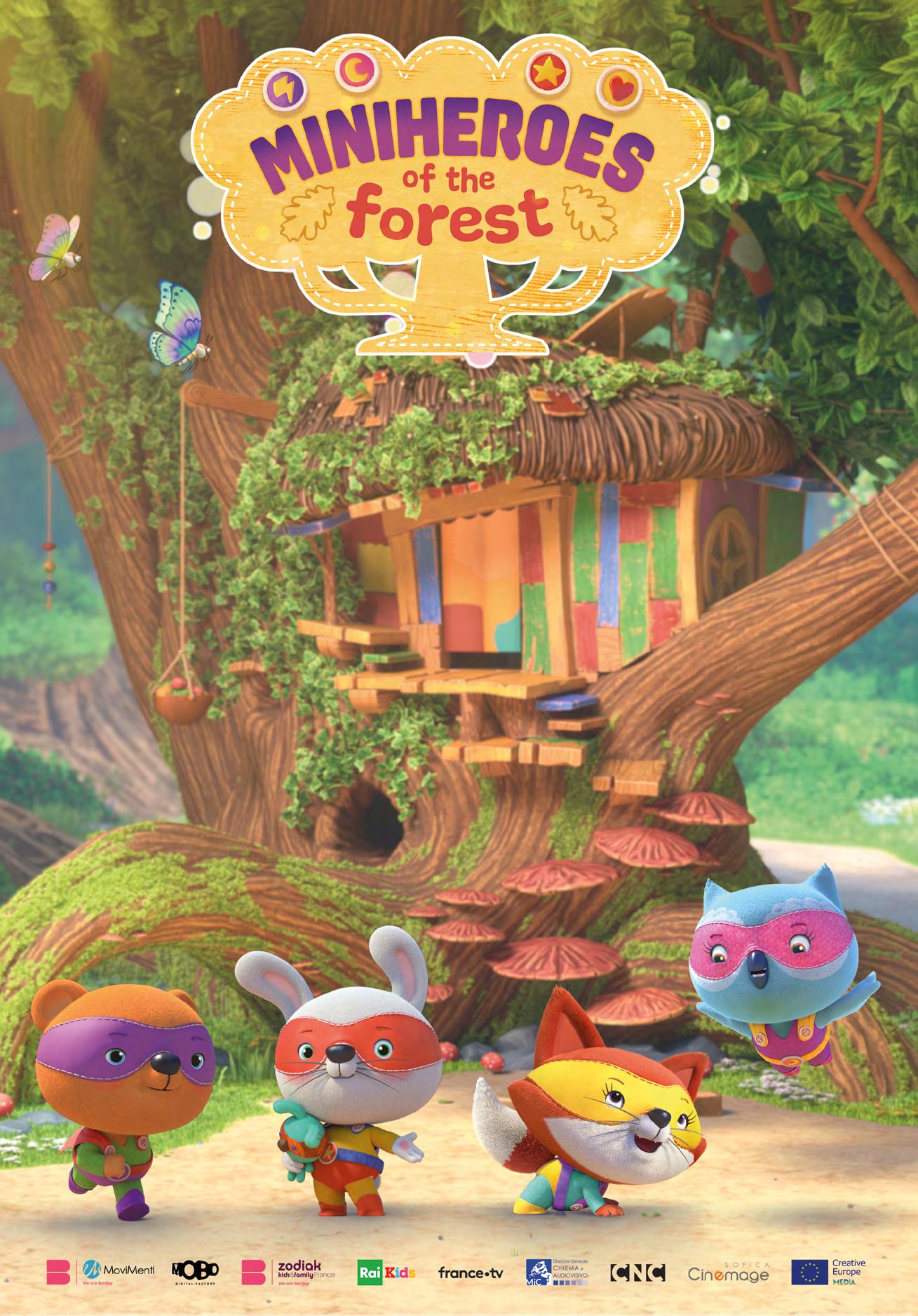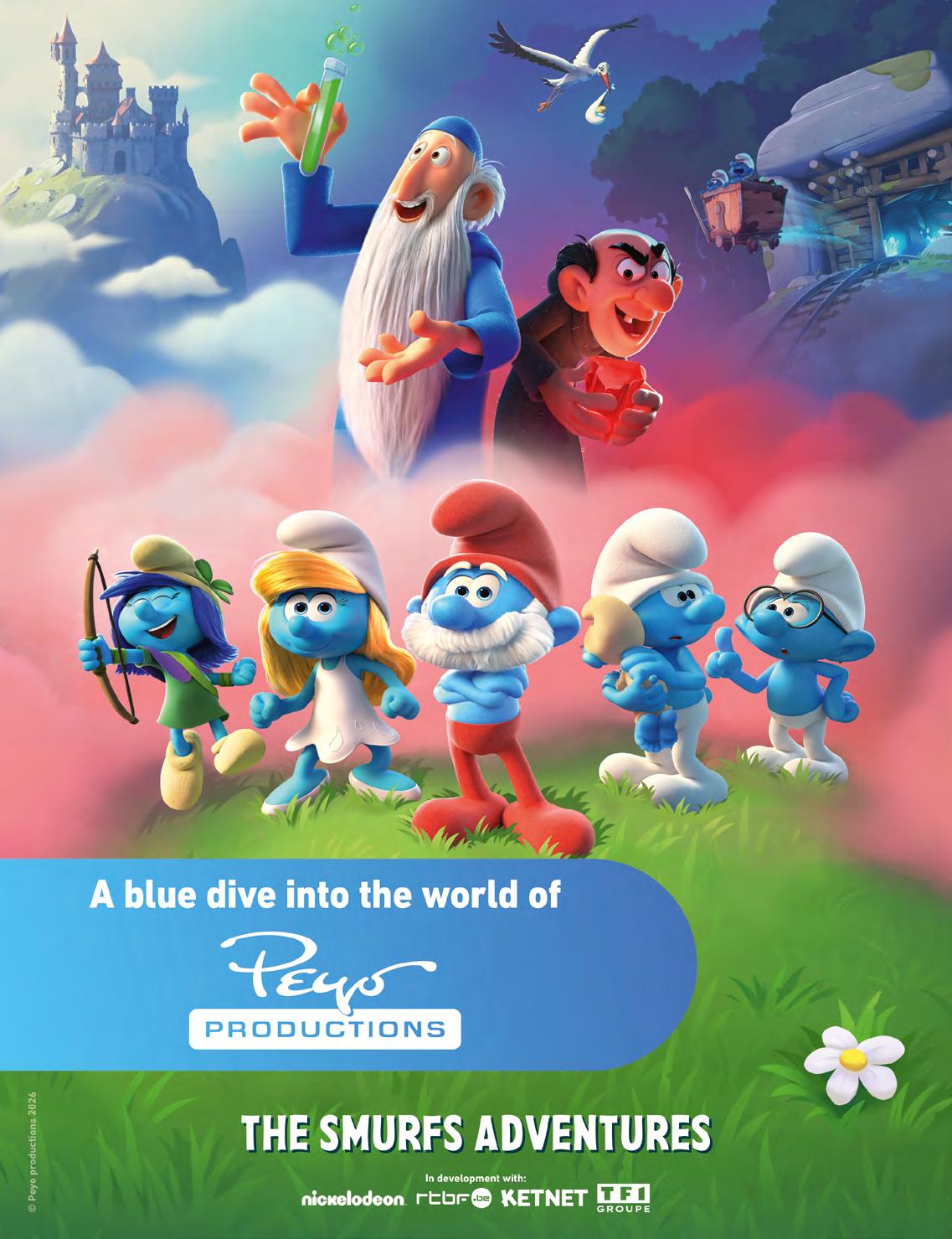
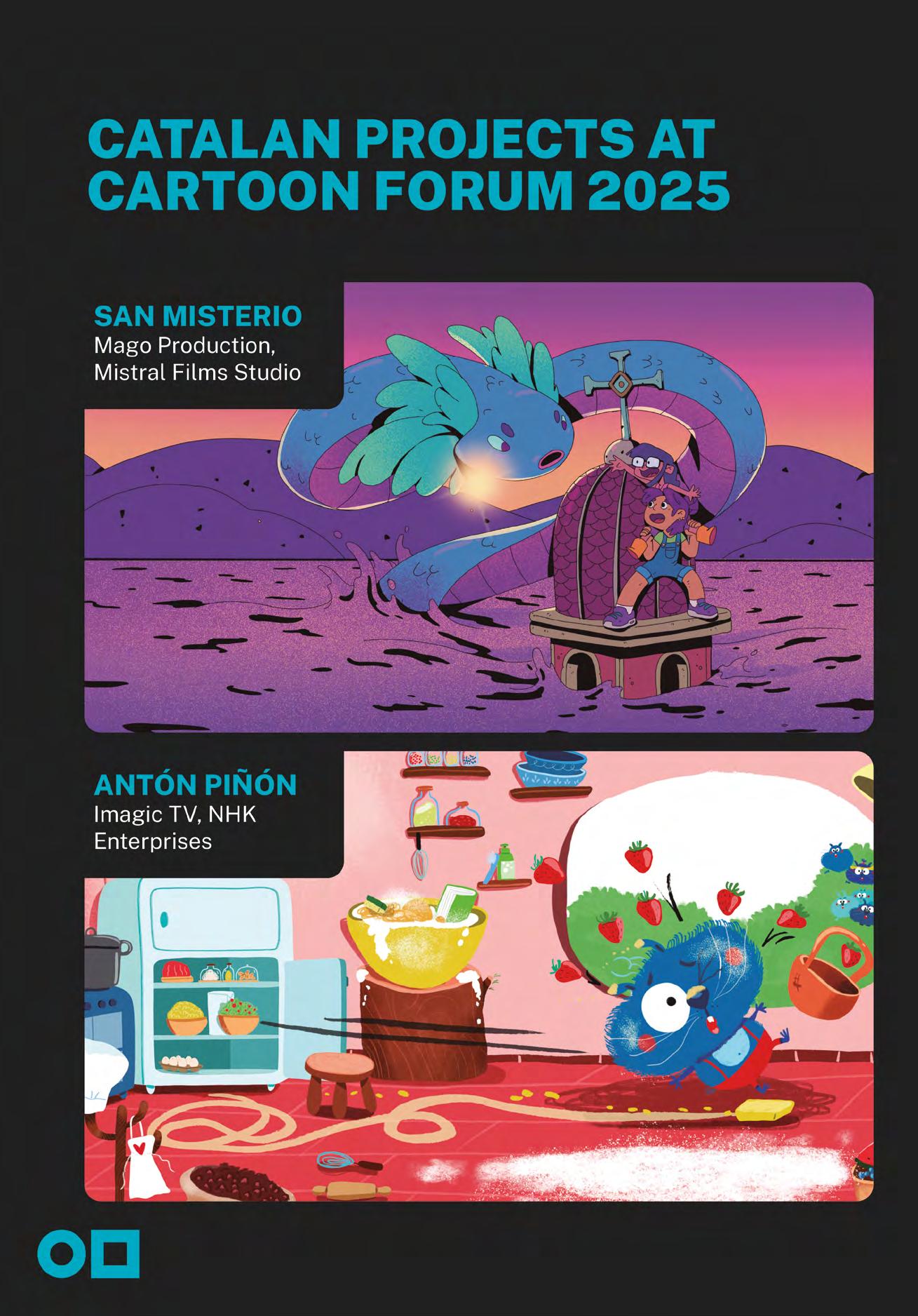





Welcome to this new issue of European Animation Journal. In this edition, we not only document the latest industry innovations announced during this challenging period but also provide market analysis and trends to equip our professional readers with new tools for evaluating developments in their future projects.
As with every release, this season we will undertake an international tour to explore market innovations and projects to follow. Beyond MIPJUNIOR and MIPCOM, where this issue makes its print debut with our dedicated stand and distribution, we will also cover other events with exclusive editorial content and our presence, including the Riga International Film Festival, CEE Animation, Cartoon Springboard, Cartoon Business, Cinanima, and ending with the unmissable Asia TV Forum in December.
Finally, in response to market developments and the desire to connect and promote European animation on a global scale rather than just regionally, we will launch a rebranding of our young publication that we can’t wait to announce and share with you! This rebranding will help us reach a broader international audience of industry professionals and establish a stronger presence at major global sector events, supported by improved digital features. Stay tuned!
In the meantime, enjoy your reading as always!

PUBLISHER
BM Srl
EDITOR-IN-CHIEF
Cristina Angelucci
EDITORS
Serena Previderé
GRAPHIC DESIGN
Francesca Wolfler
SPECIAL THANKS TO
Kévin Giraud, Juliana Tartara, Nicolas Edmery, Greta Amadeo, Olivia Deane
PUBLISHING, ADVERTISING AND ADMINISTRATION
BM Srl - Via Po, 14 - 10123 Torino, Italy Ph. +39 011 1921 1996 - info@brands-media.com
PRINTING
Casma Tipolito - Via B. Provaglia nn. 3/B-3/C-3/D 40138 Bologna - Italy


PEYO COMPANY
From Belgium to the World - Smurfing Peyo’s Legacy
MOVIMENTI
Efficiency Meets Art: How Movimenti
Balances AI, Creativity, and Human
MOVIMENTI PRODUCTION
Miniheroes of the Forest: a Blossoming IP in Children’s Entertainment
STUDIO
Studio 100 International Showcases Diversity, Emotion, and Strong Brands
RAINBOW
Rainbow Celebrates 30 Years of Storytelling with the Return of Winx Club
STUDIO
Studio Bozzetto: Between Tradition and New Global Routes
SIXTEEN SOUTH
Sixteen South Heads to MIPCOM with Exciting New Additions to Its Award- Winning Animation Slate
ICEC - CATALAN
Discover the Upcoming Hits from Catalan Animation
JUST B
Navigating the New Animation Landscape: New Co-Production Challenges
CHILDREN’S MEDIA CONFERENCE
The Business of Literary Adaptation
CHILDREN’S MEDIA CONFERENCE
Animezing!
WILDBRAIN
Focus on New Audiences’ Approach
EU–JAPAN ANIMATION WORKSHOP
Creative Alliances: The EU – Japan Animation Workshop at Expo 2025 Osaka
Creating Worlds and Building Communities: Inside Gaming with Dáire Bohan
EUROPEAN AUDIOVISUAL OBSERVATORY
European Animation: Strong Production, Weak Admissions as U.S. Titles Dominate Global and Regional Markets AMPERE ANALYSIS
Downturn and the Role of Franchises


PJB
Rise of Japan’s Content Appeal in Europe: Causes
Effects
JEROME MAZANDARANI
How Anime is Redefining Global Animation
J-POP CULTURE
Breaking Boundaries: How J-Pop Culture Conquers Europe
MIPCOM & MIPJUNIOR
Transformation through Animation
CEE ANIMATION
CEE Animation Forum 2025 Brings Industry Leaders to Pilsen
MIA - MERCATO INTERNAZIONALE
AUDIOVISIVO
Animation’s Growing Significance at MIA
SHARJAH ANIMATION CONFERENCE
Sharjah Animation Conference: an Engine for the Region’s Creative Industry
YOUNG HORIZONS
Innovative Projects Pitched at Young Horizons
RIGA IFF
Spotlight on Baltic Animation
ASIA TV FORUM & MARKET
The New Global Content Stage
BELGIAN
Belgium
SAVE THE DATE
The Next Events to Follow!


by Kevin Giraud
Almost universally known, the Smurfs have travelled from their magical forest into the hearts of children and adults all over the world.
Now, Peyo Productions — a unit established in 2018 and responsible for creating new audiovisual content within the family-owned Peyo Company — continues to ensure the characters’ lasting presence on screen.
“I still consider myself the keeper of the village, and of my father’s legacy”, confessed Véronique Culliford. “As president [of IMPS/Peyo Company, which she founded in 1984], it is my duty to protect these characters, which is a big responsibility but also brings me joy every day. And I am blessed to be surrounded with people who share the same passion and respect for my father’s creations.”
“With such a rich foundation laid by Peyo himself — unforgettable characters and powerful stories — the creative opportunities are endless”, underlined Nele De Wilde, CCO Audiovisual & Music and Board Member of Peyo Company, who has been with Peyo Productions since the beginning. “New seasons, spin-offs, prequels and beyond are all possible thanks to the worlds Peyo created. More than just an artist, Peyo was a remarkable storyteller, and we see it as our responsibility to honor that legacy while pushing it forward.”

“If children continue to read my stories and if these stories continue to make them dream, to make them laugh, then I won’t have lived in vain…” With these words, Peyo, comic book artist and father of the beloved Smurfs, paved the way for what would be his legacy for the decades to come”.
For De Wilde, whose favorite character is none other than the mischievous cat Azrael, Gargamel’s pet, the ambition is to keep expanding this universe with the same creative energy that has been part of the Peyo Cinematic Universe since its very beginning.
First appeared in a 1958 comic book as a supporting act in a Johan & Peewit story, then became the heroes of their own comic book series. It is indeed thanks to the 2D cartoon produced by Hanna-Barbera that the Smurfs became a global phenomenon.
In 2016, despite the success of these nine timeless seasons and three Sony Pictures features, Peyo Company believed it was time to create new audiovisual content for younger audiences, aligned with modern kids’ expectations and animation styles.
It was Véronique Culliford herself, the daughter of Peyo, who decided to develop the new series, this time focusing on producing a Belgian show in the homeland of the Smurfs.
Peyo Productions was established, sixty years after the first Smurfs appeared in Peyo’s comics.
Bringing Smurfs Back to TV in the 21st Century Peyo Productions established a development and coproduction partnership with the Paris-based studio Dupuis Audiovisual (Ellipse Animation), part of the Media Participations Group. A historic partner of the Smurfs, Media Participations and its subsidiaries Dupuis / Le Lombard publish the Smurfts albums in French, with the latter still creating new stories in collaboration with Peyo Company’s publishing department.
As the executive producer, Peyo Productions was not only a crucial partner in bringing this European project to life, but it also served as the guardian of Peyo’s legacy throughout the process.
“In all our past and present endeavors, our ambition is to keep expanding this universe with the same creative energy, valuing the quality of writing, directing, animation, music, and rendering”, adds De Wilde. “And in doing so, always strive to share with audiences around the globe the sense of joy, wonder, and connection that makes these characters timeless.”
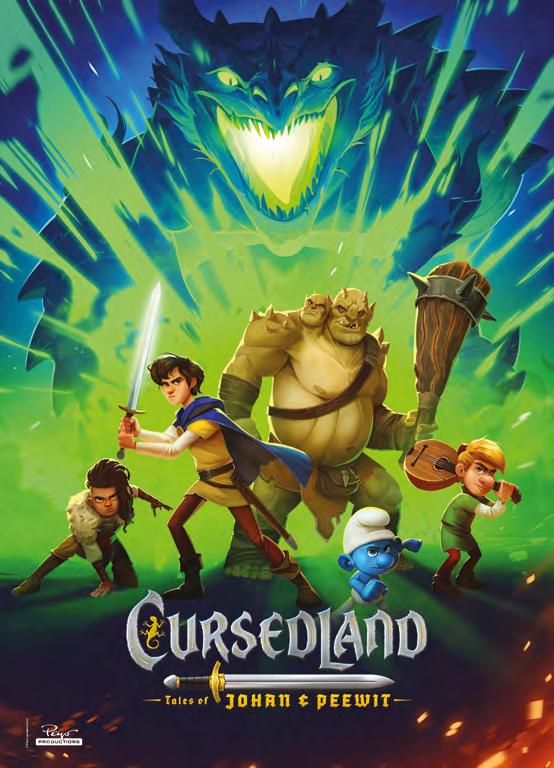
Premiering in April 2021 in Belgium before expanding to French, German, and US networks, the new animated series of The Smurfs is a Belgian-French-German co-production backed by KiKA, TF1, Ketnet, and RTBF, which has been airing on Nickelodeon in the US since the first season.


Now, in the making of the fourth season, consisting of 52x11’ episodes, Peyo Productions and its partners have introduced new characters, exciting adventures, and thrilling fun rides for children once again, true to the spirit of The Smurfs. The Smurfies — female Smurfs with their own village and a shared love for nature and adventure, along with a mutual dislike for Gargamel — were introduced in the third season, along with Gargamel’s bothersome nephews and a quirky yet cuddly ice-
breathing dragon. In season four, these popular characters will return, joining an ensemble cast led by Smurfette, Hefty, Papa Smurf, Brainy, and all the beloved heroes created by Peyo.
“Next to this TV series which is of course dear to all of us, we also have two standalone adventures in the works”, reveals François Deglain, Line Producer at Peyo Productions “These two 22-minute stories take the viewer on adventures beyond the borders of the villages and the forest, expanding even more our characters’ little blue world.”
An Unexpected Arrival will introduce a new challenge for the Smurfies as they also discover the joys of caring for a baby Smurfie dropped by a stork. Meanwhile, The Great Magic Showdown will reveal why the evil wizard Gargamel is willing to go to any lengths to capture the Smurfs. In this second special, the Smurfs will reunite with the kind-hearted whitebeard wizard-alchemist Homnibus, a longtime friend of Papa Smurf. A recurring character from Peyo’s comic books, Homnibus also appears in Johan & Peewit and always offers good advice to the sometimes-playful Smurfs....
Building on the success of the latest animated feature’s strong connection to music and its long tradition of Smurfing all day, Peyo Productions also has plans for a digital-first series focused on music. “Smurfs music was famous in the nineties and two-thousands,” emphasizes De Wilde. “All over the world, kids and young adults were dancing to the famous covers that were smurfed. It’s a different era now. Our plan is to revive the Smurf music through a new musical series, with a digital-first approach deeply connected with the realities of our times.”
More updates on that exciting project coming soon, while parents are already preparing for the next blue wave of Smurfy tunes.
Beyond the Smurfs
If Peyo’s Smurfs have become his most famous creation worldwide, the Belgian artist had many other characters in his arsenal. Now that Peyo Productions has gained experience in large-scale European co-productions, it’s time to bring those worlds to the screen. Starting with where it all began for the Smurfs: Johan & Peewit
CursedLand: Tales of Johan & Peewit, based on the characters from the world of Johan & Peewit, is currently in

development at Peyo Productions. A 10x22-minute series aimed at children aged 9 to 14, this new project will explore the origin story of Johan, a young man searching for his identity in a teen-friendly medieval fantasy setting. Along the way, Johan will collect many seemingly random characters, including a Smurf, and this ragtag group will embark on a lifechanging journey together.
Back in Annecy last year, we spoke with De Wilde as Peyo Productions confirmed they are developing this new, ambitious project. “Before this project, we worked mainly as a licensor. These three seasons of new 3D animated Smurfs helped us build our team, with assistance from our co-producers and partners. Now, we see that platforms and especially broadcasters are looking for trusted IP’s which are deemed more secure investments. Therefore, we believe it’s a good time to expand Peyo’s legacy on screen, especially now that we can present ourselves as experienced executive producers. We’re still a small organization and a family-run company, and we will continue working with external studios since we have no plans to turn Peyo Productions into a fullscale animation studio. But now, everything starts from our own designs and ideas. In these efforts, we are more than ever open to working with international partners worldwide, and we’re eager to do so.”
Cursed Land is slated for 2028, as Peyo Productions is still in the development phase of the project.
Another hit series by Peyo, set from a completely different perspective, is also in development at the lively headquarters of Peyo Productions, located in the otherwise quiet suburban Belgian town of Genval.
Benny Breakiron, derived from the eponymous comic books by Peyo, will bring to global audiences the story of Benny, a very normal young boy living a very normal life in a very normal town. Benny is just a little different from his friends, as he is quite strong—actually, super strong! Along with his
Benny Breakiron (in development) - ©Peyo Productions - All Rights Reserved

While everyone at Peyo Productions shares a love for the entire Smurf Village, each has their own favorites!
Véronique Culliford, President and daughter of Peyo. Her favorite character is Smurfette. In fact, her flowing curls inspired Peyo’s design for Smurfette’s hairstyle, and she was born just under fifteen days after the first Smurfs appeared!
Nele De Wilde, CCO Audiovisual & Music and Executive Producer. Her favorite character is Azrael, but if she has to pick a Smurf, she chooses Baby Smurf!
François Deglain, Line Producer. He’s pretty fond of Lazy, as he’s the perfect reminder that in the midst of hectic and stressful production constraints, it’s healthy to sometimes slow down and enjoy a good nap.
Luc Parthoens, Art Director (Story and Scriptwriting). His favorite character is Wild Smurf. There’s no place like the Forest!
Tom Cosijn, Art Director (Aesthetics & CGI animation). His favorite character? Handy, who else?
friends, he fights in his own very polite way to protect his town from rude villains who want to cause chaos in his quiet neighborhood. Of course, nothing ever goes as planned, and it’s possible that Benny might catch one of his infamous colds at the worst time. When Benny catches a cold, he immediately loses his super strength.
In the early stages of development, this promising 26x22’ project centered around one of Peyo’s most beloved comic characters is targeted at children ages 7 to 10, with more options coming soon.
“We’re lucky that Peyo was such a great storyteller,” underlines De Wilde. “These are timeless narratives powered by strong characters. Johan & Peewit combine comedy and epic medieval fantasy wonderfully, and Benny Breakiron is a fantastic pitch in itself. We’re excited that in the next few years, we’ll be able to work on making both of those shows a delight for modern audiences.”


In today’s landscape, AI is a hot topic that keeps industry professionals engaged in ongoing discussions. We had the opportunity to talk with Giorgio Scorza, Co-Founder, CEO, and Creative Director at Movimenti Production, about the relationship between AI, creativity, technical tools, and the process of lifelong learning.
How does Movimenti relate to the evolution of AI in the animation sector?
At Movimenti, innovation and an open mind have always been part of our core values. The shift from traditional paper-based animation to digital animation was a significant turning point for us, and today, we approach AI with the same curiosity and openness. It would be against our nature to ignore such a transformative change in the industry. Obviously, there are technical and technological limitations we must consider, just as we also set ethical, artistic, and creative boundaries that we choose not to cross. Our approach always remains human-centric.

Internally, we have a R&D department that focuses on two main areas: the development of production pipelines and the implementation of systems that enhance efficiency, speed, and traceability in our processes. Our goal is not only to optimise workflows but also to improve the quality of relationships with the professionals who work with us.
In the case of DogHead Animation, our production division, automation and monitoring are crucial issues. We manage between 8 and 12 productions simultaneously, with 120 internal workstations and around 500 collaborators working on various projects. Without an optimised and continuously monitored workflow, all this would not be sustainable. This is why we have an IT team dedicated to these dynamics, aiming to make technology a strategic ally rather than just an operational tool.
A concrete example of our operational approach is Nimbus, our proprietary production management software, designed to meet the specific needs of both TV series and film production. Another is Skills, a platform that integrates AI to map and analyse the skills of potential employees - both in Italy and abroad - providing recruiters with an advanced tool for talent scouting.
We are very focused on the future, studying how professional roles in our sector will evolve in a landscape where AI becomes increasingly present. This leads us to consider new professional roles that need to be trained immediately with an “AI-augmented” approach rather than exclusively “AI-based.”
Do you believe that this moment of transformation could serve as an opportunity to encourage people to develop new skills?
Absolutely. We are actively working on this front. For example, we are considering offering training courses fully supported by us, as well as more structured programmes focused on technological literacy, particularly related to our pipeline. Our goal is to train professionals who may not yet have specific titles but will be central in the near future. We envision hybrid
“We believe that creativity is a value that must be preserved with awareness and responsibility. This is the fundamental premise for understanding our position.”
professionals capable of bridging technology, creativity, and production, and we are convinced that this effort holds concrete value, including a social one.
The debate surrounding AI is extensive, complex, and filled with grey areas. You mentioned AI as a technical management tool, but how does Movimenti position itself regarding the use of AI in the creative field?
Movimenti is a company founded by creative individuals, built around talent and original ideas. We keep investing in these aspects and take pride in witnessing the growth of professionals, projects, and IPs developed both internally and in collaboration with our partners. Therefore, we believe that creativity is a value that must be preserved with awareness and responsibility. This is the fundamental premise for understanding our position.
When discussing AI in relation to creativity, we enter a realm that is not only technical but also philosophical and structural. At Movimenti, we work closely with our creative teams –thanks also to our synergy with the Banijay group – and we constantly seek innovative suggestions and tools.
What is crucial is to have clear, fair, and shared regulations. Ethical and legal boundaries are essential to allow the use of AI without infringing on creative rights or exploiting the work of others, while also acknowledging that creativity - by its very nature - inherently draws on references and influences. For example, in order to ensure access to the tax credit, the


Italian Ministry of Culture has introduced guidelines aimed at safeguarding the rights of authors and actors. This initiative highlights the importance of establishing common regulations within the industry and represents a significant step towards ensuring greater transparency in contractual practices. By setting clear standards, these guidelines not only reinforce the protection of creative professionals but also promote a more equitable and accountable production environment.
For us, the real challenge lies in understanding how to maintain authenticity and uniqueness in a context where production may be accelerated or enhanced by AI tools. This means redefining professional roles, clarifying which will truly be central to ensuring quality and identity in projects. I do not subscribe to the idea that “cheaper = better,” nor do I believe that AI will “kill” creativity. However, it will undoubtedly reshape it. We could potentially increase productions from five a year to sixty, but under entirely different public models and market dynamics.
This transformation is one that no one can accurately predict – not even the larger groups, which are still observing and testing phases without fully exposing themselves.
Personally, I continue to educate myself and closely observe these dynamics. I regularly attend international events such as CES in Las Vegas and keep a close watch on the evolution of AI in the United States.
Nevertheless, one thing will remain unchanged for us: creativity and humanity will always be at the core of our work. We do not judge the choices of others, but we will continue to operate within these boundaries. If we cannot uphold these principles, we are not interested.
In conversations with colleagues from other studios, does AI spark discussions about creative choices and future project investments?
Yes, we talk about it all the time. We discuss it, we imagine new scenarios, and we try to figure out how to move forward.
One aspect we cannot control is the evolution of public taste. Nowadays, video content is consumed in just 20 to 30 seconds. The risk is that this trend may lead to a flattening of content, which is critical for those involved in creativity. Simply chasing algorithm approval often results in lowering quality, producing mediocre content that may be more abundant but lacks identity. This is the real danger.
The creative challenge lies in finding a balance: we must exploit technological advancements without compromising quality. If we can achieve this, we can create more interesting and perhaps accessible results.
I believe that mainstream cinema will continue to maintain high standards in terms of delivery and the final experience. If that benchmark remains solid, those working in series or shorter formats can continue to aim high, telling stories that leave a lasting impression. On the other hand, if everything becomes driven solely by the need to “pad out libraries” or “respond to the algorithm,” we won’t get very far. At that point, even the audience will stop seeking depth.
What are the key cost areas where AI can significantly impact the production process?
We are already witnessing, and in some cases experimenting with, some concrete applications of AI that focus on technical elements of production. One example is the integration of AI in performance capture, workflow optimisation, real-time asset and animation management. These interventions, while not entirely “neutral” from a creative standpoint, do not affect the creative core of the project. Imagine a production pipeline that operates in real time, allowing you to simultaneously view the storyboard, the generated environment, and the animation while making adjustments in a work-in-progress mode.
Such a system demands new skill sets – hybrid roles that blend creativity and technical expertise – but can lead to cost
“Our goal is to train professionals who may not yet have specific titles but will be central in the near future. We envision hybrid professionals capable of bridging technology, creativity, and production, and we are convinced that this effort holds concrete value, including a social one.”
reductions of about 30-40% in certain stages of production. Of course, this is not a universal solution, as there are still technological and artistic limitations, particularly related to the complexity of characters and worlds.
By reducing costs and increasing production control, we can avoid outsourcing work to distant markets at the expense of the local ecosystem. Instead, we can employ young local talent and strengthen the national industry. Technology cannot be stopped, but if we prioritise promoting local creativity, even the most radical changes can have a positive impact. It’s crucial not to lose sight of the meaning behind our job and the reason we do it.
Another important yet often underestimated aspect is environmental impact. When discussing efficiency or innovation, I also think about reducing energy consumption, minimizing plastic usage, and optimising space. For instance, DogHead was designed with sustainability in mind: it features continuous recycling, natural ventilation through the inclusion of real trees inside the studios, and energy recovery systems. If AI allows me to save machine hours, optimise server performance, or centralise processes that would otherwise be distributed in a more costly manner, then that’s a significant advantage. Because the production efficiency gained also brings a positive environmental impact, and I truly believe in that.
However, if the primary motivation is financial gain, it’s unlikely to generate long-term value. As entrepreneurs, we understand the importance of efficiency, but the real value lies in the ability to bring products to market faster, with greater creative control, without sacrificing quality. Most importantly, we should ensure that creative roles are not diminished in the process. While the roles may evolve - and an animator might shift from working frame by frame to directing a digital actor within software - they will still be animators, and their creative contributions will remain fundamental.
I prefer to invest in initiatives that make sense over time and create culture, awareness, and quality work. We must remember that we are creating products designed to engage
and excite human beings. Focusing solely on optimisation can be a dangerous risk; it could lead to cultural stagnation. That’s why we must always keep our focus on why we do this work and who we do it for.
In implementing the tools to create a more sustainable work environment, are there any technical challenges you are facing?
Yes, definitely. We encounter limitations that we have to work around. However, our goal is to be prepared for when those limitations are lifted. This approach is something I have always followed, even at the editorial level: prepare in advance, even when others may not be focused on it yet. This proactive mindset is part of our core identity and cannot be forced or faked.
For instance, we began investing in YA before it became a market trend. The same goes for anime; we were actively working in that area before demand surged. This forwardthinking strategy allowed us to be well-positioned with the necessary skills and projects ready when the interest peaked.
I now see a similar opportunity emerging with AI and the technological optimisation of the creative process. I believe that the automation of certain technical aspects is an inevitable evolution, and it can offer significant benefits if managed intelligently.
“As entrepreneurs, we understand the importance of efficiency, but the real value lies in the ability to bring products to market faster, with greater creative control, without sacrificing quality. Most importantly, we should ensure that creative roles are not diminished in the process.”


3D animated comedy adventure series
Miniheroes of the Forest continues to capture the hearts of young audiences, making clear that the journey of these lovable characters is just beginning.
Each day after school, kids across Italy and beyond eagerly wear their imaginary Miniheroes costumes, ready to join Gabin, Gaston, Jade, and Juliette on exciting adventures that celebrate friendship, teamwork, and the beauty of the natural world. Whether it’s Gabin’s comforting Bunny Hug, Gaston’s joyful Beary Bounce and Roll, Jade’s intuitive Foxy Ear, or Juliette’s watchful Owly Eye, every child finds a connection to these playful woodland heroes who transform ordinary afternoons into extraordinary experiences.
From Book to Screen
Based on the beloved book series created by Bénédicte Rivière and illustrated by Dan Taylor, Miniheroes of the Forest has evolved from page to screen with warmth and wonder. Originally published by dynamic French publishing house Auzou and distributed in around 15 countries, the beloved adventures of the four cubs have taken on new life as a 3D animated comedy-adventure series, thanks to the collaborative efforts of Movimenti Production, Mobo, Zodiak Kids & Family France, Topo Gigio Srl, with the participation of Rai Kids, and France Télévisions
Distributed worldwide by Banijay Kids & Family, the series is quickly gaining momentum in both domestic and international markets. The show consists of 52 vibrant episodes, each

around seven minutes long, perfectly tailored for young viewers. After a successful preview broadcast in October, the full series is available in Italy on Rai Yoyo and RaiPlay, and in France on France 5 and Okoo.
At its heart, Miniheroes of the Forest taps into the timeless magic of imaginative play. With each episode, viewers are reminded that the smallest acts of kindness, courage, and curiosity can lead to the grandest adventures. The series doesn’t rely on traditional superpowers - instead, it celebrates
“The Miniheroes quickly captivated young audiences with their charm and encouraged kids to discover their own mini-mega powers through play and fun. Following the tremendous success of the series, we wanted children to have the opportunity to enjoy the Miniheroes at any time of the day.”
- Cristiana Buzzelli, Chief Operating Officer at Movimenti Production -
the real emotional strengths that children can relate to: empathy, communication, optimism, and care. This authentic approach has not only resonated with families but has also positioned Miniheroes as a standout property in the growing world of children’s IPs.
With the interest for Miniheroes of the Forest growing, leading agency in Europe for strategic licensing management Starbright Licensing has joined the journey, acquiring the rights for the Italian market and setting in motion a robust licensing strategy. Their recent partnership with Materia Entertainment promises to expand the series’ reach far beyond the screen.
Unveiled at Milano Licensing Day 2025, the official mascots of the series were a standout highlight, capturing imaginations and creating memorable meet-and-greet experiences that thrilled industry insiders. These mascots are just the beginning of an expansive programme that includes experiential events, promotional campaigns, and immersive licensing projects that will bring Miniheroes to life.

Expanding its storytelling presence, Miniheroes of the Forest is also poised to make a big splash in the Italian publishing market. Fabbri Editori, part of the prestigious Mondadori Group, is now the official Italian publishing partner. New book titles inspired by the series are set to launch as early as this fall internationally, ensuring that children can continue to enjoy the Miniheroes’ adventures on the printed page.
Music also plays a vital role in the Miniheroes universe. In collaboration with Universal Music Italia and Rain Frog, the first original songs, along with the series’ official theme, have been released across major platforms including Spotify, Amazon Music, Apple Music, and YouTube. These charming songs are more than catchy tunes; they are designed to accompany children throughout their day - from morning routines and playtime to meals and bedtime - offering a multisensory connection to the world of Miniheroes. With a total of 13 original songs set for release, young fans can expect even more music-filled moments in the coming months.
As Miniheroes of the Forest prepares for its full Italian broadcast debut in February 2026 and new licensing deals on the horizon, the IP is positioned for long-term success. Its unique blend of heart, humour, and high-quality storytelling makes it a powerful contender in the global landscape of children’s entertainment.
Whether through music, books, live events, or TV screens, the Miniheroes are ready to grow alongside their fans, reminding children everywhere that big things often come in small, forest-friendly packages.
of the Forest
Genre: Comedy/ Adventure
Format: 52x7’ – 3D
Target: Preschool
Production: Movimenti Production, Mobo, Zodiak Kids & Family France, Topo Gigio Srl
Broadcaster: Rai Kids, France Tv
International Distribution: Banijay Kids & Family, New Notes Studio
School’s over and its playtime for the Miniheroes. With their masks and caps, Gaston the bear, Juliette the owl, Jade the fox and Gabin the bunny transform ordinary playtime into a series of endearing and hilarious mini-mega-powered adventures that the woods have in store for them.
“We believe Miniheroes stands out as the most promising pre-school property, offering captivating storylines and all the essential elements needed to develop a long-term, vibrant and sustainable licensing programme.”
- Giada Paterlini and Isabella Barone, Starbright Licensing -

At this year’s MIPCOM, Studio 100 International unveils a line-up that perfectly reflects the company’s DNA: high-quality kids’ and family entertainment with global appeal.
With standout animation productions, the distributor highlights storytelling that combines humor, action, and heartfelt themes to inspire young audiences worldwide.
LOUCA – Comedy, Courage, and Friendship
Adapted from Bruno Dequier’s best-selling French comic series, Louca (produced by French Media Valley and Belvision from Belgium) turns a beloved publishing hit into an energetic animated series (26 episodes x 24 minutes, for ages 6–11, scheduled for delivery in 2026). The story centers on Louca, an ordinary boy whose life takes a turn when he meets Nathan—confident, athletic, and a ghost only Louca can see. Guided by Nathan, Louca navigates football triumphs, classroom challenges, and the rollercoaster ride of first love.
While football shapes the story, the series goes beyond sports, exploring themes of resilience, friendship, and the courage to believe in yourself and push past limits. With diverse

characters and strong female roles, Louca appeals to both boys and girls, providing broadcasters and licensees with a fresh, inclusive, and inspiring property.
“Louca is a lively comedy that blends humor, heart, and high school life! Set on the football field, it tells a broader story of courage, friendship, and self-belief. With a diverse cast and values that cross borders, Louca reflects the world young audiences live in and connects with them through relatable characters and engaging, funny stories,” says Dorian Buehr, Head of Global Distribution, Studio 100 International


MORTINA – Spooky Fun with a Heart
Based on Barbara Cantini’s internationally successful book series (over 500,000 copies sold in 30 countries), Mortina, produced by Cartobaleno in Italy and Ireland’s Treehouse Republic, brings quirky charm and spooky fun to screens worldwide. This 2D/CG series (52 x 12 minutes, for ages 7–12) follows Mortina, a not-so-typical young zombie who solves eccentric mysteries in her crumbling family manor with her quirky crew—the Mystery Squad. Think Addams Family charm combined with Vampirina’s warmth and humor.
Combining gothic comedy with heartfelt themes of diversity, acceptance, and friendship, Mortina speaks directly to children while also appealing across generations. Each episode emphasizes the characters’ emotions, making it highly relevant to the intended audience. Its playful blend of animation, stop motion, and mixed media creates a visually unique and emotionally engaging series, positioning it as a fresh global property.
Dorian Bühr adds: “Mortina is such a wonderful story about embracing your uniqueness, filled with lots of quirky humor. We are thrilled to be part of this exciting journey of bringing this best-selling book series to screens around the world.”



VEGESAURS – Fun, Friendship and Healthy Bites
Vegesaurs combines comedy, action, and education in short stories that connect with preschool audiences worldwide.
Producer Cheeky Little Media is currently working on seasons 4 and 5, scheduled for release in early 2026, bringing the series to a total of 100 episodes. Each 5-minute episode features Ginger the Tricarrotops and her three Pea-Rex friends exploring the lush Vegesaur Valley, providing plenty of laughs while sneaking in fun lessons about friendship, teamwork, and healthy eating. The series continues to expand successfully into major international markets, including broadcasts on PBS member stations in key U.S. metropolitan areas, and is available for streaming nationwide through PBS Passport. With its vibrant animation, universal humor, and global themes, Vegesaurs is well-positioned to entertain young viewers and their families across all regions
DINO MATES – Adventures with Dinosaurs and Courage Dino Mates (26 x 11’) is a co-production between MACK Magic (Germany) and KiKA, created by B-Water Animation Studios with Dirk Hampel (Conni and the Cat, Pettson and Findus) and Oliver Huzly. Targeted at kids aged 6–10, the series is inspired by Europa-Park’s family attraction Madame Freudenreich Curiosités and a successful picture book series. The story follows siblings Sophie and Leo, who expect a quiet summer with their daring Grandma Clara – until they discover her secret and stumble upon dinosaur eggs. When the dinosaurs hatch with astonishing talents, each day becomes a thrilling adventure of friendship, courage, and imagination.
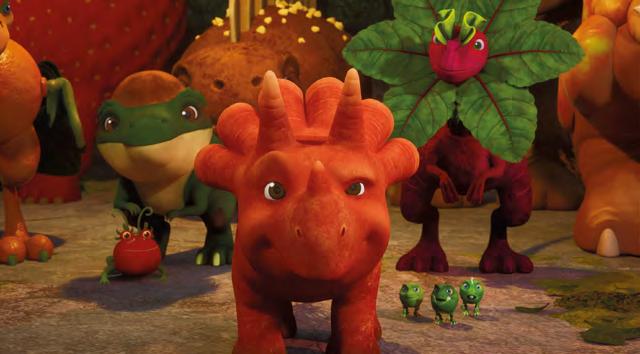
With its engaging stories and relatable characters, Dino Mates encourages young viewers to explore their strengths and embrace the power of imagination.
With Louca, Mortina, Vegesaurs and Dino Mates, Studio 100 International demonstrates its commitment to strong brands and universal stories. Each project is designed to entertain, inspire, and connect with children worldwide - offering broadcasters, platforms, and other partners compelling opportunities to engage the next generation of viewers.


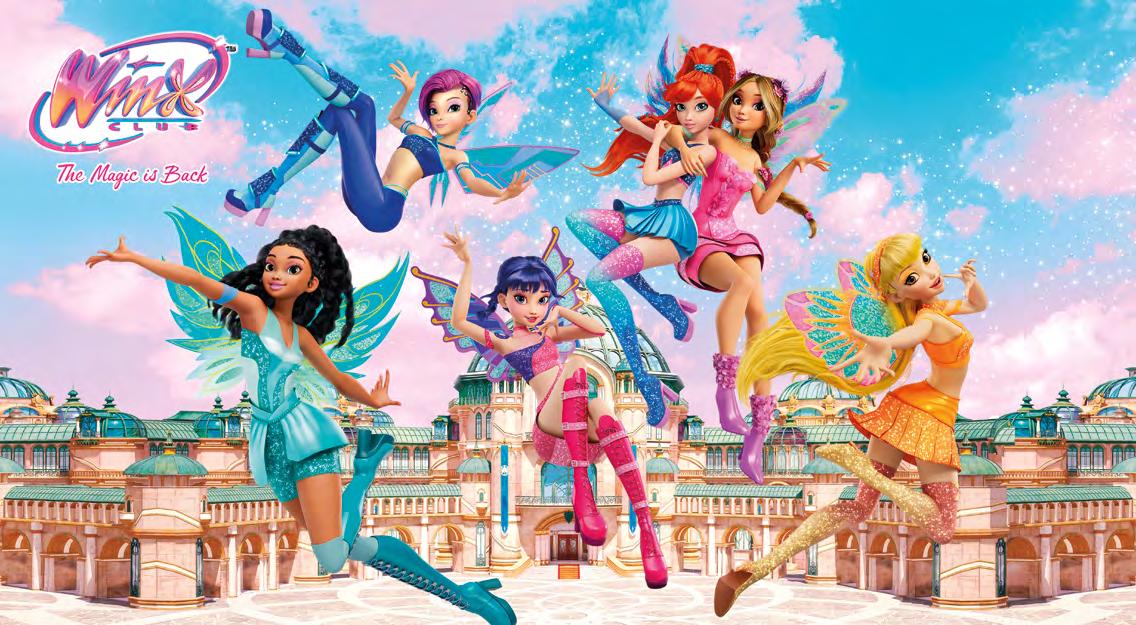
As it celebrates its 30th anniversary, Italy’s Rainbow prepares for further global expansion with its iconic series Winx Club: The Magic is Back returning to screens in a sensational reimagination.
2025 marks another year of expansion for Rainbow, the Italian production company founded in 1995 by Iginio Straffi. Over the past 30 years, Rainbow has quickly evolved from a small animation studio into a global entertainment player. And its journey of passion, creativity, and collaborations is set to continue on an even bigger scale.
Rainbow’s accelerated growth has been fuelled by acquisitions and the major partnership with TEC Movie. This partnership will allow Rainbow to execute its expansive strategy to grow its existing IP library and develop innovative new shows that resonate with global audiences and tell valuable and engaging stories that instantly connect with the audience.
Boasting a “Made in Italy” DNA that has been catering to global trends from day 1, Rainbow has exported iconic Italian creativity, talent and innovation to over 150 countries. This ethos is perfectly embodied by the hit saga Winx Club, with its distinctive iconic look and fashion flair. The timeless fantasy adventure property, set in a vibrant world of magic, friendship and courage, turned 20 in 2024, and is now ready for a huge comeback bound to ignite a new era of enchantment with Winx Club: The Magic is Back. This thrilling CGI animated reimagination features a stunning storyline and visuals that



bring the Magical Dimension to life like never before. But the action-packed tale of a 16-year-old girl called upon to save the destiny of millions is also a coming-of-age story focusing on self-discovery and the value of friendship, showing a world where our varied personalities and talents make us invincible when we unite for a common good.
As the largest Italian studio for 3D and VFX animation production for TV and cinema – constantly exploring the opportunities offered by the latest technologies – Rainbow called on its great expertise to create a vibrant new look and modern feel for Winx Club: The Magic is Back, designed to appeal to contemporary audiences. With animation split between Rainbow’s studios in Italy and its headquarters at Bardel in Canada, the CGI teams have created stunning detail
Inspiration often comes from real-world places – for instance, Gardenia evokes a miniature New York and Bloom’s house is inspired by a SoHo residence; Alfea draws from the architectural style of Rome’s Coppedè district, an eclectic blend of Italian Renaissance and Art Deco, all reinterpreted with a modern twist.
for a breathtaking visual experience. State-of-the-art effects infuse each magical fairy transformation with dynamic lighting and detail that highlights the beauty and power of the fairies and the intricate textures of their sparkling outfits.
The Winx Club fairies have always shown unique style, with an Italian sensibility and a love of different outfits, originally created by professional fashion designers, that audiences have been praising from the first season onwards. To ensure the characters always look their best, the team researches fashion trends and designs individual mood boards.
The settings are intended to captivate viewers and transport them to a world of pure wonder. Locations are inspired by the universe of the original Winx Club creative bible, but 3D allows each set to be shaped as a tangible place, giving them a more modern and contemporary look.
Reaction to the eagerly awaited first 13 episodes out of the 26 launched in the UK on CBBC and BBC iPlayer, on Rai in Italy, on TF1 in France, and on Netflix globally, has been hugely positive and is already sparking a whole new wave of interest in the brand, standing out as one among the world’s best loved licenses in the sector.
A strong PR and marketing activity is supporting the launch along with a wide range of initiatives to enable fans to immerse themselves in the Winx Club world, from a stunning array of new products to expanding into the gaming arena with the launch of the magical role-play game Winx Club: Magix on Roblox, one of the world’s most popular and dynamic digital platforms.
And with a growing portfolio of diverse content for the whole family, which also includes the hit shows Mermaid Magic, Gormiti – The New Era and 44 Cats, Rainbow moves forward confidently into a radiant future for the next 30 years, and beyond.



There is a thread that connects the history of Italian animation with the challenges and promises of the present global scenario. That thread passes through Bergamo, through the creative and enduring walls of Studio Bozzetto. For over fifty years, the studio has been the home of the genius and irreverent spirit of Maestro Bruno Bozzetto, one of the most iconic figures in the European animation. Today, the studio – wisely led by Pietro Pinetti and Andrea Bozzetto - is experiencing a new international, dynamic, and visionary chapter, without ever losing touch with its unmistakable style and legacy.
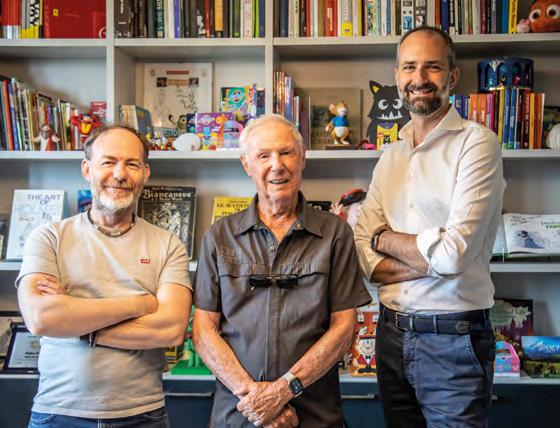
Founded in 1960 by the world-renowned cartoonist Bruno Bozzetto, Studio Bozzetto quickly gained international acclaim thanks to its unique blend of humor, satire, and artistic experimentation. Studio Bozzetto has gained international recognition with global successes such as Topo Tip (distributed in over 160 countries), The Game Catchers (Season 2 currently airing on Rai Kids), and auteur shorts like the recent Sapiens? by Bruno Bozzetto. Works like Allegro Non Troppo, Signor Rossi, and countless projects –shorts, commercials, apps and games - have made different generations laugh, think, play, and look at the world through a more critical lens.
In recent years, Studio Bozzetto has intensified its efforts to build partnerships with international players across Europe, Asia, and the Middle East. This strategic move is not merely commercial - it represents a deeper ambition: to encourage cultural exchange and fuel the development of original, globally relevant content and storytelling.
At the heart of this transformation is a new wave of projects that demonstrate how animation can be both rooted in national identity and open to the world.

Pino & Shinoby: A Cultural Bridge for Children
A landmark title in this new direction is Pino & Shinoby, a preschool animated series co-produced with YTV , one of Japan’s leading networks behind iconic series like Detective Conan, Yatterman, and Inuyasha, which have captivated international audiences and shaped the history of entertainment. The project is also supported by RAI Kids, emphasising the public broadcaster’s commitment to international content for younger audiences.
Due for release in summer 2026, the show unites two distinct creative worlds of Italy and Japan into a format designed to entertain, educate, and connect.
Each 5-minute episode (26) follows the everyday adventures of Pino, a curious Italian boy inspired by Pinocchio, and Shinoby, a tiny, endearing ninja who originated as a mascot for YTV’s 60th anniversary and is now expanding his presence beyond television to multiple platforms, including YouTube, X, and other social media.
The show’s innovation lies in its dual-language dialogue: Pino speaks Italian and Shinoby speaks Japanese. A narrator guides the viewer, enabling understanding without diluting the authenticity of either character. Director Andrea Bozzetto, studio’s current creative director, explains: “We didn’t want to
flatten the characters into a single language or culture. This is about celebrating differences and showing that friendship and learning thrive on diversity.”
The show represents a broader cultural diplomacy effort - it’s one of the first animated projects born from the Italy-Japan international co-production agreement, and in this frame, it has made its exclusive world premiere at Expo 2025 Osaka
The Return of a Classic: Signor Rossi Reimagined While the studio charts new international waters, it also revisits its own heritage with the return of Signor Rossi, the beloved everyman of Italian animation who has been featured in many animated shorts and three successfull feature films destined to both TV and cinema. Created by Bruno Bozzetto in the 1960s, Rossi was the humorous embodiment of the average Italian man’s joys and frustrations, navigating everything from bureaucracy to modern life’s absurdities. Now, he’s back - as Rossi Modern Times the series reinvents him for the present, stuck in the 1960s but living in the 2020s, battling smart homes, cryptic remotes, and digital overload with the same clueless charm and dry wit that made him famous. His dog, Gastone, is still by his side.
“Rossi has always been a mirror,” says Pietro Pinetti, CEO of Studio Bozzetto. “He’s the observer of change, both bewildered and amused. That’s why he still works today: he’s all of us, trying to make sense of a world that’s moving too fast.”
Rossi targets both nostalgic adults and curious new audiences, showing how legacy characters can evolve without losing their essence. A fresh visual style, contemporary settings, and sharp, witty scripts ensure Rossi is once again ready to speak truth with laughter.
A Studio Between Past and Future
Pino & Shinoby and the return of Signor Rossi perfectly encapsulates the studio’s philosophy: to remain anchored in tradition while setting sail toward new frontiers. From hand-drawn satire to cross-cultural preschool programming, from the whimsical Signor Rossi to a ninja boy and a wooden puppet in modern-day Tokyo, Studio Bozzetto proves that animation is not just a genre or a market. It’s a language. And it’s a language they speak fluently—across decades, across cultures, across generations.

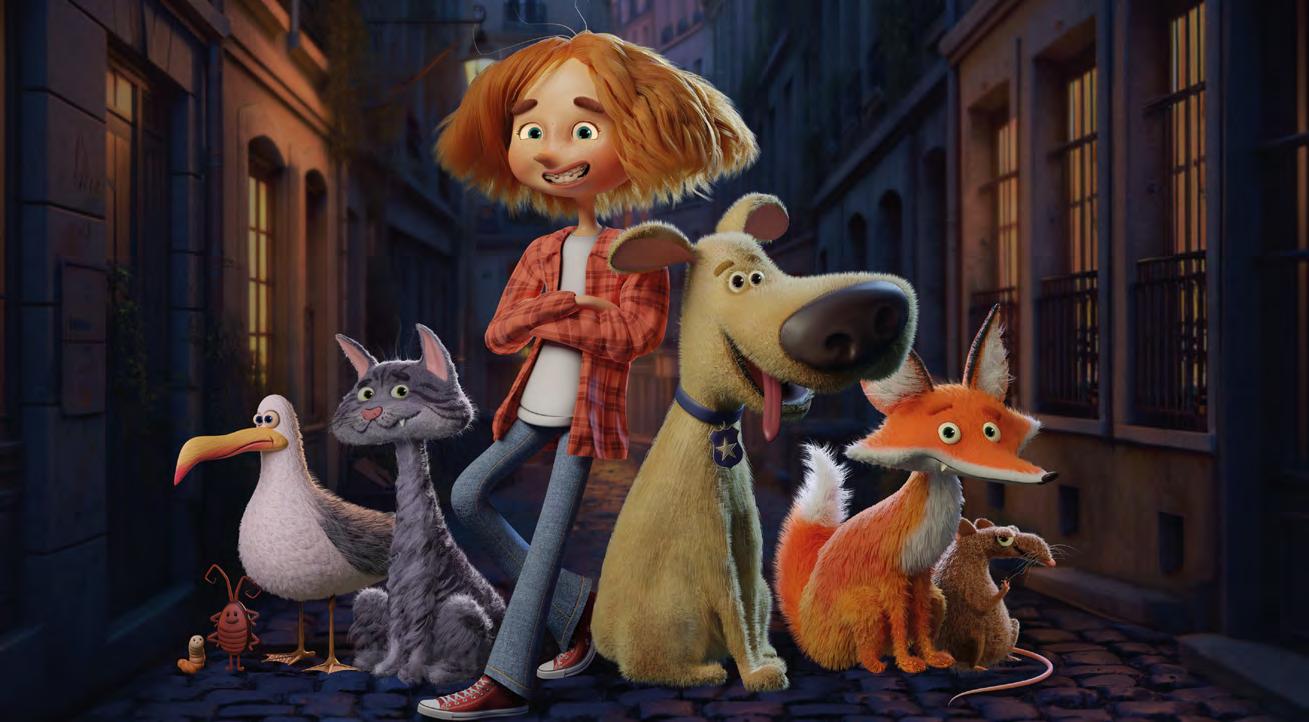
SIXTEEN SOUTH
Award-winning UK kids’ independent production company, Sixteen South, is heading to MIPCOM with a range of new distinctive animation titles to enhance its impressive slate.
The Northern Ireland-based studio is known for creating, producing, and distributing innovative, entertaining, and meaningful content with heart for children and families around the world.
Its beautifully crafted animation series, which include Lily’s Driftwood Bay, Claude, ODO, and Coop Troop, have won over 100 international awards, including two Emmy® nominations, the BAFTA Independent Children’s Production Company of the Year award, and the Prix Jeunesse.
Sixteen South arrives in Cannes fresh from Cartoon Forum in Toulouse, where it presented its beautiful new TV Special, This Moose Belongs to Me (1X24’), to a highly receptive audience of buyers and prospective partners – the second highest attended at the event. The witty and thought-provoking animated special is based on the picture book by international best-selling author Oliver Jeffers, whose award-winning books include best-selling titles such as How to Catch a Star, Here

We Are, Lost and Found, and Where to Find a Star (Harper Collins Children’s Books).
In This Moose Belongs to Me, Wilfred owned a moose. He hadn’t always owned a moose. The moose came into his life a while ago, and he just knew that it was meant to be his. He thought about calling him Marcel. Most of the time, Marcel is very obedient, following the many rules of How to Be a Good Pet. But imagine Wilfred’s surprise when, one dark day, while deep in the woods, someone else claims the moose as their own. It’s a witty and thought-provoking animated special about whether any of us ever truly own anything. Sixteen South is looking for global broadcast partners for the special.
The company is also seeking new partners for highly distinctive animations, The Retrievers (26 x 22’) and Mixmups (52 x 10), for which it holds third-party distribution rights.
In The Retrievers, Scooby Doo meets Ocean’s Eleven in a beautiful CGI animated series about an extraordinary girl and her loyal dog who solve impossible crimes with the help of a rag-tag bunch of street-smart animals.
Set on the sultry streets of Paris, this comedy-led mystery adventure series follows two best friends – 11-year-old Molly and her dog, Otis – as they embark on a series of hilarious, action-packed, crime-busting missions. Investigating crimes that have frustrated Molly’s dad (a lovable police inspector of questionable ability), the unconventional detective duo is helped and supported by a group of undesirable street

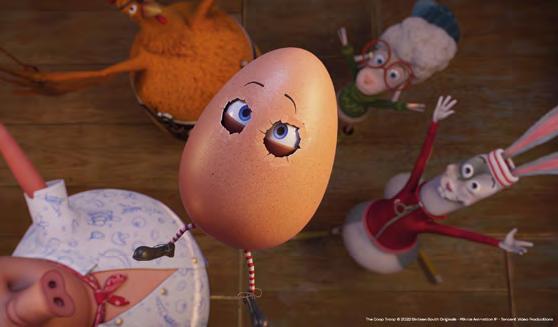
Coop Troop
animals – a rat, a fox, a cockroach, a stray cat, a seagull, a maggot, and a bluebottle – because to fight crime in a city as vast as Paris, you need eyes and ears on every corner. When the grown-ups fail to catch some of the worst crooks the city has ever seen, it’s down to an oddball girl, her loyal dog, and a wild bunch of amateur animal sleuths to save the day and keep the streets safe!
Already a huge success on Channel 5’s Milkshake in the UK, Mixmups is a magical, joyous fusion of British-made stopmotion, CGI, and 2D animation. It follows the fun adventures of three pre-school friends: neat and tidy Pockets, creative and inventive Giggle, and boisterous and physical Spin. They live in a Helter-Skelter home in Mixington Valley alongside their companions, Roller Guinea and Yapette, the guide dog. With the help of their trunky-beaked guardian, the Lucky Loover Bird, each episode sees the friends ‘Mix up the Magic’ of play and imagination with their magical wooden spoon and mixing box, transporting themselves to a host of charming and comical adventures!
Created by experts in early years play theory, world leading animation studio, Mackinnon and Saunders and a panel of child consultants, this stand-out-series celebrates preschoolers’ love of mixing and combining items to build play journeys whilst comically exploring themes of teamwork, friendship and flexible thinking, as well as skilfully and authentically including the lived experience of childhood disability and innovative inclusion by design.
With these excellent new additions to the Sixteen South slate, the company is proud to do what it does best: creating, producing, and distributing the highest-quality television for every child in every home in every country worldwide.

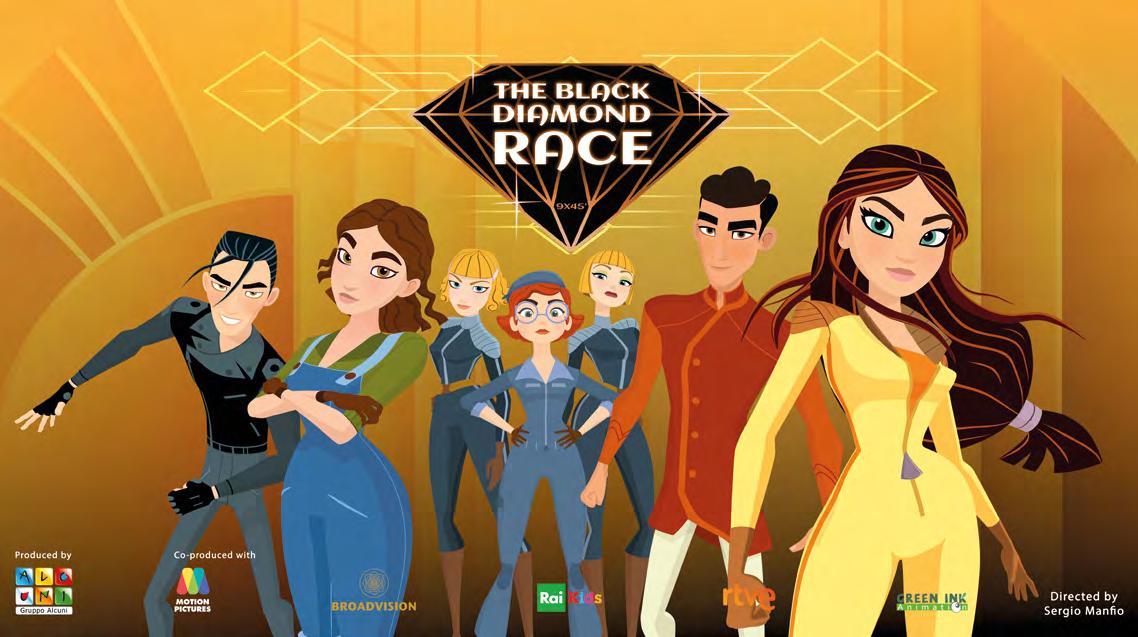
Here are some highlights from Catalan animation production companies attending MIPCOM 2025.
DeAPlaneta Entertainment
DeAPlaneta Entertainment returns to Cannes to preview the third season of MILO, one of their flagship brands, which has expanded with short-format series and a more energetic, music-infused narrative. Following the company’s full acquisition of the MILO property in 2025, the series continues to air in over 170 countries and recently debuted on PBS Kids in the United States.
They also introduce the first episodes of two highly anticipated family franchises launching in 2026: Karters, coproduced with Mediawan Kids & Family and for which Tomy International handles the international master toy license, featuring brave girl pilots racing through the magical realm of Unicornia; and Underdog, co-produced with Superprod Group and based on the iconic character originally created in 1959, bringing the beloved canine superhero to a new generation through 52 11-minute episodes.

Regarding their classics portfolio, DeAPlaneta Entertainment continues to strengthen some of the most beloved brands, including Maya the Bee—celebrating its 50th anniversary in 2025—Bernard the polar bear, Around the World with Willy Fog, and the reboot of the iconic anime character Grendizer U/ Goldrake, which recently premiered on RAI in Italy, marking the franchise’s return after nearly five decades.


Goldbee Entertainment
The Catalan studio spotlights season 2 of Good Vibes – Stronger Together (20x25’), a compelling series that masterfully blends humor, heart, and authentic stories about friendship, culture, and growing up. The show celebrates the messy, inspiring journey of finding your voice together through genuine character development. In Season 1, viewers witnessed a diverse group of kids who, after being punished for a fire alarm mishap, discovered that teamwork proves to be more challenging but more rewarding than expected. Season 2 strategically shifts its narrative focus to music, as these same characters boldly defy their teacher’s rigid classical rules and courageously form a band to prove themselves worthy of recognition on the school’s prestigious “Wall of Fame.”
Motion Pictures Entertainment
This year at MIPCOM, the company showcases a revamped catalogue featuring two key launches that highlight its strategic shift towards premium content development.
The Black Diamond Race is an original in-house animated series for pre-teens, co-produced with Gruppo Alcuni and Broadvision for Clan TVE and Rai Kids. Its 9 episodes of 45 minutes each offer a bold, new narrative format that challenges conventional storytelling boundaries while showcasing the company’s commitment to original content with global appeal and cross-cultural resonance.
Yaiba: a major anime series (24x22’), Season 1, with Season 2 strategically planned for next year’s market cycle. Created by acclaimed mangaka Gosho Aoyama, the celebrated author of Detective Conan, and produced by the renowned animation

house Wit Studio, the series premiered in April 2025 as Shin Samurai-den Yaiba and has already secured premium placement on Netflix USA and Hulu, demonstrating strong confidence in the series’ streaming platform performance.
Peekaboo Animation
The main international launch at MIPCOM is Listen To Your Body (13x8’), an innovative edutainment format produced in partnership with Mun Films for 3CAT that marks a significant advance in children’s educational programming. This hybrid show skillfully blends live-action footage and animation clips, creating an engaging multimedia experience that caters to children’s natural curiosity about how the human body functions. The format addresses these topics in a fun, even irreverent manner that connects with young audiences, exploring intriguing questions like “why do we fart?” or “what are mucus used for?” Its unique approach makes complex

biological concepts understandable and entertaining for children ages 6-12, positioning it as a standout offering in the competitive international children’s content market. On the project side, the main focus is on The Triplets, the highly anticipated reboot of the beloved classic Spanish intellectual property that has captivated multi-generational audiences since its original release. This reimagined series is now in production with strong industry backing, marking a major investment in revitalizing iconic Spanish animation for today’s global viewers. The company aims to deliver the complete first season by December 2026, with international distribution plans already in progress to maximize the
property’s worldwide reach and commercial potential across multiple territories and platforms.
The company’s main business goal for this edition of MIPCOM is to strengthen international partnerships and explore new ways to collaborate with broadcasters, streamers, and licensing partners across diverse global markets. They focus on strategically distributing their portfolio of projects and advancing critical discussions during these particularly challenging times for the industry, as traditional revenue streams evolve and new platforms emerge. The highlight of this market is Black Moth, their innovative eco-fantasy animated series designed for kids aged 9–12, officially launching this fall across CIS and MENA territories. With its compelling blend of original music, dynamic superhero elements, and meaningful eco-positive storytelling that resonates with today’s environmentally conscious young audiences, the company views itself as exceptionally wellpositioned to meet current market demand. The attendance at MIPCOM aims to finalize several pivotal distribution deals while simultaneously initiating new conversations with potential partners who share their vision for high-quality children’s content that entertains while educating the next generation about environmental stewardship.
Tomavision
Tomavision’s participation in MIPCOM aims to strengthen the company’s presence in the international entertainment
Limbo Ville
industry, particularly in animation. At the event, the company plans to continue discussions with industry peers and aims to connect with new producers and content creators worldwide. Tomavision will also take the opportunity to stay up-to-date with the latest trends, innovations, and industry developments, focusing on exploring potential strategic partnerships that could lead to new projects.
The company’s main goal at this edition of MIPCOM is to strengthen international partnerships and find new ways to collaborate with broadcasters, streamers, and licensing partners. Tomavision focuses on distributing its projects and advancing discussions during these challenging times for the industry.
Tomavision is working to finalize key deals while starting new conversations for future opportunities.
The animation studio focuses its attention at MIPCOM on Limbo Ville, its flagship 2D animated series for children aged 6-9, which is currently moving from pre-production to production. This lively animated property features distinctive storytelling designed to engage young audiences while providing educational value. San Misterio, another 2D series targeting the same age group, is entering its financing phase with a strong creative foundation in place. While Limbo Ville serves as their main showcase at the event to demonstrate their animation skills and storytelling expertise, San Misterio represents the next major project for potential partnerships and international distribution.



by Cristina Angelucci
EAJ met with Justine Bannister, Founder and Creative Facilitator at JUST B, and one of the most knowledgeable voices in the European animation industry.
With a unique vantage point on today’s shifting market, she is producing and hosting a new initiative at MIPJUNIOR designed to foster open dialogue between producers, distributors, broadcasters, and funding bodies. Through this conversation, we aim to provide an overview of the current state of the European animation market and the challenges shaping its future.
At MIPJUNIOR, you are producing and hosting the Roundtable Session on Co-productions and Financing. Given the challenges this area presents, how does your initiative aim to support attendees?
This session is part of MIPJUNIOR’s renewed focus on networking, matchmaking, and interactive formats - moving beyond traditional panels with limited audience participation. The objective is not for attendees to pitch their own projects, but to gain concrete guidance and practical insights on several topics, such as: approaching investors; understanding


how funding, tax credits, and other mechanisms operate; broadcaster, producer, and distributor expectations; effective communication and interaction methods; and strategies for project involvement and collaboration.
The co-production and financing roundtables bring together eight themed tables, each led by two expert hosts—producers, distributors, broadcasters, and funding bodies—who will share their expertise and spark focused discussions.
Territories represented include Canada, France, Ireland, Australia, and the UK - combining local insights on tax credits and treaty partnerships with the broader strategies of international broadcasters, distributors, and studios.
Global Players add scale, market intelligence, and a broader perspective on how projects can transcend territorial frameworks. Cross-territory viewpoints are crucial, and Distribution can be a decisive factor in financing. I also wanted to introduce new voices, to ensure the exchange is as diverse and forward-looking as possible.
To complement Saturday’s co-production roundtables, Sunday features a roundtable session on monetisation and diversification, exploring digital-first strategies, brand-building, new media opportunities, and alternative business modelsbroadening the conversation beyond traditional broadcaster pathways.
What is your perspective on the current production and financial challenges facing the European animation industry?
Let’s be honest - times are tough. Broadcasters are witnessing a decline in revenues, as audiences migrate from traditional platforms and budgets shrink. Producers face pressure to cut costs, work faster, and maintain quality by streamlining pipelines and integrating tools such as AI and real-time production.
Fewer projects are being greenlit, and in many territories, broadcasters are bound by government mandates to prioritise local IPs. France is a prime example: while home to one of the world’s most sophisticated animation industries, its producers face high labour costs, strict regulations, and heavy taxation.
The post-COVID “bubble” also left its mark. During the surge, when budgets and salaries soared. With the advent of SVODs (among others), scaling back on service production, studios were left with heavy infrastructures and overheads that they could not easily adjust.
The rise of YouTube has dramatically reshaped children’s viewing habits and the wider content landscape, making it increasingly difficult for traditional producers to monetise their
Check Ampere Analysis Study on the Role of Franchises among European Broadcasters at Pages 52-53
work – a long-time coming, yet many still seem reluctant, or even unwilling, to face this reality and pivot accordingly.
If you could offer guidance to broadcasters, producers, and distributors, what would it be?
Broadcasters & Investors: If a project doesn’t fit your editorial line, be upfront and explain why. A simple ‘pass’ - or worse, silence - only leaves producers in limbo and wastes valuable time. Clear communication is both fairer and more professional. Today, non-exclusivity is also essential, as producers need their content to be available across multiple platforms to build visibility.
Producers & Creatives: Be open to constructive feedback. You don’t have to overhaul your concept, but if the same point comes up repeatedly, it’s worth considering. Regardless of the feedback, or outcome, remain professional, respect experience, and be polite - there will always be other opportunities.
Distributors: You are the frontline, with the sharpest sense of market demand. Producers you are representing need honest, realistic feedback on their projects’ prospects. Constructive insights on positioning, audience fit, or timing are far more valuable than vague encouragement, and they need to receive detail from potential investors on why their projects are not a ‘fit’
“Global Players add scale, market intelligence, and a broader perspective on how projects can transcend territorial frameworks. Cross-territory viewpoints are crucial, and Distribution can be a decisive factor in financing.”



As the sole event in the UK dedicated to every professional engaged in the development, production, and distribution of children’s content across all platforms, the Children’s Media Conference (CMC) serves as a vibrant hub for the industry. It brings together a diverse array of professionals from various sectors of the storytelling ecosystem, all of whom share their insights, discuss the challenges posed by market demands, and explore the key factors that contribute to a story’s success across different formats.
Guided by host Dr. Eddie Gamarra from Gamarra Media, a company that sells stories and builds brands across the publishing and entertainment industries, the Bestseller to Blockbuster: Shaking Up the Business of Literary Adaptations session involved experts like John Baker, Literary & Screen Agent at Bell Lomax Moreton Agency; Leah Thaxton, Children’s Publisher at Faber & Faber; Tom Beattie, Managing Director of award-winning Tiger Aspect Kids & Family (part of Banijay Kids & Family); and Bernie Bhangoo, Managing Director of the Roald Dahl Story Company. Together, they offered an insightful exploration of how children’s books are adapted for screen.
Publishers face a complex workload made of relationships with editors and authors, scouting manuscript, promising material and negotiation of deals editors, but also, they must think creatively about how their books can evolve into successful IPs while being careful not to raise expectations too early among authors.
In the publishing world, selling 2 or 3000 copies is often considered a respectable return. However, success is increasingly measured by more than just sales figures –factors such as school adoption, social relevance, and sustained engagement play crucial roles. Similarly, for screen adaptation, success isn’t solely linked to sales or celebrity endorsements. Rather, it is about the richness of the potential stories that can emerge from the source material. An author’s fame is secondary if the core idea is strong and adaptable. Even if a book isn’t a bestseller, it can still lend itself to a fully realised world on screen. This adaptability influences how the material is pitched, the potential for development into a series or franchise, and its ability to resonate with various audiences. A technique known as “pitch and flick” can help in this process, where the physical book is presented during the
pitch, helping to anchor the concept in something tangible.
When working with beloved authors and their works, the focus shifts to safeguarding the legacy of the IP and making it relevant for new audiences. A notable example is the relationship between the Roald Dahl Story Company and Netflix, which acquired the company in 2021. Even with an established catalogue, Bhangoo highlighted that her team constantly needs to strengthen the brand internally to sustain momentum and excitement, particularly regarding lesserknown works. One of the biggest creative challenges is to present these classics in a fresh light while remaining faithful to their original spirit and avoid mitigating its identity.
As the panel shifted to innovation, it was noted that one of the most powerful forms of innovation in children’s publishing isn’t digital or algorithmic, but rather authors visiting schools and engaging directly with their audience. This personal connection between children and the authors behind the books remains one of the most reliable ways to inspire enthusiasm for reading. The discussion also highlighted the potential of immersive storytelling formats to spark curiosity in children, from interactive installations to audio experiences. These alternative approaches aim to deepen a child’s love for storytelling and, ideally, guide them back to the books themselves.
If you want to find out what the next Roald Dahl’s IP from Netflix could be, don’t miss the article about The Twits on page 78!

Once considered a fringe interest outside of Japan, anime has now emerged as a cultural powerhouse, especially among younger audiences in the West. Its influence is everywhere—from streaming platforms and fashion to social media and mainstream broadcasters. Last July, at the Children’s Media Conference (CMC) a panel brought together industry experts to explore how and why anime has taken center stage in global entertainment.
Hosted by Nigel Twumasi, co-founder of the creative storytelling brand mayamada, the session Anime-zing: Why Anime Hits Different featured an impressive group of speakers: Thomas Astruc, Creator and Director of the animated TV series Miraculous: Tales of Ladybug and Cat Noir; Jerome Mazandarani, an anime producer and expert; Sarah Muller, Senior Head of Commissioning 7+ at BBC Children; and Wesley Louis, Co-Founder of The Line Animation Studio Each of them broke the ice by sharing a personal project that influenced them and created a strong connection.
A key topic discussed was the definition of “anime,” which simply means “animation” in Japan. Mazandarani argued that anime should be viewed as a medium rather than a genre, as it encompasses diverse styles, ranging from sports to horror. Ultimately, good storytelling and artistic influence are what
Explore what truly distinguishes anime from Western animation and what Western creators can learn from anime’s worldbuilding, character arcs, and fan engagement in the exclusive interview with Jerome Mazandarani on page 56!
matter most, emphasising that cultural boundaries are fluid and storytelling transcends its origins. Muller compared this fast-pacing transition to the evolution of the gaming industry, where themes have matured alongside audience expectations, resulting in stories that evolve organically and more fluidly. Notably, she also highlighted the BBC’s strategic move, beginning with established brands like Pokémon and Dragon Ball Super, and then introducing One Piece, which garnered over 25M views from viewers under 35 on iPlayer, demonstrating its significant audience appeal and value.
Nowadays, anime is experiencing a cultural moment: once a secret passion, it is now much more accessible, with a new generation of creators emerging from the fandom - it is transitioning from a niche interest to a mainstream cultural phenomenon, particularly among younger audiences, due to its distinctive storytelling, character development, and ability to address complex themes. Many anime are adapted from works by creators in their early 20s, resulting in a familiar tone of voice that resonates deeply with adolescent and young adult audiences, in contrast to the more parental tone often found in Western children’s media. As a result, the unique storytelling approach of anime has significant appeal. In this direction, Astruc credited the influence of Osamu Tezuka, who paved the way for anime to address serious themes through visually engaging narratives, and openly address characters’ emotional struggles through inner dialogue, allowing viewers to relate to their fears and doubts. This contrasts with Western animation, which often avoids heavy topics and adheres to the principle of “show, don’t tell.”

WILDBRAIN
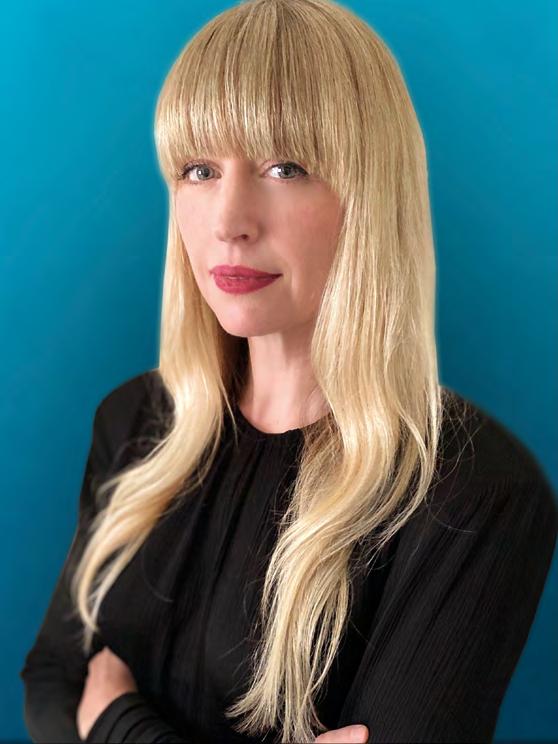
EAJ met Katie Wilson, VP Global Sales and Acquisitions, WildBrain to talk about their rich catalogue and next plans.
Tell us about some of the titles you’re bringing to market this fall!
We are attending MIPCOM this year with a slate of globally loved fan favorites and bold new IP, curated for every age and screen.
Our newly available Peanuts content, including The Snoopy Show (39 x 22’), is timeless, funny and full of heart, sure to delight both new fans as well as those who grew up with Snoopy and the gang.
Every generation of kids loves dinosaurs. L’il Stompers (65 x 5’) is a delightful and enriching series for dino-loving younger viewers, set in a colourful prehistoric world that captures the joy, curiosity and imagination that define early childhood. With the Kidscreen Award-winning Zip and the Tiny Sprouts (52 x 7’), we have a beautifully crafted series that nurtures emotional growth in preschoolers through beautifully styled visuals, warm-hearted narratives, as well as fresh, fun songs and a voice cast featuring talent from Bluey. With an already thriving YouTube community, this series is primed to blossom across new platforms.
What types of content are you seeing resonate with today’s audiences?
We’re seeing continued demand for well-known IP, strong character brands, and franchises with active fanbases. There’s

also a growing appetite for multigenerational franchises that engage kids as well as adults who grew up with the characters, like Peanuts or Strawberry Shortcake. And, of course, preschool remains a strong category, with enriching, emotionally resonant content that supports early development and delights young viewers.
These trends help shape our MIPCOM slate, where buyers will find titles that reflect this evolving demand across age groups and genres.
What do you want buyers to know?
The shows we’re bringing to market this fall represent everything that makes great kids’ and family content— engaging characters, vibrant visuals, and unforgettable stories with universal themes that inspire, educate, and entertain. They join WildBrain’s rich and extensive library of beloved
shows that inspire imaginations worldwide.
Across animation and live action, we’ve got something for every age and every platform—and we’re especially excited to be able to offer new Peanuts content to a broader market for the first time. We look forward to catching up with partners, meeting new ones and showcasing some of the terrific shows from our stacked slate.
“We’re seeing continued demand for well-known IP, strong character brands, and franchises with active fanbases.”
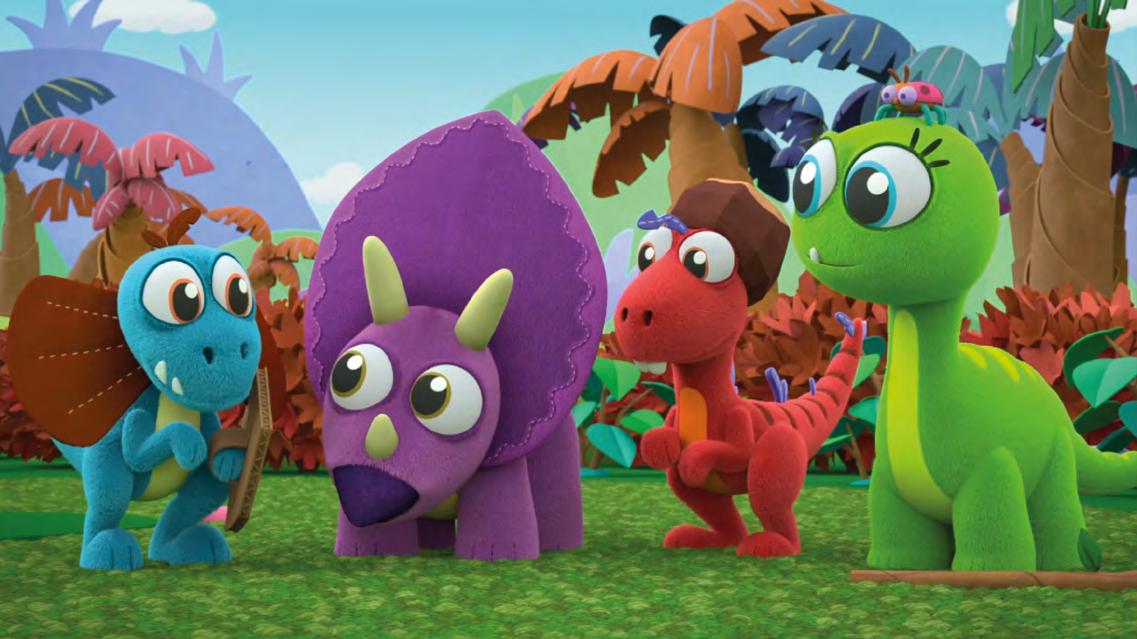

The European Union and Japan took a bold step to deepen their cultural ties through the universal language of animation.
The 2025 Expo in Osaka, Japan, offered a prime opportunity to foster meaningful cross-cultural exchanges between Japan and the EU, and lay the ground for future international collaborations. As both industries increasingly collaborate, they are combining their creative strengths to co-develop globally acclaimed films and series, blending distinct storytelling traditions, artistic innovation, and cutting-edge technologies.
Japan is the EU’s closest strategic partner in the IndoPacific region. Their relationship is anchored in a Strategic Partnership Agreement (SPA) and an Economic Partnership Agreement (EPA), both in force since 2019. At Expo 2025, these strong ties have been on full display. Held under the theme “Designing Future Society for Our Lives”, the Osaka Expo brought together 150 countries and 25 international organisations for a six-month celebration of innovation, culture, and global cooperation. The EU participated with a dedicated pavilion themed “Nurturing Tomorrow”, reflecting its political, economic, and cultural connections with Japan. This marked the first time the EU hosted its own pavilion at a world Expo since Milan in 2015, making it a historic milestone in EU cultural diplomacy.
The EU’s presence at Expo 2025 went beyond institutional diplomacy. It featured a vibrant cultural programme that

Europe-Japan Artists Residency © European Union
spanned a wide array of artistic disciplines - from traditional performing arts to digital media, including architecture, fashion, music, and visual arts.
The EU–Japan Animation Workshop
As a highlight of its cultural programming, the EU–Japan Animation Workshop took place from 24–26 September 2025. This high-level industry event brought together 30 leading professionals, including producers, CEOs, distributors, and festival directors from both Europe and Japan, and laid the groundwork for future EU-Japan co-production agreements. By combining Europe’s diversity of storytelling and financing

models with Japan’s global branding capacity and loyal fan culture, the two regions can co-create world-class animation projects that are set to serve both as creative industry strategy and a transnational bridge.
Organised by the EU in partnership with Instituto Cervantes Tokyo, EUNIC Tokyo, and Osaka Animation College and in collaboration with Animation in Europe, the workshop served as a strategic effort to develop concrete pathways for longterm collaboration between two of the world’s most influential animation industries.
Drawing inspiration from the successful ANIMAR_BCN model the workshop focused on intensive small-group roundtable discussions, each centred on a key area of industry development and designed to explore critical areas of collaboration between the European and Japanese animation industries.
The first group, moderated by Philippe Alessandri, founder and CEO of WatchNextMedia and Chair of Animation in Europe, focused on co-production. Participants delved into the strategic and operational aspects of creating joint productions across continents. Discussions covered the benefits of collaborative storytelling, access to public funding mechanisms, and the possibilities presented by international co-production treaties. They also confronted practical challenges such as language barriers, software and pipeline incompatibilities, and workforce shortages—especially considering growing trends in outsourcing.
The second group, chaired by Javier Fernández, Cultural Manager at Instituto Cervantes Tokyo, explored the intricate landscape of distribution. This session examined why certain animated works travelled more successfully than others, and the role that localisation and cultural adaptation played in that process. Participants also addressed pressing issues such as piracy, exclusivity agreements, and the lack of transparency in audience data, while considering how trade and cultural policy could have helped open access to new markets.
The third group, led by Iván Agenjo, co-founder of Peekaboo Animation and Vice-Chair of Animation in Europe, investigated the evolving field of intellectual property and development. Here, the focus was on how IPs were created, financed, and monetised in both regions. Topics included early-stage
P. The EU Film Days © European Union
To learn more about Animation in Europe and their initiatives, please visit www.animationineurope.eu/
development funding, the balance between adapting known IPs vs. creating original content, and how different ownership models impacted creators and producers. The conversation also considered how international trade frameworks could have supported a more fluid exchange of creative assets across borders.
Each group produced a set of actionable insights and policy recommendations, which were compiled into a final public report, providing a roadmap for future cooperation between the EU and Japanese animation industries.
Beyond industry dialogue, culminating with a special presentation of the EU–Japan Animation Residency works, developed through six months of collaboration between EU and Japanese artists, showcasing tangible proof of what cultural exchange can achieve. The residency brought together ten emerging animators and two curators from Europe and Japan to co-create original works inspired by traditional performing arts of the Kansai region—reinterpreted through the lens of contemporary animation.
The EU–Japan Animation Workshop also coincided with the EU Film Days, an animation-focused film festival curated by the EU Delegation to Japan and held across the country. As European and Japanese creatives navigate a changing media landscape, this workshop represents a timely intervention—one that not only reflects on current challenges but actively builds the foundations for future success. By creating space for open dialogue, mutual learning, and shared vision, the EU–Japan cooperation stands as a vital avenue for sustained growth.
By investing in collaboration at both artistic and industrial levels, the EU and Japan are building the foundations for enduring partnerships fuelled by open dialogue, mutual learning, and a shared vision.
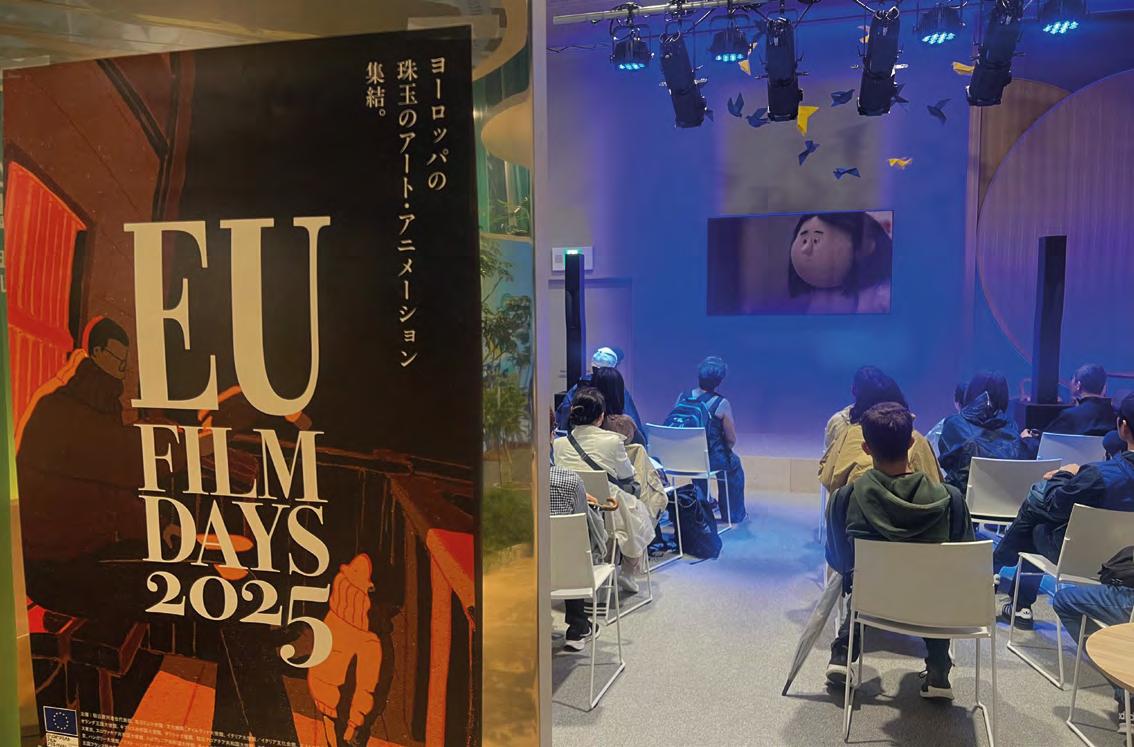

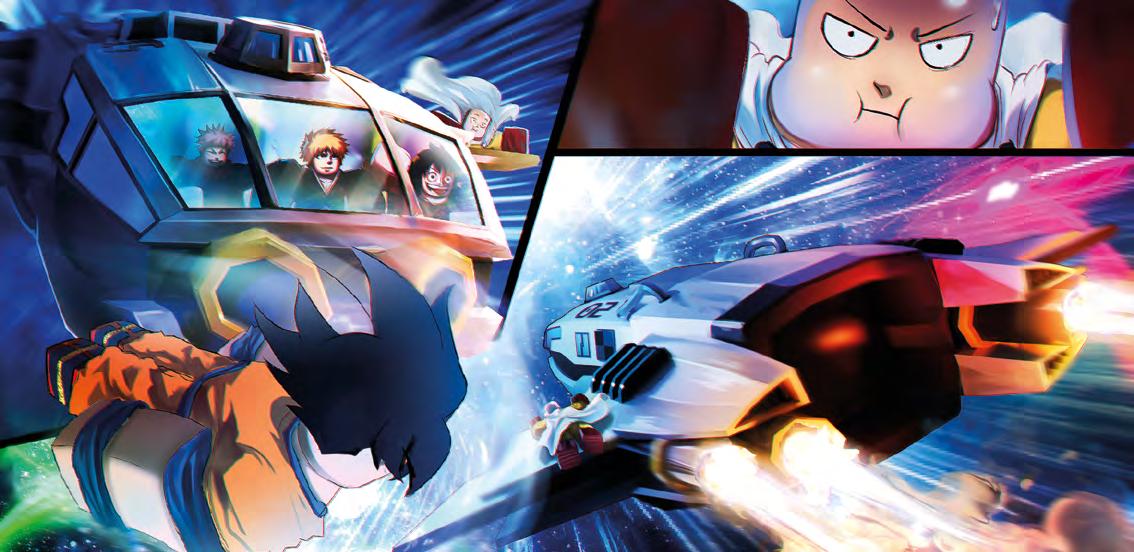
by Serena Previderè
Since childhood, Dáire Bohan has had a passion for immersing himself in the virtual worlds of video games. Today, he stands as one of the top developers on Roblox and has founded his own independent game development studio, Bura Games, cementing his legacy in the gaming industry.
At 8 years old, Dáire Bohan’s father introduced him to Scratch, a programming language developed by MIT for children. By the age of 13, yearning for more “adult” challenges, he ventured into building games on Roblox, a platform he had enjoyed as a player for some time. Dáire created games for himself and his friends, finding immense creative satisfaction in the process. What started as a hobby unexpectedly turned into a career when his first game, Runners Path, gained popularity in 2017. By 2019, his second game, Wizard Simulator, reached the #2 spot on Roblox, solidifying his path in the gaming industry.
What does it mean to be an entrepreneur in the gaming field and what challenges do you face?
The games industry is an arts industry, so there’s no single way to make it work. Some people view it solely as a business, while others see it purely as an artistic endeavour. I find myself somewhere in the middle: I enjoy both growing as an artist and sharing my work with millions of people, while also considering product market fit, data, and how

to commercialise my work. Managing the business poses significant challenges such as managing teams, making hiring decisions, and meeting deadlines.
I think the biggest dare is breaking through in the beginning. Once you gain experience and a following, it becomes much easier to release new titles. There’s also a huge mental barrier to overcome. The game industry is a risky business of booms and busts, and you will likely fail many times before you succeed. I developed dozens of games over many years before one found its niche. The only reason I didn’t lose my mind in the process was that I never expected immediate success. I suspect it’s much harder for those who start off with higher hopes and a shorter timeline.
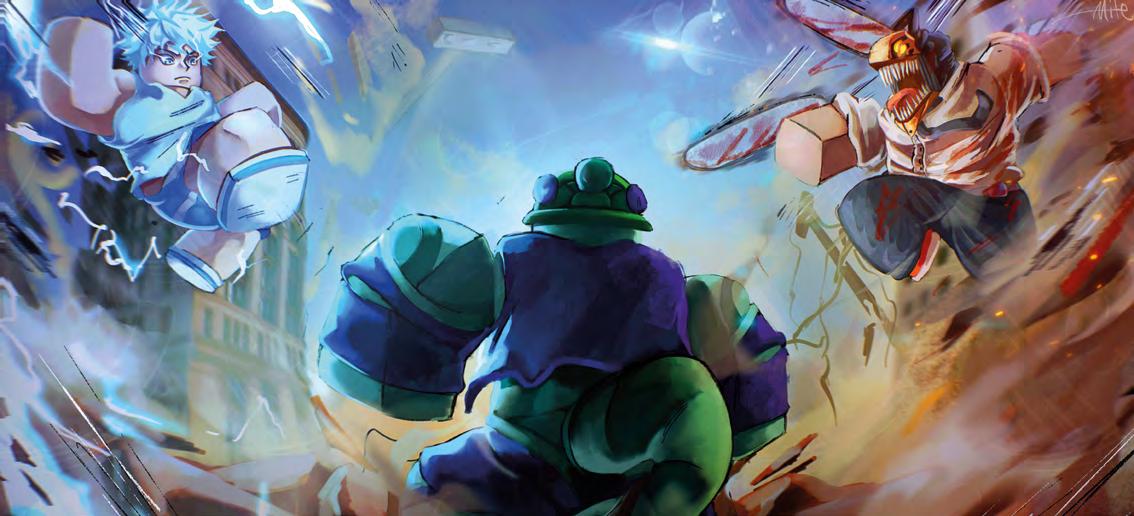
What resources do you think are necessary for creators to remain competitive in a digital landscape?
I believe that over time, things are becoming increasingly democratized. This means that you no longer need a huge amount of resources to compete with established players in the digital realm. Take Roblox, for example: it’s a platform that manages much of the technical complexity and provides tools that are very simple to use, yet it is powerful enough to create worlds that reach millions of players. Similarly, YouTubers can reach audiences the same size as traditional broadcast media while using only a fraction of the resources.
Of course, you need a computer and a workspace, but beyond that, I think that experience, taste, and hard work are the most
important aspects of success on a platform like Roblox. While some luck can help you get started, I believe that the more you try and reflect on your work with a critical eye - without getting too attached to your preconceived notions - the more likely you are to find success sooner rather than later.
How do you see Roblox shaping the current gaming landscape?
Roblox is totally changing the game, if you’ll excuse the pun. The industry is shifting hugely, and just this summer, we witnessed two Roblox games (Grow a Garden and Steal a Brainrot) break the world record for simultaneous players, a record that was previously held by Fortnite.

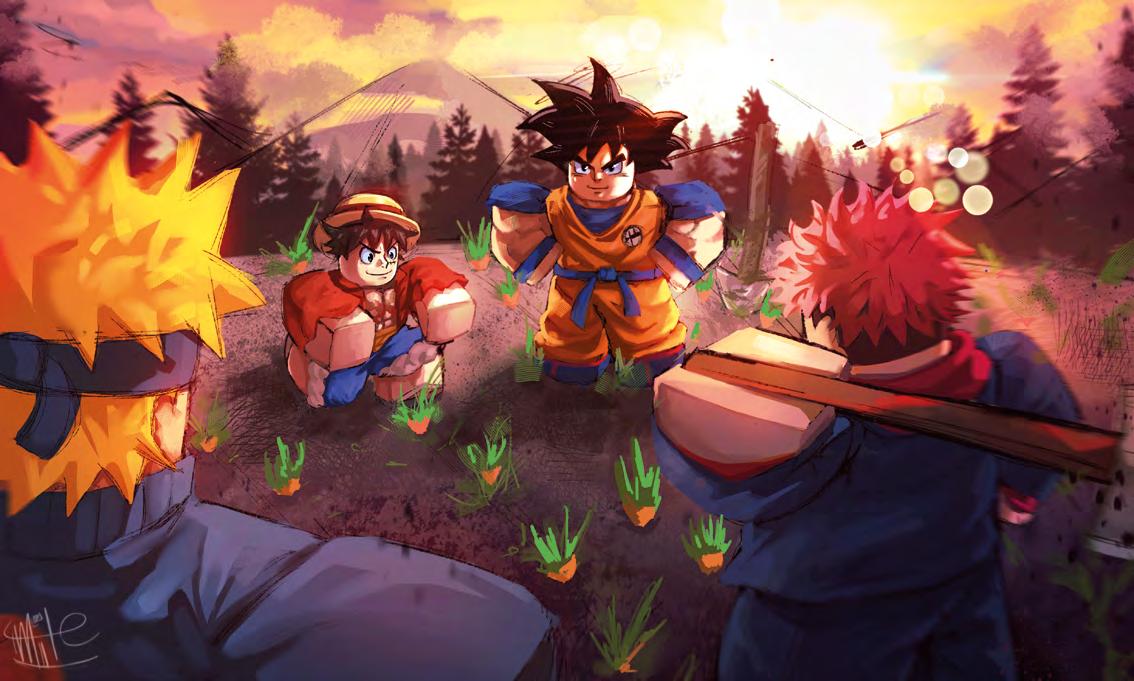
What makes Roblox so unique is its ability to blur the line between playing and creating. It is known as a User Generated Content (UGC) platform, meaning that players are responsible for creating content for others to consume. This means that the barriers to entry on Roblox are virtually non-existent. It costs nothing to access their entire development suite, leverage their game engine, or even host games on their website. As a result, Roblox games are cheap, quick, and accessible. With new games being constantly released, many of which are created by young people who can truly relate to the audience, smashing hits are the norm. The rapid pace of innovation and evolution exceeds what traditional game development can offer.
How do you approach community building, and what strategies are most impactful for driving long-term engagement and loyalty?
Community is hugely important to me and on Roblox in general. Since Roblox is a UGC platform, many of the creators are players, which fosters a strong relationship between both groups.
I personally try to be present and transparent in all my interactions, whether it’s in our community Discord server, on X, or during live Twitch sessions. One strategy that has proven successful is celebrating players and making them feel part of the game’s development. That means allowing certain decisions to be made through community vote, crediting players who submit ideas that are implemented in game updates, and even hosting competitions to encourage players to create new content for the game. Staying in tune with your community is crucial, not only because it’s the right thing to do, but also because it helps you understand what players want to see changed or added. This connection fosters loyalty that goes beyond mere content updates.
What narrative elements do you consider most effective in creating successful and engaging games?
Since games are an art form, there is no one-size-fits-all approach, and different narrative elements will resonate with different audiences.
To me, storytelling is about creating a world where player can experience their own narratives as they overcome the challenges presented to them. This journey can be one of hard work and mastery, or one of clever problem-solving and teamwork. My focus is on crafting an interesting set of systems that players can engage in their own unique way. Interactivity allows the player to become a co-author of their
experience.
How do you integrate ethical considerations into the game development process? How does this ethical attention shape game design?
To me, ethics in gaming comes down to respecting your players. As an avid gamer, I understand how awful it feels to play a game that seems designed solely to wring you out of every cent or manipulate you through psychological tricks. I would never want anyone to feel that way while playing a game I’ve created. We always try to put our player experience at the heart of everything we build. We don’t always get it right - nobody does - but we try hard, and our shared experiences of growing up playing games help us stay on the right side of the line.
As a concrete example: we deliberately avoid “pay-to-win” mechanics in our games, which refers to situations where players can spend real money for an unfair advantage over others. Instead, we build games in which you can pay to progress faster and skip aspects of the game that you might enjoy less, while ensuring that everything a paying user can access is also available to those playing for free.
You are an advocate for STEM education. How do STEM skills contribute to innovation in game development, and what advice would you give aspiring developers looking to strengthen these skills?
I wouldn’t specifically call myself an advocate for STEM education. I’m more of an advocate for problem solving and taking your interests seriously. My formal background in mathematics has been invaluable for developing my ability to think logically about technical and gameplay systems. However, the exposure I got to new ideas and people through my education were equally important. At the same time, the hard skills I use every day to build games are entirely selftaught.
The most important thing is to remember that learning never stops. Holding a degree doesn’t mean you should stop learning, and you shouldn’t restrict your learning just to formal education. It’s essential not to become overly focused on one aspect of your life, especially at a young age.
For aspiring developers, my advice is: don’t wait for permission. Use free tools, join communities, build small projects, and treat every mistake as part of your learning journey. There’s no single path into the world of Roblox development, but passion, persistence, and an open mind will carry you a long way.

By Nicolas Edmery, Film Market Analyst
European animation is often seen through the prism of series, and most of these works are available primarily on TV or VOD. However, theatrical animation cannot be overlooked as it represents a decisive part of the theatrical market.
The study, conducted by the European Audiovisual Observatory, often views European animation through the lens of series, with most of these works primarily accessible on TV or VOD. However, theatrical animation should not be overlooked, as it plays a significant role in the theatrical market. Using the Lumiere database, the study explores this market to highlight its main characteristics: a low production volume, reliance on co-productions, an international focus, and a high performance relative to live-action films.
Low Production Size
In terms of volume, animated films remain a minority within global film production. Between 2017 and 2024, an average of 185 animated features were produced annually, with approximately 404 titles released commercially each year. This accounts for about 6% of the total theatrical output every year and 11% of all releases. Among these works, a quarter originate from Europe, with five countries responsible for most


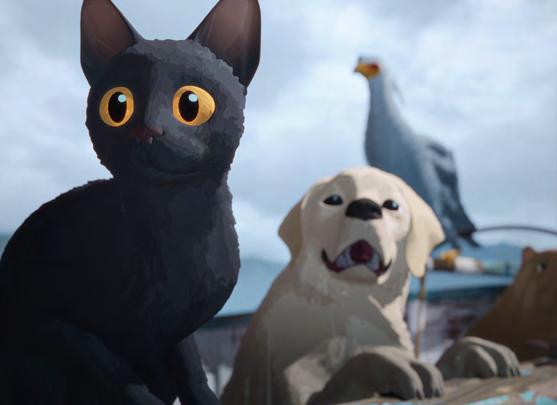
of the production: France, Türkiye, Germany, Spain, and the United Kingdom.
Reliance on Co-Productions
This low number may partly be attributed to a key aspect of animation production: animated films are often more expensive or require larger budgets than live-action films. Indeed, examining a sample of European animated films shows that the average budget is around EUR 5.9 million, nearly twice the cost of a live-action fiction film (EUR 3.6 million). To cut costs, producers tend to favor co-productions. Over the past 8 years, 42% of European animated feature films were co-produced, compared to only 27% of live-action films.
An International Focus European animation films are more international than their live-action counterparts. On average, each movie is released in 11 markets, compared to just four for live-action films.
About two-thirds of admissions are generated outside the film’s country of origin.
Yet the geography of exports has changed. While European animation once depended more on markets such as China and the U.S, export revenues are now increasingly focused within Europe. In 2024, 74% of export revenues were generated in European countries, representing a 19-percentage-point increase from 2017.
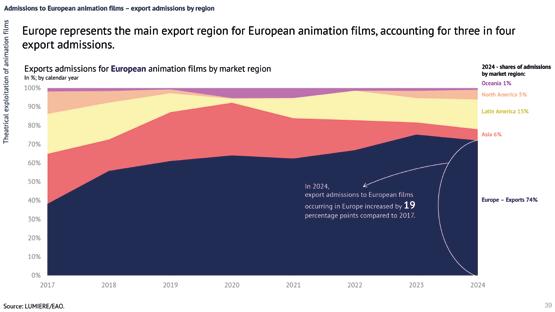
Export admissions for European animation films by market region
Compared to live-action films, animated movies draw significantly larger audiences per title, with twice as many admissions. After the sharp decline caused by the pandemic, animation also recovered more quickly. In 2024, global admissions exceeded 880 million, nearing pre-pandemic levels, with a recovery rate much higher than that of live-action films.
Although Europe contributes significantly to global animation film production and has seen some critical successes recently, like the Latvian film Flow, it has not yet fully exploited

most relevant markets for European Animation Films
To read the Full Report on European Theatrical Animations, go to the European Audiovisual Observatory website, and you can download the report Theatrical animation films - Insights into market dynamics 2017-2024
To learn more you can contact Nicolas Edmery to nicolas.edmery@coe.int
The European Audiovisual Observatory is a European public service organization that includes 41 member states and the European Union, represented by the European Commission. Operating under the auspices of the Council of Europe, the Observatory works with various partners and professional organizations in the audiovisual sector. Its mission is to gather, analyze, and publish information on Europe’s film, TV, home entertainment, and on-demand industries.
To learn more visit the website www.obs.coe.int
the advantages of theatrical animation. European animation represents only about 5% of worldwide admissions, with the United States holding the largest share, followed by China and Japan. In Europe, the market remains mainly driven by U.S. productions, which accounted for 84% of admissions in 2024. Meanwhile, European animated films accounted for just 11%.


By Olivia Deane, Research Manager, Ampere Analysis
In a market where demand for productions from European broadcasters is declining, TV series inspired by consolidated franchises are bucking the trend to attract a loyal and engaged audience.
The Scripted Downturn Scripted TV orders continue to decline sharply, remaining about 20-25% below the peak of ‘Peak TV.’ Despite hopes for a recovery after the Hollywood strikes, no rebound has occurred, showing the decline is structural rather than temporary. Much of this retrenchment is driven by global streaming platforms, which expanded aggressively in 2024 to fill the post-strike commissioning gap but have since pulled back. These platforms now focus on more commercially efficient categories, such as Unscripted Formats, that are easily replicated in multiple markets.
The downturn has been widespread across regions. However, North America has experienced a modest 6% rise in orders, while Western European countries such as Italy, Spain, and France are demonstrating greater resilience compared to their neighbours.
Every major scripted genre is declining. Crime, still the largest category, experienced a 43% year-on-year drop, while Comedy, Drama, and Children’s content also contracted significantly. Among the global streaming leaders, only Apple increased its volume of First-Run scripted commissions, bucking the overall downward trend seen in Netflix, Amazon, Disney+, Max, and Paramount+. Apple has adopted a unique approach to Original commissioning that prioritizes a low volume of high-quality titles, supported by an acquired catalogue.
The Role of Franchises
Although franchise-based commissions have fallen in step with the broader scripted downturn, they remain a key element

of commissioning strategies, with between 35-40% of all scripted titles announced in recent years linked to existing IP. Franchises offer greater commercial security because titles based on established IP are much more likely to be renewed than entirely original series, enabling commissioners to expect longer-term returns and more consistent audience loyalty. Popularity metrics emphasize their significance: in 2024, over two-thirds of the 100 most popular scripted titles were IP-based, with franchises making up half of these successes – surpassing standalone adaptations like book-toTV conversions. In today’s risk-averse environment, franchises serve as a strategic anchor, providing recognizable brands and proven universes that lessen the uncertainty of launching new content.
The landscape of franchise commissions heavily relies on established intellectual property, with approximately threequarters of these projects originating from existing TV and movie sources. This trend encompasses both long-running film franchises that are reinvented as episodic series and the strategic expansion of well-known TV universes, designed to capitalize on established audience interest.
Literature and manga adaptations occupy a smaller yet significant part of the franchise ecosystem, accounting for about 15% of franchise-related activities. These adaptations face unique creative challenges, as producers must effectively translate the detailed storytelling of literary works or illustrated narratives into engaging screen entertainment that


appeals to both existing fans and new audiences.
Genre analysis reveals a firm reliance on franchises in specific programming categories. Children’s programming especially relies on established properties, with nearly a third of new scripted series for this demographic from 2020 to 2024 directly related to existing franchise IP. This underscores the commercial appeal of recognizable characters and the cautious approach to commissioning children’s content. High-budget productions in genres such as Sci-Fi & Fantasy, and Action & Adventure increasingly rely on established comic book or video game universes to justify their high production costs. These existing properties offer both built-in audience recognition and proven commercial success, helping to mitigate the financial risks of creating premium content. Commissioner preferences differ widely across platform types, with SVoD services strategically leveraging major Sci-Fi & Fantasy brands like Star Wars and Marvel to attract and retain subscribers. Meanwhile, Commercial Free-to-Air networks clearly favor crime procedurals that offer high episode counts and proven formulas adaptable for different international markets.
Public broadcasters maintain a consistent approach to franchise support, demonstrating an ongoing commitment to locally resonant Crime & Thriller series, as well as Children & Family IP, that meet both commercial objectives and public service duties within their specific broadcast regions.
Regional Patterns
North America is the primary source of scripted franchises, drawing on its extensive library of superhero and fantasy IP. These titles are usually produced domestically, reflecting the region’s inward-focused commissioning strategies. Western Europe, by contrast, has specialized in exporting procedural Crime & Thriller formats that travel well across borders, with series like Death in Paradise achieving international success as remakes. In the Asia-Pacific region, literature and manga are the primary sources of franchise activity, with Japan, in particular, producing adaptations of popular manga that appeal to both local and global audiences. The USA is relatively weak in exporting franchise IP, with only about 10% of US-origin franchises made internationally, compared to the UK and South Korea, where their IP tends to be widely distributed in global markets. Among institutional players, the BBC has become one of the most successful exporters of franchise IP, rivalled only by Netflix in its ability to place content into multiple international markets.
Strategic Takeaway
The downturn in scripted TV seems to be lasting, with Unscripted, Sports, and licensing models gaining importance for commissioners. Despite the downturn, Franchises remain the most dependable tool in the industry, providing higher renewal rates, stronger popularity metrics, and lower commercial risk. Crime, Children & Family, and Sci-Fi & Fantasy Franchises are among the most resilient and soughtafter categories, offering security even in a challenging
“The downturn in Scripted TV is structural, not cyclical, yet commissions based on Franchises continue to outperform Original series across key metrics. Titles rooted in existing intellectual property deliver stronger audience loyalty, increased likelihood of Renewal, and predictable returns – making them central to the commissioning strategies of both global streaming services and traditional broadcasters. Particularly in high-budget genres like Sci-fi & Fantasy, and children’s programming, Franchise-based projects provide a framework for scale, crossmarket adaptation, and brand-driven subscriber retention.”
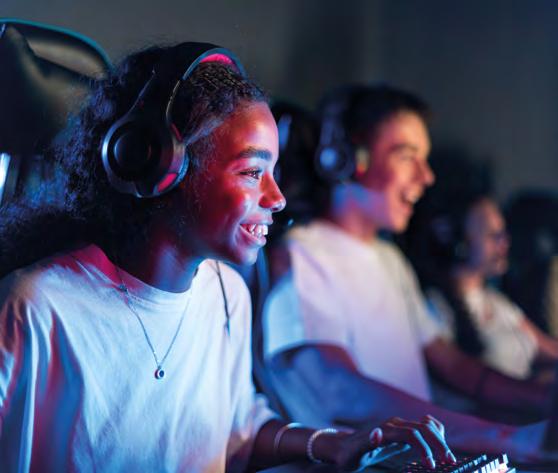
commissioning environment. Long-term growth will rely on balancing the use of well-established legacy IP with the development of new, original properties that can evolve into the next generation of global Franchises.
Ampere is a leading data and analytics company specializing in the media, games, and sports industries. Its research combines thorough financial and KPI analysis of company performance, detailed consumer profiling and polling, and title-specific coverage of licensing and commissioning, to give clients a clear, detailed, and accurate view of the global entertainment market. To learn more, visit the website https://www.ampereanalysis.com/
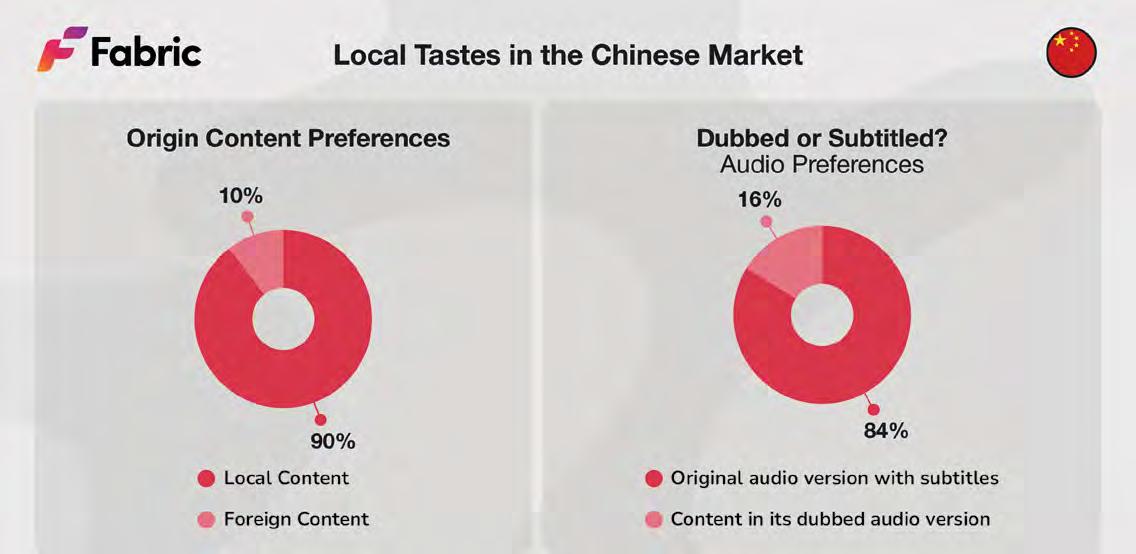
Source: Fabric | Origin Insight
By Juliana Tartara, Market Analyst, Fabric
The streaming market in China remains highly digital, with 78% of households watching online video content. Subscription adoption, however, has shown some volatility — climbing to a peak of 59% in Q2 2024 before declining to 55% by Q2 2025.
Although 19% of the platforms available in China are Asian, most of the leading players are local. Tencent Video, iQIYI, and Youku Tudou are the top subscription services, reaching 21%, 20%, and 20% penetration, respectively. In terms of catalog size, Sohu Video and Tencent Video lead in movie volume, while Bilibili dominates in series, making it a key platform for younger audiences.
Internationally, iQIYI, Prime Video, and Tencent Video are leading distributors of Chinese titles, with a strong footprint in the United States, Japan, and France. This reflects the global demand for Chinese content, driven by the increasing quality and diversity of local productions.
Age Group Analysis and Audience Segmentation
Bilibili’s strongest adoption is among users aged 25–34 (27%), while Tencent Video and Youku Tudou see their highest share in the 35–44 demographic (33% and 26%). Mango TV shows a more balanced profile, with 24% share across both 16–24 and 25–34 age groups. Yangshipin stands out with a significant presence among older viewers (30% in 35–44 and 22% in 55+).
Content Preferences and Viewing Behavior
Chinese viewers show a strong preference for local content, with 90% favoring domestic productions over foreign titles (10%). Moreover, 84% of users choose original audio with subtitles, while only 16% opt for dubbed versions — emphasizing the importance of cultural authenticity in viewing experiences across the APAC region.
Top-of-Mind Titles in 2025
The top-of-mind series in 2025 are primarily local dramas


Source: Fabric | Origin Insight
launched this year, including The Litchi Road (1st season, Tencent Video’s Original), The Narcotic Operation (1st Season, Tencent Video’s Original), and Flourished Peony (1st & 2nd seasons, produced by VIU). In movies, Ne Zha 2 (produced by Coco Cartoon) and The Dumpling Queen (produced by Alibaba Pictures Group) dominate the top-of-mind list, confirming the importance of national productions across multiple genres.
EAJ spoke with Pascal Bonnet, founder of PJB Entertainment and one of Europe’s foremost experts on Japanese animation.
Which European audiences does Japanese animation reach?
Japanese anime now mainly targets teenagers and young adults, a shift driven by the rise of VOD platforms. Historically, the medium was chiefly consumed by younger children via pay-TV and free-to-air channels—think Pokémon, Hamtaro, or Beyblade. Today, a generation of young adults who grew up watching those shows—and are now parents—continues to binge-watch classics and discover new hits in cinemas, such as Demon Slayer, or on streaming services.
Is the “Japan style” also influencing European producers? Absolutely. The stylistic fingerprints of anime are everywhere— whether in animated features like Mars Express and I Lost My Body or in global streaming hits such as Arcane and Blue Eye Samurai. French studios are especially receptive. Earlier this year, My Life is a Manga, an overtly anime-inspired project, was selected by the EBU and well-received at Cartoon Forum.
Which titles and platforms are riding this wave?
Demon Slayer, which enjoyed a record-breaking theatrical run, remains the flagship anime franchise. Other long-standing favorites include My Hero Academia, Naruto, One Piece, and Pokémon, as well as emerging series such as Dan Da Dan, Frieren, and The Apothecary Diaries. Crunchyroll remains the leading dedicated anime platform across Europe, but global giants—such as Netflix, Disney+, and Prime Video—are strong competitors. Local anime-only streamers are also gaining ground, notably ADN (France), Aniverse (Germany), Animebox

(Spain), and Anime Generation (Italy).
Will the trend last?
All signs indicate continued growth. The strong performance of recent cinema and streaming releases demonstrates that anime has long-term momentum globally, particularly in still under-served regions such as India, East Asia, South America, and the Middle East. Expect more co-productions and closer collaborations between Japanese creators and Western studios.
Pascal J. Bonnet founded PJB Entertainment, a consulting firm for anime, manga, and Japanese IP across EMEA. With senior roles at VIZ Media, Bandai, and Ubisoft, he has extensive expertise in entertainment, licensing, and strategic partnerships.


JEROME MAZANDARANI
by Serena Previderè
After his insightful contribution to the Creator Economy’s topic, freelance Anime Expert, Consultant, Journalist, and Executive Producer Jerome Mazandarani returns to the pages of EAJ for a conversation with our editor. They discuss how anime is significantly influencing global animation, particularly in the Western world, and how it has fundamentally shifted global expectations for animation, altering audience perceptions of both anime and animation, with more casual viewers now recognising them as mediums rather than genres.

What is driving the surge in anime-style production across European studios?
The primary engine is vast, unsaturated global demand for sophisticated, dynamic serialized animation. Sony predicts the “anime curious” audience will reach 1.5 billion people (outside Japan and China) by 2030. This audience cares deeply about the aesthetic, complex world-building, high-energy action, and mature storytelling, which makes them responsive to quality content regardless of origin. This enormous base creates a supply gap the traditional Japanese animation pipeline cannot meet alone, compelling global streamers to seek major production partners elsewhere.
The commercial logic for European studios revolves around attracting a high-value segment willing to convert to nonJapanese “anime-adjacent” content.
European studios are uniquely positioned to capitalise on this demand due to strong animation talent pools and regulatory advantages. High-quality European originals satisfy global appetite for the anime aesthetic while meeting EU local content quotas required of major streamers.
France is uniquely positioned at the heart of the EuroJapan anime convergence due to a powerful combination of historical affinity, commercial dominance, and creative infrastructure. Historically, France’s tradition of Japonisme and early co-productions like Ulysses 31 and Mysterious Cities of Gold in the 1970s-80s laid the groundwork. Commercially, France remains the largest manga market outside Japan, creating crucial revenue streams that drive European distribution strategies. France’s major differentiator is its elite animation education system, led by institutions like Gobelins, which produces talents skilled in both traditional and 2D


digital techniques, making them uniquely equipped to bridge the creative and technical gaps in Japanese collaborations. Miyu Productions has built a reputation for theatrical anime co-productions with Japan. Blue Spirit is pushing into adult animation with the critically acclaimed Blue Eye Samurai and developing the kids’ series My Life is Manga Chouette Compagnie is preparing Dragon Strikers, while Miraculous Corp. is launching the anime spin-off Miraculous Stellar Force These 2026 releases signal France’s evolution from early coproduction partner to creative co-architect of the global anime ecosystem.
How are European production houses navigating authenticity vs. appropriation in anime-inspired works? It’s important to young adult viewers that the author’s tone is relatable, sincere, and authentic. I call this the “fraternal tone of voice”, and it’s no coincidence that Japanese creators have it while many Western creators don’t. The average age of Japanese mangaka and light novel creators is 21-25. These young professionals straight out of college can sincerely capture teenage protagonists’ mindsets because they haven’t been far removed from adolescence themselves. Japan’s results-driven, highly pressurized education system doesn’t leave much time for childish things until after graduation.
This reflects teens’ internal monologue. Western animation tends toward a paternal tone because most writers are older. Young adults want characters who look and sound like them. World-building is crucial. Creators like Sylvain Dos Santos excel at this narrative design. Realistically portrayed teenage characters experience emotions and situations that resonate with the audience, set within both fantastical and mundane worlds. Creators should not shy away from exploring darker themes such as death, threat, and the complexities of the young adult experience. Most importantly, they should avoid setting their stories in Japan or featuring Japanese protagonists unless they have Japanese heritage or are producing in Japan, as this can come across as inauthentic. While they can incorporate Japanese elements that have become global, they should follow Japan’s example by creating glocal stories – local narratives that have the potential to travel globally.
Is there a risk that the anime being commissioned by Western platforms is losing its ‘Japanese-ness’ in pursuit of global appeal?
I don’t believe so. Japanese creators remain the arbiters of how international they make their stories. Even Netflix’s exclusive Cyberpunk: Edgerunners, adapted from an Englishlanguage IP, saw Studio Trigger granted carte blanche to reinterpret it their way. Anime’s value is its Japanese-ness, which has far more to do with writing. Style is fairly easy to emulate, but Japanese perspective and tone-of-voice are almost impossible to copy. It’s evident in mega-hits like Attack on Titan and My Hero Academia: both explore familiar Western genres, but in their own inimitable way, placing deep emotional truth at the centre of everything characters do.
The deeper influence is narrative. Western animation traditionally followed episodic formats driven by network television needs, not creative desires. Anime has reintroduced serialised, multi-arc storytelling with philosophical depth. Spider-Verse’s non-linear narrative complexity proved the audience’s appetite exists.
The next generation of animators grew up on anime, and they’re synthesizing it into something entirely new.
What are the strategic motivations behind anime licensing, acquisition, and distrtibution moves from giant global streamers?
Sony has an unassailable position in global anime distribution



that I don’t believe any competitor can match. Before Sony’s 2021 acquisition, Crunchyroll was already investing directly into Japanese anime production committees, committing around 40% of total budgets on new series in exchange for exclusive global rights outside Asia. In Japan, they’re treated by many producers as an essential co-production partner. Aniplex, a Sony Music Japan subsidiary and Crunchyroll minority stakeholder, is directly incentivised to work closely with them as a global distribution partner. In turn, Crunchyroll provides data-led market intelligence on audience demand
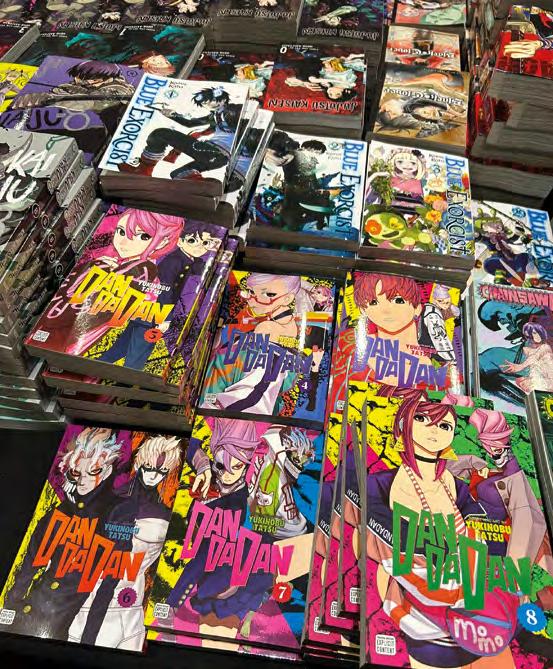
and viewership, helping engineer and curate new anime productions best suited for their audience of today and tomorrow. Aniplex and Crunchyroll recently established a production unit called Hayate to formalise their co-production partnership following the success of Solo Leveling, produced at A-1 Pictures, the high-end anime studio Aniplex owns. Crunchyroll’s strategic advantage is that they’re already moving outside the anime rights arms race. Sony and Crunchyroll’s strategy is creating and owning more of the major animated hits of the future through creative collaboration and an open-door policy to different IP types. They’re one of the only major anime businesses, in Asia or globally, that have been proactive with Korean webtoons. Sony wants to own more of the IP they distribute through Crunchyroll, which will happen through their smart investments into Kadokawa and Bandai Namco, owners of valuable IP, including Gundam and Sunrise, one of anime’s most successful production companies. Sony is securing an IP pipeline and ensuring they will own significant amounts of derivative anime copyright.
Competitors like Netflix, Amazon, and Disney, focus primarily on acquiring the biggest new anime series available but haven’t displayed a cohesive anime acquisition and audience development strategy.
Hollywood and legacy entertainment media are struggling for relevance with today’s young adults, especially Gen-Z males. Teens and young adults love anime, and where teens go, tweens and kids follow. If Gen-Alpha have older siblings, they’re already exposed to anime through Netflix and Crunchyroll. This phenomenon is impacting content acquisition decisions at national broadcasters.
Amazon Prime pursues a “quality over quantity” approach targeting high-profile IP and creative talent, while making Crunchyroll available via the Prime Video app for an additional monthly fee. Disney+ and Hulu are boosting their anime offering through exclusive and non-exclusive license partnerships with Toho International (Spy X Family, My Hero Academia) and Viz Media (One Punch Man, Bleach), plus their own anime productions based on Disney IP like Disney
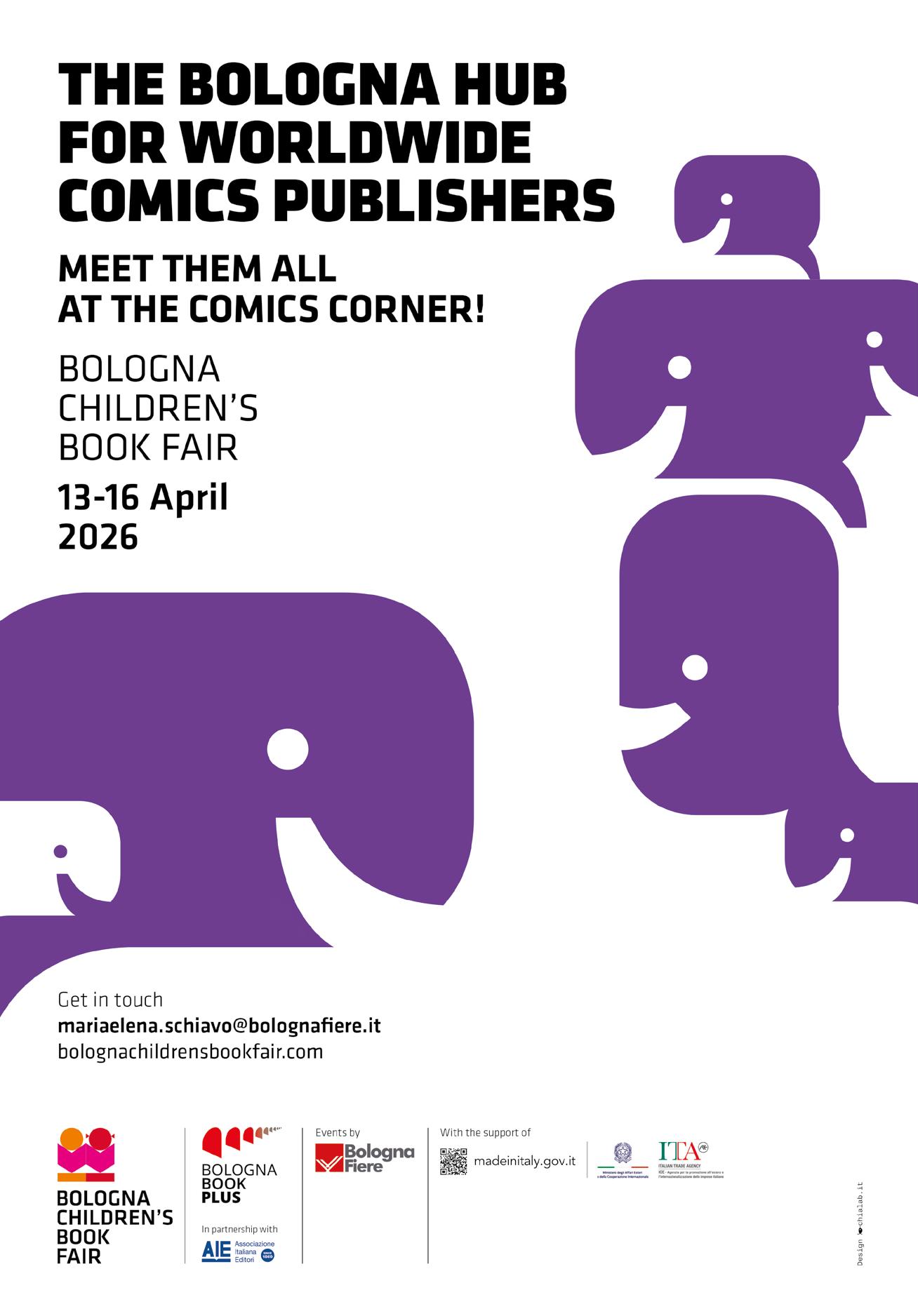

Twisted-Wonderland: The Animation and a new Star Wars: Visions volume.
Netflix will continue to acquire, but not produce, new anime series and movies, including non-exclusive library deals ensuring perennial favourites like Naruto stay on their platform. They’re the world leader in adult genre animation and anime-adjacent series like Arcane, Cyberpunk: Edgerunners, and Devil May Cry, and their biggest original movie of all time is K-Pop Demon Hunters, acquired from Sony Pictures Animation.
Apple has shown no interest in anime or adult animation since abandoning the medium in 2019, and it’s too early to know what the new Skydance/Paramount merger means for anime. Warner Bros Discovery maintains a strong licensed anime presence on HBO Max in the US, with GKIDS recently announcing a new slate coming to the platform.
The big challenge for all these competitors is that there’s only so much anime available to license annually, which fails to address their ownership ambitions.
Are we likely to see exclusive partnerships between Japanese anime studios and Western streamers in the next few years?
Absolutely. We’re seeing Amazon lock up prestige titles like Fujimoto’s anthology, Disney co-producing Star Wars: Visions with a host of top-tier anime studios, and even traditional licensors like TMS Entertainment (Sakamoto Days) shifting to exclusive windows. This is the new battleground, but exclusive access to premium IP without the operational burden of running studios in a foreign market with complex labour and cultural dynamics.
What’s one unexpected trend you think could dramatically shift the anime acquisition landscape in the next few years?
Once anime production studios and Japanese creators realise they can bypass traditional production constraints by going direct-to-market via YouTube and social video, it will drastically change the game. Original story ideas almost never get greenlights. The anime industry has become a function of manga publishing, essentially a “manga adaptation” business that suffocates originality and creates strict dependency on source material.
The direct-to-market, digital-first approach allows creators to tell the stories they want, originals and lesser-known IP adaptations, while developing stories and characters in tandem with their audience and retaining full ownership.
Crunchyroll has 17M subscribers globally offering 1,300+ anime titles with 25,000+ hours of content, while a studio like Glitch Productions built a 16.6M subscriber YouTube audience with just 6 original series totalling approximately 40 episodes, but they own 100% of their IP, built their fanbase organically, and scaled to near-parity with a premium streaming service that spent $2+ billion on infrastructure and acquisitions. Why would creators license to streamers when they can build equivalent audiences while retaining full IP ownership and direct monetisation?


by Cristina Angelucci
EAJ conducted an exclusive interview with Taiga Kunii, Founder of Going Plus, a Tokyobased creative agency that promotes J-pop culture worldwide. In this conversation, we discussed virtual artists, anime fever, and the future of Japanese entertainment in Europe.


Taiga doesn’t come from the Animation industry, but from the Music business, which represents a big part of the J-Pop culture and is so linked to Anime Content. This conversation explores the evolving landscape of Japanese pop culture and its increasing influence across European markets, highlighting the seamless integration of technology and traditional storytelling that makes J-Pop so uniquely compelling.
There is no denying that Japan-made products and content attract a considerable interest in Europe. This has always been true, but the fascination is growing rapidly now. Several companies are attempting to understand and tap on this trend. It is a significant focus for the industry. First and foremost, I would like to introduce your agency to our readers.
I run a Tokyo-based J-Pop creative agency. What this agency does is that, now more than ever before, many Japanese artists are going outside of Japan. I am assisting them with global tours, pre-show arrangements, marketing, PR, and all matters outside of Japan. I have partners around the world. We partner with several companies, and as an agent, I connect the dots and handle all activities.
Recently, there’s a Japanese boy group called BE: FIRST, and they’re so popular in Japan that a tour within the country alone can draw over 300,000 people. That’s how big they are. They have thousands of paid fans. In Japan, there is a paid fan club system where many subscribe to receive the latest updates, exclusive fan events, and more. When prominent artists like them want to tour outside Japan, they often lack partners and struggle to organize international tours. So, I came up with a plan to connect a strategic partner from the US and other countries to make that happen.
Another case study I often share is the virtual artist. In Japan,
for the past two decades, we have had this technology called Vocaloid, which basically allows users to create music by typing in lyrics and melodies, instead of recording human singers’ voices. Vocaloid generates voices using a computer, and this technology is utilized for virtual artists. We just sold out two days at Radio City in New York, which drew more than 10,000 live audience members. Additionally, we sold streaming tickets, so people from Japan and other parts of the world paid to watch live.
Now, more than ever, our company is supporting these Japanese artists who have global fans but don’t know how to reach them, and we help them make things happen worldwide.
Why do you think Europe is so attracted to Japanese content? Do you consider any magic formula? And before, would you like to describe what J-Pop is?
So, I know when people imagine what K-pop is, I think everybody can say, “Oh, it’s a group of idols with perfect dance, perfect songs, and everything’s more visually perfect.” Right? But in J-Pop culture, there are many varieties. We have those groups as well, but we also have an anime group. We also have virtual artists. What I can say is that J-Pop is based on imperfection, but also on storytelling. A wide variety of content is at the basis of J-Pop culture.
Talking specifically about music, which is a significant part of the export of J-Pop culture, from the perspective of live performances and touring, the United States is very expensive for us, considering visa costs and flights. Especially with the yen being weak against the dollar, the U.S. is a very high-risk option. However, for Europe, if we want to tour there, visa issues are much simpler. You can travel easily within the EU. Additionally, Japan has long had a fondness for Europe. You know how Paris hosts a Japan Expo, and London also hosts large Japan festivals. There are numerous large festivals and conferences in Europe, which provide an opportunity to gauge the fan base by participating in these exhibitions and events.
Talking about Virtual Singers, is it a reflection of how Japanese culture is evolving, correct?
Yes, especially when you consider the aforementioned Vocaloid technology, which utilizes a computer-generated voice for singers. This has been going on for more than twenty


years. One thing I can say is that Japan has seamlessly integrated technology into music and entertainment for decades. It’s natural for us to have virtual artists without hesitation. In our culture, technology is seamlessly integrated, and we accept it naturally.
When we discuss Europeans’ interest in Japanese culture, anime and manga play a significant role. They also reach more adult audiences. In Europe, at least, there isn’t a clear distinction between children, kids, teens, and adults. How relevant do you think these target age groups are for the anime content?
I think it really depends on each piece of content, including mangas and all that. They all have different demographics, ages, genders, and so on. Although I cannot speak for every content, I believe that every platform, including social media and video streaming platforms, has statistics available for each piece of content. Once they receive that data, they can target it more specifically and conduct a deeper analysis.
I would say many of them are definitely Gen Z, followed by Gen Alpha. I believe younger generations experienced COVID, which forced them to stay home. I think that was a significant reason why this anime content went viral worldwide - because
“I’m
confident that more Europe-based anime and content will emerge. I believe it will be just as excellent as Japanese content. With increased attention and recognition from Europe, many creators from that region are likely to start producing their anime work. I’m very excited to see all of this happen.”
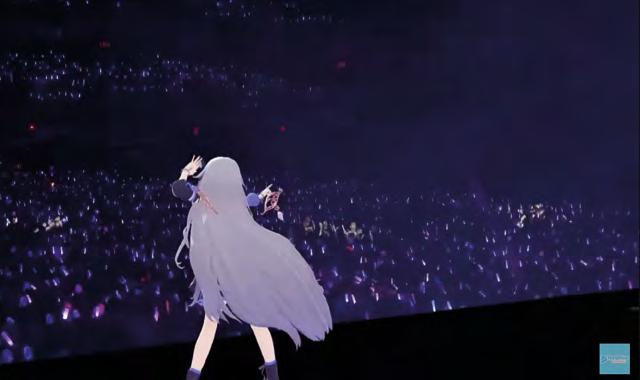
people had to stay indoors. Consequently, they went on their phones, looked for new entertainment, and on video platforms, we saw a surge in anime viewership, with many people getting interested in it. A decade or two ago, when you said you loved anime, people might have reacted with scepticism, thinking, “Why are you watching anime? You’re not cool.” But now, watching anime is considered cool. This represents a significant generational shift. I believe COVID played a role, but these younger generations also embraced anime and manga more naturally than even our generation. So, we are very grateful that these global trends have shifted in our favour.
What is your view of the future? Will anime remain popular? Will something else from Japan’s pop culture emerge and capture the attention of European generations? Or how do you envision the future of Japan’s connection and influence on Europe?
In Japan, there are many more manga and anime series that are still unreleased or haven’t received much attention yet. So, we still have plenty of resources left to produce. However, at the same time, Japan is experiencing a population decline. The environment for anime creators and illustrators is very tough. They face low pay but work long hours. That is one of the challenges we are dealing with.
However, I also feel that there’s a wealth of great anime, games, and content from Korea, China, and other countries as well. I wouldn’t be surprised if there are now many anime fans across Europe. I’m confident that we will see more Europebased anime and content emerging. I believe it will be just as great as Japanese content, too. With more attention and spotlight from Europe, I think many creators will start coming from that side. I’m very excited to see all of that.



by Serena Previderè
Born in Bologna, Italy, from the combination of different experiences, Studio Croma is an independent production company that works in stop-motion animation for movies, music videos and commercials. We had the pleasure to talk to founders Matteo Burani and Arianna Gheller ahead of some exiting news for their latest project Playing God.
What is the story behind the studio?
Studio Croma was founded almost as a joke among three friends during the high school, looking for a way to skip school. Our goal was to make action figures move without showing the hands that manipulated them, which led us to discover stop motion completely on our own. This resulted in our first self-produced short film, Dinner at the Cemetery, which quickly led us to compete with local productions and create our second short film, The Suitcase, nominated for the David di Donatello and Nastri d’Argento awards in 2014. From that on, we continued to produce various projects, including a four-year collaboration with RAI for the Zecchino d’Oro. The 2021 was pivotal for us, when we officially established Studio Croma as an independent production company. Since then, the studio has become a recognised entity, able to develop its own projects and collaborate with other productions both nationally and internationally. Over the years, many talented individuals have joined us, bringing new energy and helping to form a diverse team tailored to each project.
Studio Croma not only develops its own projects but also establishes international collaborations on stop-motion productions for other studios.
Our workflow is extensive - we handle everything from puppet creation and prop and set construction to rigging, animation,
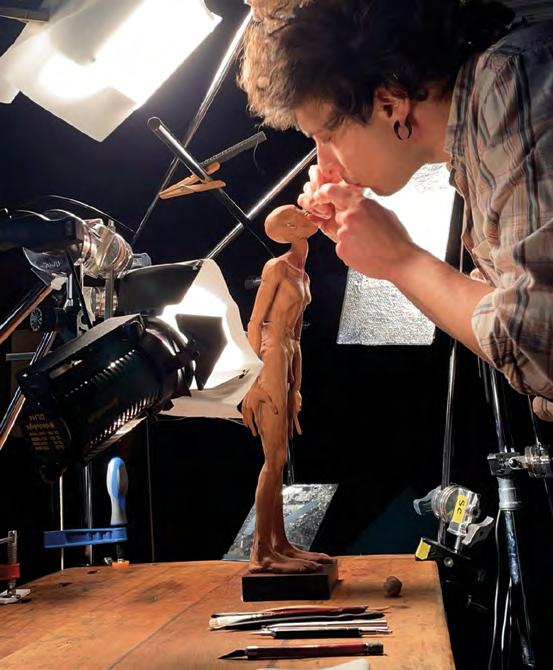
and visual effects. We have offered our skills to numerous European productions, “exporting” highly skilled creative labour from Italy. Although this is a technical and niche field, it has positioned us as a key reference point in Italy for stopmotion animation. In recent years, we have also evolved into a broader production company, participating in European coproductions of animated films. With support from the EmiliaRomagna Film Commission, we have already finalised two coproductions, with a third scheduled to begin in early 2026.


What challenges are you facing on a national level?
In Italy, animation is often seen as merely a children’s pastime, considered a lesser form of cinema. The industry operates largely in the shadows, receiving little institutional support and facing a culture that rarely appreciates our work. But we are lucky enough to find ourselves in a thriving, competitive, and opportunity-filled international market, which drives us to make our voices heard.
Playing God is a stop-motion body horror short-film that explores the relationship between a plasticine creature and its creator. What motivated you to tell this story?
Playing God arises from a blend needs. We spent years on projects that didn’t truly feel like our own, which led us to question the meaning of creation and our reasons for doing it. This urged us to explore what “making art” really means. However, the inspiration for the film goes beyond the relationship between the creator and the creature - it highlights the fragile community that develops around this dynamic. The true “victim” is what is brought into existence, judged, and often discarded, and “God” does not refer to a divine being, but rather to a system: the external perspectives that shape, evaluate, and frequently reject. We aimed to illustrate how the obsessive pursuit of perfection can lead to exclusion, while also showing how acceptance and solidarity can foster a more authentic community.
How did you work on this short film from a technical level?
From a technical standpoint, we pushed our boundaries to achieve something extraordinary with stop-motion animation, truly harnessing the medium’s full potential. It was a journey to the limit. We set ourselves an enormous challenge: to combine three different techniques – clay animation, puppet animation, and pixilation – into a single coherent language. Working with 60 cm tall plasticine puppets meant that every frame was essentially a new sculpture. Capturing a single frame could take us up to 40 minutes, as every slight movement required us to re-sculpt the material, smooth it out, and return it to a “perfect” state before moving on. Visual consistency was a constant challenge, especially since we embraced the natural imperfections of clay and incorporated them as part of the film’s aesthetic signature.
One of the most complex sequences was a 40-second long take featuring more than 70 puppets on stage. In this scene, the protagonist falls, tearing his face on the table, while a handmade crank crane moves the camera forward with extreme precision, step by step. During this movement, we manually changed the lens from 24mm to 70mm while maintaining constant focus. This single scene required over 100 days of filming.
Another unforgettable challenge was pixilation. In this case, Matteo had to remain motionless for hours, often immobilised
Playing God is an Italy / France coproduction between Studio Croma Animation and Autour de Minuit with the support of the Emilia-Romagna Region through the Emilia-Romagna Film Commission, MIC Direzione Generale Cinema e Audiovisivo, CNC Center National Du Cinema Et De l’Image Animèe. The short film is distribuited in Italy by Sayonara Film. Its international sales are managed by Autour de Minuit.
by structures and aluminium wires.
Playing God began its journey in 2024 at the 39th International Critics’ Week during the 81st Mostra Internazionale del Cinema di Venezia, where it was the only animated film in competition. Since then, it has been screened at over 170 film festivals and has won 80 international awards, and now it has been accepted for consideration in the Academy Awards® under the category of “Best Animated Short Film” for the upcoming award season, following its winning at two Oscar®-qualifying festivals. What’s in the future for you?
The journey of creating Playing God has truly been an adventure for us, almost as notable as the film itself.
Witnessing its debut at prestigious festivals around the world, traveling with it, and meeting fantastic people has been invaluable. We never imagined its success, and each recognition has shown us how a project created in a small independent studio in Bologna can resonate with so many people.
For us, the Academy Awards® represents not only an artistic recognition but also a significant milestone for Italian independent animated cinema. It demonstrates that with dedication, collaboration, and determination, it is possible to take a project beyond borders.
Our next steps focus on the award season. We hope to go far, as it would be the perfect way to conclude our global distribution and finally make the film available for free on our YouTube channel. We are also developing new projects, that will remain true to our artisanal and poetic vision while daring to combine the tangible aspects of material with innovative experimentation.
If Playing God emerged as a form of personal resistance, our future projects aim to serve as an invitation: stories that engage with the world and delve into the complexities of humanity.


Did you know that Belgian animation is almost as old as the country itself? Back in the 1830s, in the very young Kingdom of Belgium, physicist/mathematician Joseph Plateau was experimenting with the moving image, and created in 1834 the phenakisticope, one of the first devices to create the illusion of movement from still drawings. More than 180 years later, animated and live action cinema still work on the same basic principles.
Since then, many things have changed in Belgium, but the hunger for creativity is still rooted deep in the heart of Belgian artists, on both sides of the linguistic frontier. Well established animation powerhouses are pushing new projects, national and international coproductions are ever more flourishing, while indie artists and big studios alike work in unison to bring more resources into the animation mix.
Art, Laughs and Thrills: the Many Faces of Belgian Animation
If one had to define Belgian animation, heterogeneity would probably come to mind, for there never was a single identity of this very diverse and complex sector.
Whereas French-speaking Belgian cinema was notably shaped by the Dardenne Brothers in the 1990s, one could argue that Raoul Servais (1928-2023) defined Belgian

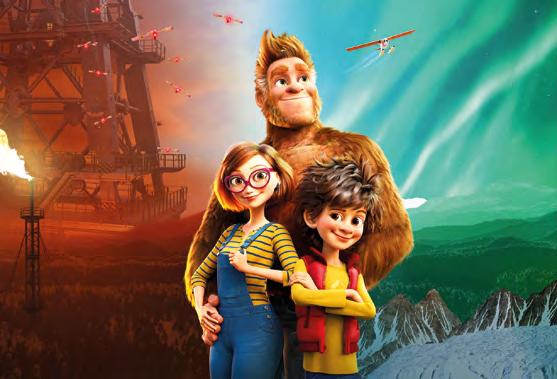
animation in the late 1970s, after winning the Palme d’Or for his eerie short Harpya in 1979 and later creating his own process called “servaisgraphie”, blending live-action actors into high-quality drawn backgrounds.
But at the same time, few remember Nicole Van Goethem (1941-2000), the only Belgian director to ever win an Oscar for her raunchy Greek-mythology-inspired 2D short A Greek Tragedy, back in 1986. Or that, during the same period as Van Goethem’s one-hit wonder, Belgium was the homebase of what would eventually become nWave Pictures, one of the biggest independent animation studios in Europe.
Thrill rides and IMAX-aimed productions were at the roots

of nWave, which switched its core business to animated feature films in the early 2010s. From Fly me to the Moon to Bigfoot Family and more recently Chickenhare, nWave has an impressive track record, thanks to its collaborations with French distributors StudioCanal, SND and with Netflix during the COVID-era. With Chickenhare 2 hitting theatres mid-october in France and Belgium, nWave continues to be a strong industry component of the Belgian animation landscape.
Hailing also from Brussels, Panique! Productions is also one of the main production companies which has historically been involved in animation. Created back in the 1990s by Vincent Tavier, it became the home of Belgian animation duo Vincent Patar and Stéphane Aubier, who created the A Town Called Panic! franchise, while coproducing many European projects, from features to series. It is thanks to this strategy that Panique has now had a long run Panique! specials, as well as an impressive track record of animated coproductions, from Barras’ acclaimed features My Life as a Zucchini and Savages to prominent tv series such as Jean-Michel, super caribou
The Triplettes of Belleville
Strength in Unity: How Coproduction Became Fuel for the Belgian Animation Industry
Coproduction has always been at the forefront of producing animation in Europe. In Belgium, one of the early leaders in this sector was none other than veteran producer and studio head Viviane Vanfleteren who embarked on her first co-production back in the early 2000s - the French-CanadianBelgian Triplets of Belleville, directed by Sylvain Chomet and coproduced by Vanfleteren (Vivi Film). The Oscar-nominated film launched Vanfleteren’s production career, along with her next collaboration with Cartoon Saloon’s The Secret of Kells. Now, Vivi Film works closely with its sister studios Studio Souza in Brussels and Creature in Ghent, and in close partnership with Dreamwall in Wallonia. A clever setup that sets Vanfleteren in the leading run for international coproductions such as Valemon and Ewilan’s Quest, with the possibility of applying for funding in three different Belgian institutions.
But as we mentioned earlier, coproduction – which has now become part of the European animation ecosystem, thanks

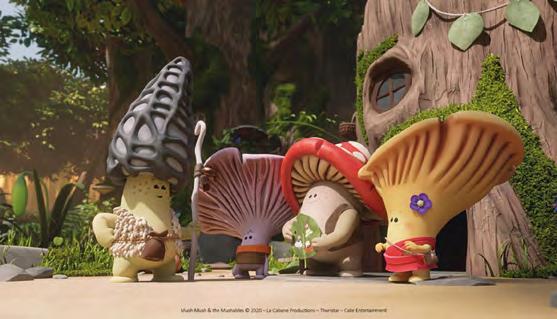
to the Brussels-based association Cartoon MEDIA – is now rooted deep in the minds of every animation Belgian producer. At Cartoon Forum 2026, each of the six Belgian-backed projects pitched at the event already had an international co-producer on board. And it was a co-production that also brought Belgium its second animated Oscar last year, when Flow, a Latvian-French-Belgian coproduction won the welldeserved Academy Award for Best Animated Feature. A watershed moment for Belgian producer Gregory Zalcman (Take Five), and for both European and Belgian animation industries.
Small Domestic Markets, Limited Opportunities, Active Networks
But in the grand scheme of things, Belgium is still a small territory, divided in two distinct markets by the linguistic separation between Dutch-speaking Flanders and the Frenchspeaking Fédération Wallonie-Bruxelles (FWB). It has therefore always been difficult to break even as a majority producer in Belgium, and this is still the case in both Flanders and FWB, as the two linguistic communities represent quite small markets which more often than not fall in the shadows of the Dutch and the French industry.
Yet on both sides, national public broadcasters work closely with animation studios and Belgian producers to bring Belgian animation to the screen, for both children and adults alike. In Flanders, VRT/Ketnet has been funding animated series for
more than two decades, while RTBF has used Auvio Kids to showcase Belgian productions and coproductions.
The Smurfs CG series, our cover story, is one of the most prominent shows which received both backup from VRT/ Ketnet and RTBF, along with international hit Mush-Mush and the Mushables created by the Belgian-French duo companies Thuristar / La Cabane Productions.
In Flanders, major studios such as Creative Conspiracy (Ninja Express) and La Fabrique Fantastique (Interstellar Ella) have both been working with Ketnet for a long time, building strong partnerships with Ketnet veteran and Content Manager Telidja Klai. While on the French-speaking side, Paola Acosta (Responsable Fictions Animation) works closely with Panique, Dreamwall and many other Belgian studios for series, shorts and animated features backed by RTBF. Sure, the budgets are small, but the spirit is there, and so are the talents.
Experienced Crews, a Strong Work Ethic, and a Distinctive Way of Doing Things.
That’s what Tom Van Gestel, CEO of Fabrique Fantastique, underlined as “the Belgian signature” ahead of this year’s Cartoon Forum. For the animation veteran and RITCS alum, surrounding himself with a steady crew of “fantastique” people – the same with whom he started back in 2013 when he created the studio – has created a reliable and high-value ecosystem, which can tackle either majority and minority productions with the same level of quality and energy. It’s the same energy that still fuels Annemie Degryse, another



Savages
Belgian MVP producer who started her career on Servais’ first feature Taxandria, in all her endeavors. And it’s still the same energy that brought Ben Tesseur and Steven De Beul together when they created Beast Animation, now an internationally acclaimed stop-motion Belgian company. The studio’s most recent achievements include the Oscar-nominated short Wander to Wonder by Nina Gantz, Savages, among many others.
Crafting the future with animation in Belgium and beyond
With quality schools both in Flanders (RITCS), Brussels (La Cambre, LUCA) and Wallonia (HEAJ), Belgium can rely on a steady stream of new talents. If and how Belgium can integrate its industry into the global context of shrinking budgets remains uncertain, especially as the country continues to challenge streamers for proper contribution to its local industry.
To accompany those young animators, Belgian animation artists have federated under the name of ABRACA, strengthening the community and helping set the course for an inclusive, respectful industry in Belgium and beyond, with its international partners.
In yet another example of what Belgians can achieve when they work together, Brussels-based Studio l’Enclume offers a two-month residency for artists with a project in need of

improvement, before pitching it to local producers. To back this initiative, L’Enclume co-founder Jérémie Mazurek created – with his associate producer Christophe Beaujean – Ozù Productions, a young production company which already gathered fame for its powerful shorts.
What Lies Ahead for Belgian Animation?
For Panique! producer Hugo Deghilage, even if things are not all merry and happy in the animated feature business, he is still fuelled by the same positive energy that got him working with Panique in 2019.
“Due to our limited fundings, there is not much perspective for a majority-financed Belgian feature film in the near future”, Deghilage told us back in Annecy. For Savages, a project in which the studio was deeply involved, Panique! only weighed in for 15% of the production overall budget. “Yet with every project we board, we put the same energy and consider them as our own.”
A very Belgian way of working, crafting solutions and art with heart, at the core the European animation industry.
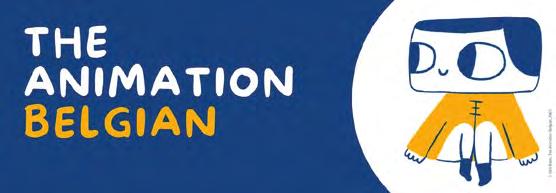
Want to know more about Belgian animation? The Animation Belgian, a weekly newsletter started by one of our regular contributors Kévin Giraud, will provide you with insights about the Belgian industry, exclusive behind-the-scenes interviews and regular news on everything related to animation created in Belgium. More info on https://theanimationbelgian.substack.com/

BELGIAN ANIMATION STUDIOS
From Sept. 15 to 18, six Belgian animation studios showcased their projects in Toulouse at the largest European co-production forum for animated series. This event marked a significant milestone for Belgian animation, which participated in 2024 with only two projects, reflecting the industry’s remarkable growth and expanding influence.
Recently awarded the title of Producer of the Year at Cartoon Forum 2025, Creative Conspiracy has solidified its position as a significant player in the European animation landscape. The last Belgian producer to receive this honour was Panique! in 2019.
Based in Ghent, Creative Conspiracy is an animation and production studio renowned for its high-quality 2D and 3D animation work across various mediums, including commercials, TV series, short films, and feature films. With an in-house team of designers, directors, and producers, the studio provides full-service production, often blending animation with live action. Creative Conspiracy has recently collaborated with Aardman Animation on BBC’s Quentin Blake’s Box of Treasures, a unique collection of six animated stories from the world-renowned illustrator and master storyteller. Additionally, the studio produced the successful children’s series Ninja Express (52 x 11’), which features a trio of little ninjas running a delivery service that promises to deliver anything, anywhere, and anytime. Their animated series for children aged 3 to 7, Ray & Ruby (26 x 11’), is currently in development and won the EBU Co-Development Initiative in 2023. Committed to co-productions and crossborder collaboration, Creative Conspiracy plays a vital role in
promoting Flemish animation on the global stage. At Cartoon Forum 2025, they presented the preschool TV series Terry & Olivia (52 x 5’) a 3D adventure about two inseparable friends with a fantastic power: they can talk to anything in nature. Creative Conspiracy is also the co-producer of This Moose Belongs to Me, a witty and thought-provoking story from international picture book sensation Oliver Jeffers, adapted for screen by Sixteen South.
MITS PROD, based in Liège, is the sister company of Frenchbased STIM Studio, which has expanded to Belgium to enhance its production capacity and utilise local talent and tax incentives. STIM positions itself as an agile, artist-driven studio that balances high-end and mid-scale productions, with a strong emphasis on creative collaboration, technical stability, and cost-efficiency. The studio specialises in 2D and 3D animation, as well as visual effects, managing projects from pre-production to final delivery. Their services include asset creation, special effects, lighting, and compositing. Among their in-house productions are Kitchen Life, the first short film created with CPASDEC, and the preschool series Octicorn & Friends, co-produced with Mercury Filmworks. STIM has also collaborated with DreamWorks on the facial
and body rigging of several characters for The Wild Robot and has worked with the BBC on all aspects – from modeling to look development – for the TV special Tabby McTat At Cartoon Forum, they presented Holly and Luna Go Woof! (5 x 11’), a magical comedy about sisterhood, produced in high-quality 3D animation aimed at children aged 5 to 7, in partnership with French powerhouse PGS Studios.
Fabrique Fantastique is a Lier-based animation and intellectual property (IP) development studio. It is known for its unique storytelling and imaginative worlds, producing both 2D and 3D animation through its in-house team at Studio Fantastique. Their strategy extends beyond content production to encompass full IP development, which includes merchandising, books, live events, and licensing. Notable projects include the international co-production Interstellar Ella (52x11’), the children’s series Sir Mouse, and the upcoming 3D animated feature Juul, a compelling drama aimed at young adults. With a strong emphasis on creative control and a vertically integrated production pipeline, Fabrique Fantastique has established a reputation for quality and originality while navigating industry-wide challenges such as cash flow and talent development. The studio actively participates in international co-productions and financing partnerships to support its growth and creative aspirations. At the Forum, they pitched Olga (52x11’), an animated series for children ages 6 to 9 about a quirky young scientist who discovers a strange alien creature named Meh. This series is based on the popular graphic novels by Canadian author Elise Gravel and in co-pro with the Canadian company apartment11
De Argonauten is a dynamic, independent production company based in Flanders that focuses on creating authentic stories appealing to a wide audience in both live action and animation. With a particular passion for forgotten history, inspiring personalities, overlooked IPs, and current social issues, they strive to produce content that is both meaningful and impactful. At Cartoon Forum 2025, in collaboration with Ketnet – VRT’s transmedia children’s brand featuring a dedicated linear channel, apps, and live events – they pitched Gnomes, a 26x11’ TV series for children aged 5 to 7. This series is based on the globally bestselling illustrated book by Wil Huygen and Rien Poortvliet, which inspired numerous spin-offs, licensing products, and a TV special titled David The Gnome (1980).
Wajnbrosse Productions is a Brussels-based film and animation company recognised for its bold and inventive
Prout © CARTOON
The European animation sector is evolving rapidly, making its financial and commercial dynamics more critical than ever. Cartoon Business (Brussels, Nov. 12–14) is a key seminar to explore animation business models through keynotes, panels, and case studies, drawing over 200 professionals from 20 countries.
The 2025 edition spotlights Belgium, showcasing its strong co-production ambitions through cultural and economic partners including Centre du Cinéma et de l’Audiovisuel (CCA), Wallonie Bruxelles Images, Wallimage, screen.brussels, Flanders Audiovisual Fund (VAF), Screen Flanders, and Flanders Image.
Visit www.cartoon-media.eu/business/ to learn more
storytelling. The studio produces a diverse range of content, including fiction, documentaries, VR experiences, and animation. Before the production of Prout (52x7’), an animated series that combines stop motion, plasticine, and live action, they created Mr. Almaniak (1991), a collection of 365 ultra-short films that blend live action and animation. Wajnbrosse’s productions have been broadcast in over 300 countries and have won more than 100 international awards. The studio actively engages in co-productions and frequently collaborates with Belgian and international funding schemes, including tax incentives and innovation grants.
Lastly, VlinVlin Animation Studio, founded by Wouter Dierckx and Qin Ling, presented – in co-pro with Little Monster –Zebracat (26’), a TV special and series for younger children about the adventures of two friends living together in a caravan on an island in the middle of a vast ocean.

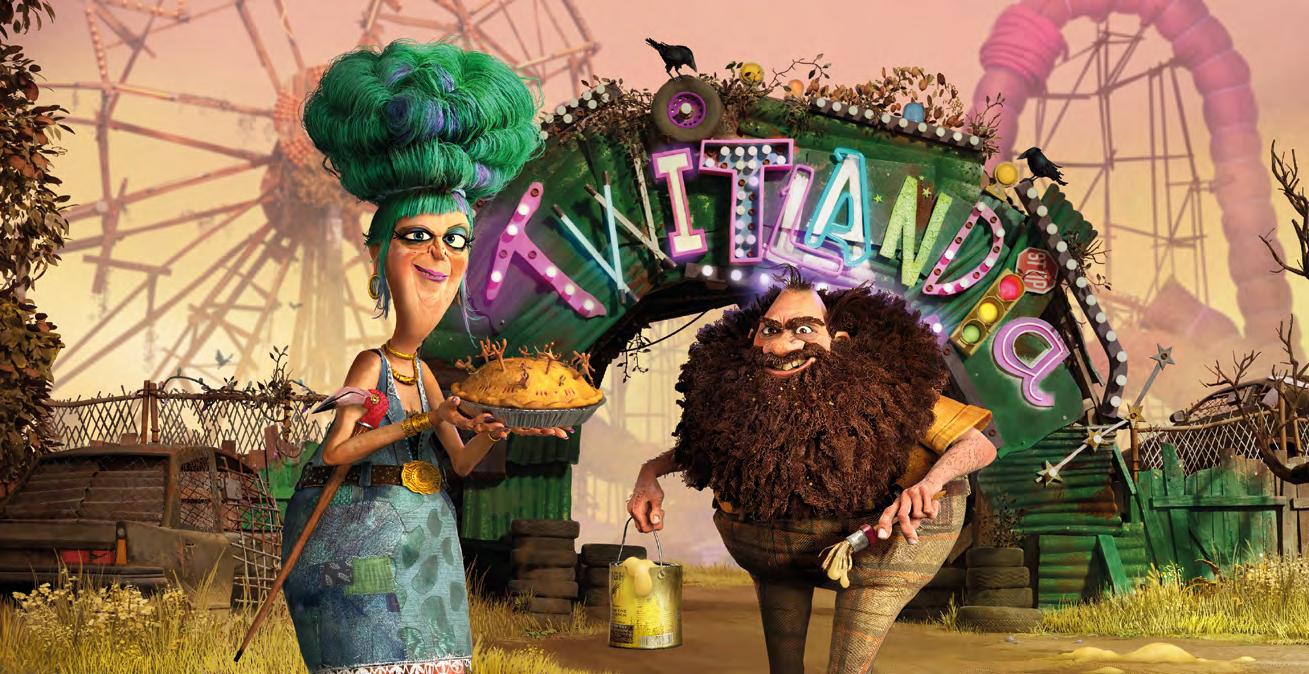
by Kévin Giraud
In what may be the meanest and scariest adaptation of a Roald Dahl story yet for Netflix, The Twits is set to be brought to the screen this autumn. Veteran director and screenwriter Phil Johnston, known for his Oscar-nominated work on Zootopia and the two Wreck-It Ralph animated features, as well as the live-action dark comedy Cedar Rapids, takes on the director’s role for this project, which has been seven years in the making.
In this twisted-yet-funny tale aimed for children who aren’t afraid of a small scare, two orphans join forces with a family of magical Muggle-Wumps to save their city from the powerful Mr. and Mrs. Twit, the meanest, smelliest, nastiest people in the world.
“It all started back in 2018, when Netflix reached out to adapt Dahl’s work in a TV series”, recalled Johnston, who spoke with the Journal ahead of The Twits’ global release. “I liked the idea because The Twits’ book hasn’t that big of a story, which allowed me to be inspired by it and by those characters to craft something with my voice. In 2020, we pivoted to a feature, and from then on it all moved quite fast.”
Johnston, who grew up with Looney Tunes cartoons, was truly happy to bring forward comedy with teeth. Terrified yet captivated by the Jungle Book as a child, it makes sense that a story such as the Twits appealed to him, where comedy meets eeriness and where child empathy clashes with the hatred of cruel and small-minded people.
“Even if the world is being mean, being mean yourself isn’t the answer”, added Johnston. “This idea was present in my initial pitch, and it remained the touchstone I would go back to during the whole process. That, and the original spirit of Roald Dahl’s writing. The original Willy Wonka adaptation with Gene Wilder had also a big influence on me. Wonka is an unhinged lunatic,
“I liked the idea because the Twits book hasn’t that big of a story, which allowed me to be inspired by it and by those characters to craft something with my voice.”

borderline sociopath, and yet I couldn’t help but watch the film, it felt sort of naughty at the time.”
This feeling of watching something you’re not supposed to watch is precisely what Johnston wanted to bring back with The Twits. A firm believer in the fact that children are much more intelligent than we give them credit for, he put them against a gross, mean and vulgar duo, mirroring in many ways the conversations of today’s world. “The kids, on the other hand, have a deep heart and are willing to fight to find their way in the world, without giving into hate. To be frank, I don’t know if there are a lot of places where I could have explored this topic like I did, and I’m really happy I got the chance to do that.”
The Twits, blending magic with a heartfelt message in a surprisingly eye-catching animated 2D-3D feature, may well become a cult classic for young children looking for a scary enough thrill ride. And isn’t that what Twitlandia, the Twits’ own sketchy amusement park, is all about?
The Twits
Format: Feature Film (98’)
Target: 7+
Genre: Adventure
Available on Netflix from October 7th Mr. and Mrs. Twit are the meanest, smelliest, and nastiest people in the world, and they also happen to own the most disgusting, dangerous, and foolish amusement park called Twitlandia. When they rise to power in their town, two brave orphans team up with a family of magical animals to outsmart the Twits and save the city.
The Twits is the first in a lineup of Roald Dahl adaptations coming soon to Netflix, which also includes an animated version of Charlie and the Chocolate Factory. Netflix, in fact, acquired the Roald Dahl Story Company in September 2021.
“The kids, on the other hand, have a deep heart and are willing to fight to find their way in the world, without giving into hate. To be frank, I don’t know if there are a lot of places where I could have explored this topic like I did, and I’m really happy I got the chance to do that.”


MIPCOM & MIPJUNIOR
by Greta Amadeo
Under the official claim The Transformation Starts Here, the event positions itself as a key platform where animation, more than ever, emerges both as a language and as a driver of change — from preschool content to major franchises through to feature films.
From 13 to 16 October, Cannes once again becomes the global crossroads of the audiovisual industry with MIPCOM, preceded by MIPJUNIOR (11–12 October), entirely dedicated to children’s and youth content.
Alongside screenings and world premieres, this year’s programme also features the BrandStorytelling Summit at MIPCOM, a hub bringing together brands, creators and broadcasters to explore brand-funded content and new forms of co-production — further proof that transformation today extends to business models and partnerships as well.
Embodied in the projects showcased in Cannes, this transformation reflects an increasingly articulated global production landscape, reaffirming the central role of animation as a key element of both creative and industrial development.
Ewilan’s Quest & Wakfu 5
French fantasy arrives with two highly anticipated premieres. Ewilan’s Quest (8×26’, kids/tweens – 2D) is a series based on the novels by Pierre Bottero, blending adventure,

coming-of-age storytelling and parallel worlds. Produced by Andarta Pictures with Vivi Film and Incroyable Studio, and in association with APC Kids for global distribution the series is part of Ankama Animations’ new strategy, following its acquisition of a 51% stake in Andarta to strengthen transmedia expansion.
Alongside this debut, Wakfu returns to Cannes with its eagerly awaited fifth season, once again produced by Ankama Animations with support from France Télévisions. Since 2008, the series has built a narrative universe that stretches across animation, comics and video games. This latest chapter promises to conclude a journey that has successfully combined fan loyalty with linguistic innovation.
Rockolandia: Las Cabritas
Rockolandia: Las Cabritas is the first preschool musical 2D animated series produced entirely in Puerto Rico with local talent. Created, written and directed by Cristina Carrión, with Alberto Carrión producing, the story follows seven little goats living happily in the forest. Through songs, dances and
extraordinary adventures, they must defend themselves from the ever-menacing big bad wolf. The first season, launched in April 2025, airs on Tele11 (Hemisphere Media Group) and is also available on the official YouTube channel @ROCKOLANDIA. The project weaves Puerto Rican folklore with international ambitions, showing how preschool content can convey cultural identity with global resonance.
Dino Ranch: Island Explorers
After the success of Dino Ranch comes the spin-off Dino Ranch: Island Explorers (52×11’ – CGI), produced and distributed by Boat Rocker Studios (Canada). Aimed at 4–7 year-olds, the series follows the Cassidy family, who with Uncle Jack explore the mysterious Dino Island — home to new species of dinosaurs, giant insects and prehistoric amphibians. Amid lush jungles, active volcanoes and underwater worlds, the series combines action and discovery with values of family and animal care. The title airs on Disney Junior and CBC Kids, strengthening an already global franchise supported by a robust licensing sector spanning from publishing to toys.
Cuquín, Tippi T-Rex & Howly & Wooly
From Ánima Kitchent (Spain) come three titles confirming the studio’s multiplatform strategy.
Cuquín, a spin-off from the classic Familia Telerín, is today an established preschool brand: with 9.4 billion YouTube views and a steady presence on HBO Max, the character is now at the heart of a feature film in production, due for release by 2026.
Tippi T-Rex (52×5’ – 2D), co-produced with Indonesian studio Mocca, tells the comic adventures of a young T-Rex and her friends, aimed at children aged 3–5. The series has already debuted internationally via a distribution deal brokered by GoldBee with Beijing-based 24 Bridges
Howly & Wooly (52×7’ – 2D), set in Woodytown, follows the friendship between a warm-hearted young wolf and an
Dino Ranch: Island Explorers
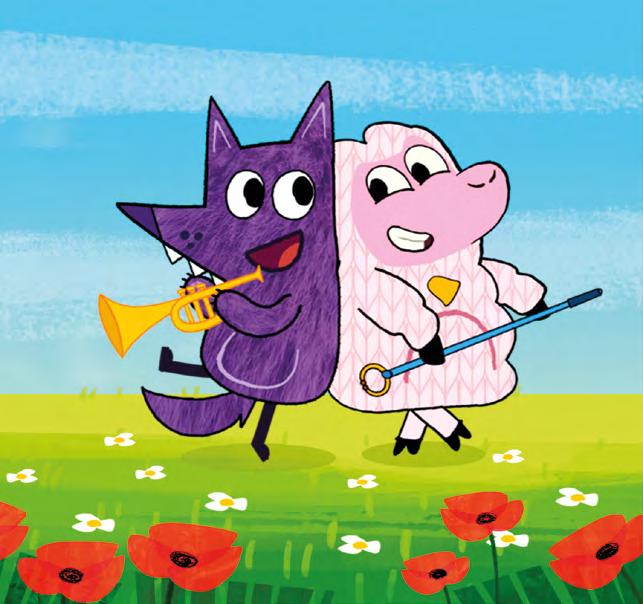
inventive sheep. Aimed at 4–7 year-olds, the series adopts a digital-first approach, including vertical formats, with a test launch scheduled by the end of 2025.
Tuiga & My Life in Versailles – The Movie French distributor Dandelooo presents two titles in Cannes reflecting its international scope and ability to span diverse formats.
Tuiga (39×7’ – 2D), produced by Copa Studio in Brazil and distributed by Dandelooo, is a 4–7 preschool series following a giraffe and her companions Amelia, Nail and Porridge.

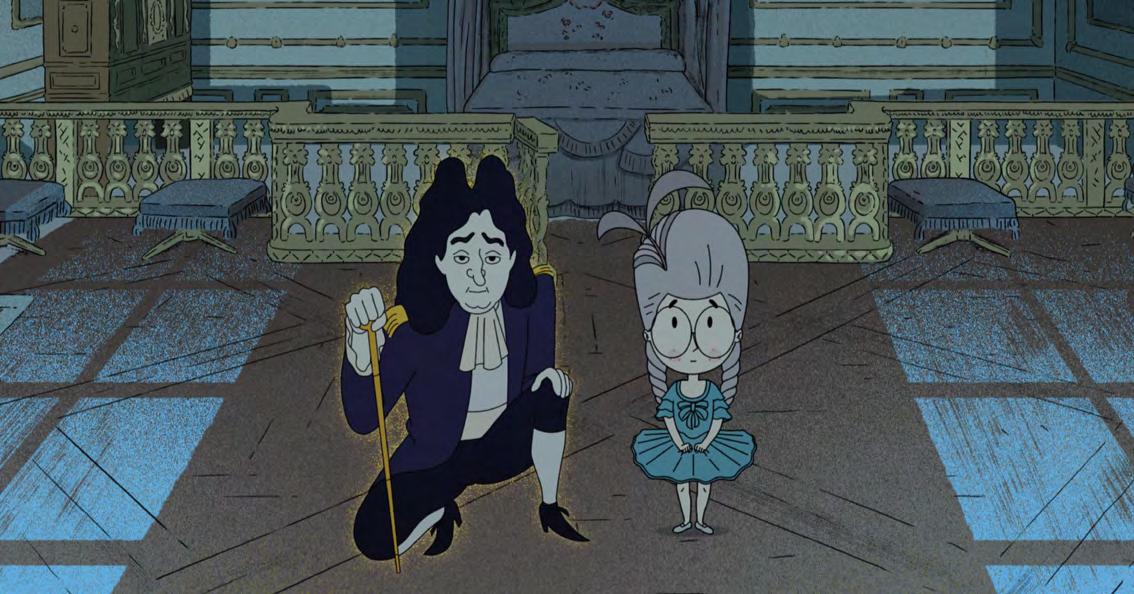
The group undertakes deliveries by hot-air balloon across animal, plant and mineral kingdoms. Supported by Brazilian audiovisual funds and currently negotiating with European broadcasters, the series brings to market themes of inclusion, friendship and diversity, reinforcing Latin America’s presence in global animation.
Alongside preschool serial content, Dandelooo presents My Life in Versailles – The Movie (78’ – 2D), a co-production between Films Grand Huit (France), Mélusine Productions (Luxembourg), Miyu Productions (France) and Xilam Animation (France). Aimed at 6–10 year-olds, the film tells the story of Violet and her uncle Régis, custodian of the Palace of Versailles, in a tale of grief, resilience and new bonds. Designed for cinema release but also destined for festivals and platforms, the film positions itself as an auteur work with international appeal, confirming Dandelooo’s mission to
Whatever You Do... Don’t Laugh!
distribute content combining artistic quality with industrial strength.
Whatever You Do… Don’t Laugh!
Whatever You Do… Don’t Laugh! (60×7’ – 3D) is a preschool learning show turning seriousness into comedy. Targeted at 3–5 year-olds, it assigns a narrator and a stern presenter the task of teaching numbers, colours and shapes — but every attempt is disrupted by slapstick gags and eccentric characters. The result is a mix where learning remains solid but fun becomes irresistible. Co-produced by King Banana TV (UK) and Sinking Ship Entertainment (Canada), with King Banana Distribution handling international sales, the series has already attracted interest from the BBC (commissioning offer subject to contract) and is seeking further broadcasters and partners.


The C-Pops!
The C-Pops!
Born as a spin-off of Chinese animated hit Rainbow Crew, The C-Pops! (26×7’, preschool) is produced by China Bridge Content with Perfect World Animation and, leveraging the strength of the original franchise, aims for a global audience. Starring four band members — Winter, Spring, Summer and Fall — who travel aboard their Song Pods, the series follows their challenges and mishaps, each transforming into a musical performance where songs become the tool to overcome obstacles and celebrate teamwork. Targeted at young children, the show blends music, dance and team values in an immediate and engaging language.
Submarine Jim
With Submarine Jim (52×11’, 2D), Xilam Animation (France) offers a new comedy adventure created by Frédéric Martin for a 6–9 audience. Jim is a young dolphin, naïve yet enthusiastic, who finds himself commanding the first submarine on wheels. Alongside him are Bianca the orca and Cyril the anchovy — a quirky yet tight-knit crew leaving the ocean behind to embark on a journey towards the pristine waters of Fishland. Between improbable missions, eccentric encounters and comic situations, the series explores growth, friendship and the value of responsibility. France Télévisions and Super RTL join as broadcast partners, while international distribution remains with Xilam.
The Greatest Gift: The Wrong Hat
The Greatest Gift: The Wrong Hat (Special 22’ – 3D) marks the Christmas debut of Cloud 10 Studios (USA). Directed by Gary Trousdale and produced by Tracey Dispensa with creative consultancy from Floyd Norman, the Special takes viewers inside a magical Christmas tree where decorations come to life. The protagonist, Chris, is a small dinosaur ornament who has lost his hat. His quest to find it becomes a tender adventure, full of surprising encounters and the desire to save
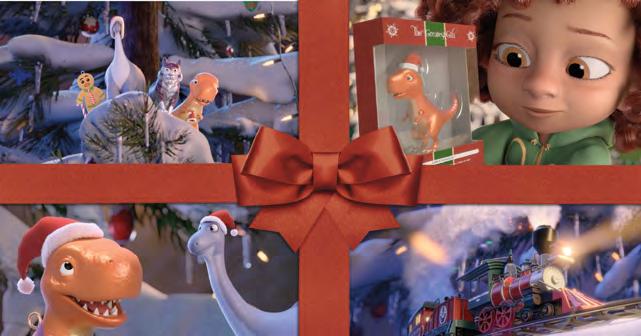


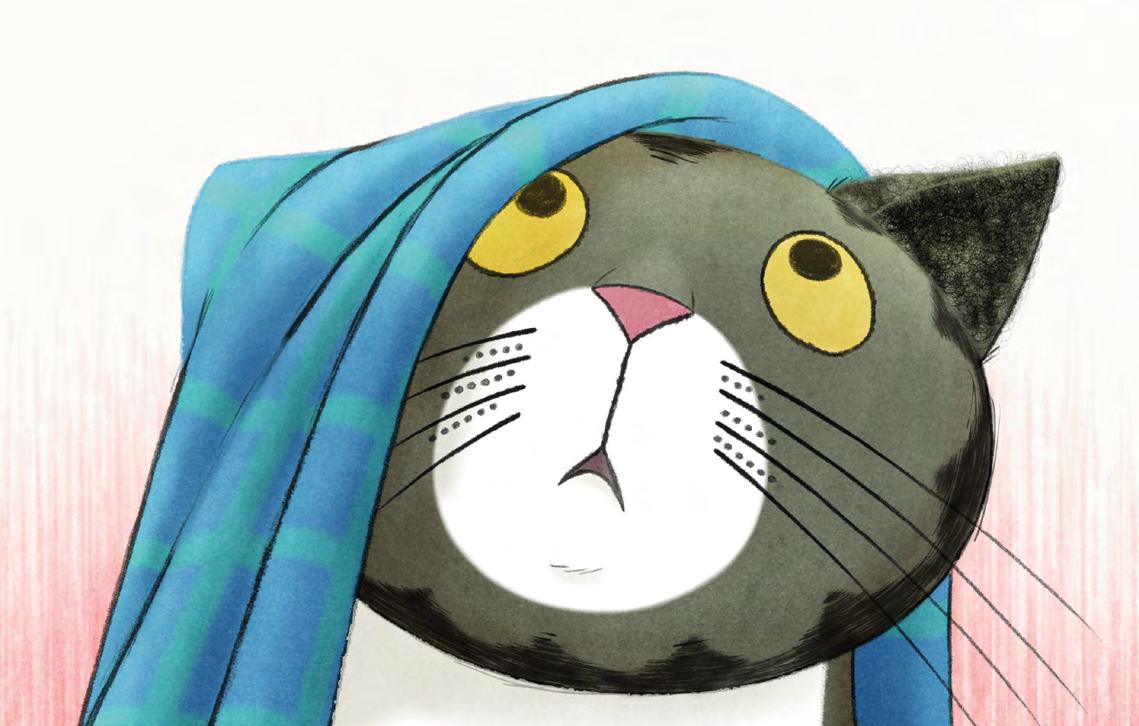

Christmas. With Joyce Miller and Rob Doherty as executive producers and a merchandising plan already underway with Lionel Trains, the title launches a franchise encompassing films, series and live events, positioning itself as a festive evergreen.
The Marsupilamis
The character created by André Franquin returns in The Marsupilamis (52×11’ – 3D), a new animated series produced by Ellipse Animation (France) and Belvision (Belgium). The story follows twins Jade and Mica, who receive three mysterious eggs from their explorer parents and witness the hatching of Marsupilami cubs they must protect from urban threats. Directed by Célestine Jacquel-Plays, with Andrew Barnett Jones and Ciaran Murtagh as supervisors, the project blends classic humour with contemporary sensibilities. With M6/Gulli, RTBF, VRT, RTS and Radio Canada already on board, and Nickelodeon handling international distribution alongside Mediatoon Distribution and Mediatoon Licensing, The Marsupilamis is an ambitious relaunch of a classic, designed to capture both long-time fans and new audiences.
Mog’s Bad Thing
From the classic stories of author and illustrator Judith Kerr comes Mog’s Bad Thing (24’), the animated special produced by London-based Lupus Films, the studio behind The Tiger Who Came to Tea and Kensuke’s Kingdom. Designed for family audiences, the story follows Mog, the Thomas family’s cat, who during preparations for a cat show causes a mishap and hides in the attic, convinced she has ruined everything. It is ultimately her clumsy perseverance that restores harmony to the household. With hand-drawn animation and a warm, humorous tone, Lupus once again renews the visual and emotional legacy of children’s classics.
The Scarecrows’ Wedding
From the best-seller by Julia Donaldson and Axel Scheffler comes The Scarecrows’ Wedding (30’), a Special produced by Magic Light Pictures — the British studio behind The Gruffalo, Stick Man and Room on the Broom. True to its distinctive style while retaining Scheffler’s unmistakable illustration, the story follows Betty O’Barley and Harry O’Hay, two scarecrows

in love, as they plan their wedding, threatened by the vain Reginald Rake. With voice performances from Rob Brydon, Jessie Buckley, Domhnall Gleeson and Sophie Okonedo, the special blends poetry and humour, consolidating the British tradition of prestigious adaptations for family prime time.
Dungeons & Kittens
A new fantasy-comedy saga for kids/tweens, Dungeons & Kittens (12×22’) is a European co-production led by Watch Next Media with Mélusine Studio (Luxembourg, part of the Superprod group), Lunanime (Belgium) and Studio Zmei (Bulgaria). Supported by CNC, Pictanovo, Film Fund Luxembourg, the Bulgarian National Film Center and Région Île-de-France, the series has been commissioned by France Télévisions and pre-acquired by BBC Children’s and Education, DR, RTS, VRT, BNT, RTL and TV5 Monde. Distributed worldwide by Superights, it was created by Clément De Ruyter and Mélanie Duval, directed by De Ruyter and Jérémy Guiter. The story follows four kittens banished from the feline kingdom who embark on a quest for a treasure fallen from
the sky. Adventure, irony and role-playing game references combine in a transmedia universe expanding into books, comics and board games with Gallimard, arriving in 2026.
Pitch: New Voices for the Kids and Tween Audiences
The Cannes programme also draws strength from pitches and market sessions, true incubators of new ideas and production models. Here, emerging content and innovative strategies engage directly with broadcasters and investors, sketching the industry’s future scenarios. Among the finalists of the MIPJUNIOR Pitch Kids-Tweens, titles reflect the breadth of global animation. Yugi Bao (Digitoonz Entertainment, Spain) intertwines mythology and action in an epic battle against monsters and dark forces. From the UK comes The Retrievers (Sixteen South), a comedy mystery set in Paris where Molly and her dog Otis solve cases between humour and adventure. Brazil brings Izzi’s Super Fan Club (Birdo), exploring the world of fandom with meta-narrative irony. Across Africa, the shortform series Ubuntu – Les Ambassadeurs de la Paix (Armada Studio) raises awareness among young audiences on urgent civic and social issues — from fake news to gender equality. Closing the line-up, China offers Fox Fairy (Buddha Studio), which combines fantasy and Eastern folklore in the encounter between a demon fox and a fallen god. These pitches provide concrete signals of how the industry continues to evolve its languages, offering a panorama where the kids-tween audience remains critical, curious and international. Global themes intertwine with the need to create formats ready to travel across platforms and markets, making MIPJUNIOR’s competitive section a genuine laboratory where broadcasters and investors spot the content set to shape upcoming seasons.
With its 2025 edition, MIPJUNIOR and MIPCOM reaffirm the role of animation as a major driver of transformation in the global audiovisual sector — a field capable of speaking to diverse audiences while navigating increasingly international production and distribution strategies. Under the claim The Transformation Starts Here, Cannes reasserts itself as the central platform where creativity and industry meet, anticipating the content destined to define the coming television and digital seasons worldwide.


CEE ANIMATION
The 13th edition of the CEE Animation Forum will take place November 4-6, 2025, at Moving Station in Pilsen, Czech Republic, continuing its role as Central and Eastern Europe’s leading animation industry event.
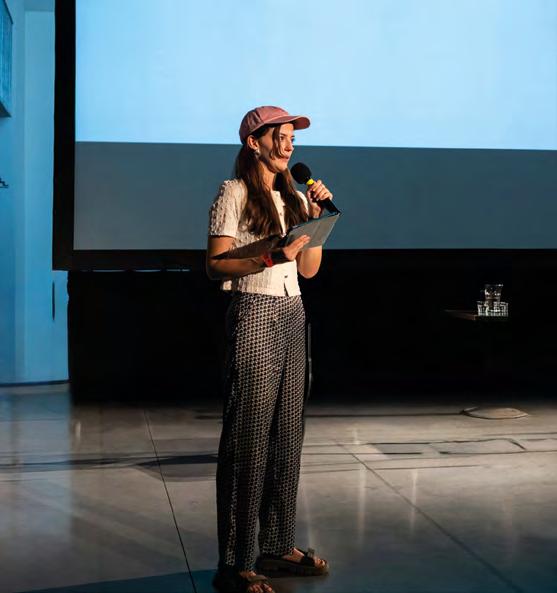
The Forum focuses on three key components: pitching competition, market activities, and one-on-one meetings, providing comprehensive opportunities for industry professionals.
The pitching competition includes four distinct categories. Feature films require a minimum 60-minute runtime and accept projects in concept, development, or production stages, with seven-minute pitch slots. Series and TV specials include web and television content with at least a 20-minute length, covering all development stages except concept, and are also allocated seven minutes for presentations.
Short films, limited to 20 minutes, take part in five-minute


pitching sessions that cover all development phases except concept. Student short films follow the same guidelines, giving emerging talent equal opportunities.
The Market acts as an innovative addition to traditional pitching, providing dedicated space for animation professionals to showcase projects and gather valuable feedback from decision-makers. This platform welcomes projects at any stage of development, production, or distribution, including finished works.
Market Accreditation provides early access to reservation systems, enabling advance scheduling of meetings with established European professionals, including producers, distributors, sales agents, broadcasters, scriptwriters, festival programmers, and market representatives.
The Forum attracts established CEE, EU, and international producers, creatives, and industry agents from commercial, NGO, and public institutions. The invited audience includes

To learn more about CEE Animation to register and be part of its rich programme, go to www.ceeanimation.eu.
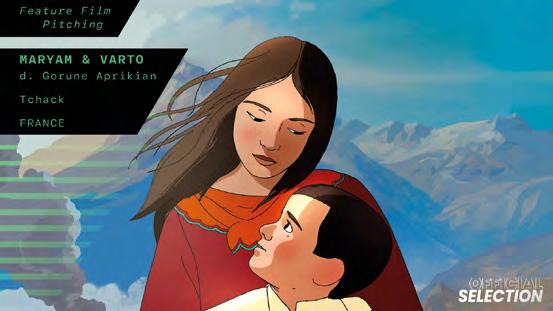
decision-makers such as producers, sales and distribution representatives, public and private broadcasters, scriptwriters, festival programmers, film institution representatives, and market event delegates, as well as regional animation professionals, press representatives, and students.
Strong Partnership Foundation
Creative Europe MEDIA offers financial aid, with cofinancing from the Czech, Hungarian, Polish, and Slovakian governments through Visegrad Grants from the International Visegrad Fund, whose goal promotes sustainable regional cooperation in Central Europe.
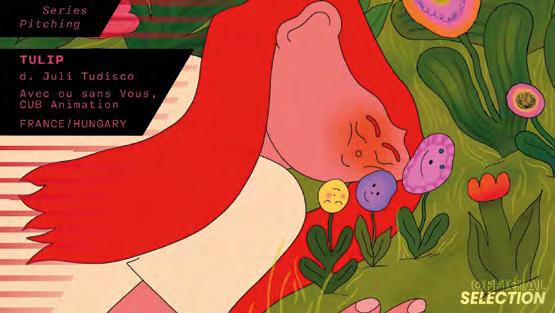
CEE Animation’s Green Animation platform promotes environmental sustainability in animation production. Like other industries, animation has an environmental impact through energy use and physical materials affecting our planet.
Whether discussing digital workflows or stop-motion projects involving physical puppets, props, and sets, every creative step affects the environment. Recognizing this reality through measurement and understanding makes finding sustainable working methods more urgent while maintaining the creative essence.
The platform consolidates existing structures, tools, and initiatives from across Europe and worldwide that support the green transition of the animation industry. It shares ongoing research and frameworks shaping the future of sustainable animation, including case studies and insights from productions and creators leading environmental responsibility efforts.
CEE Animation proudly participates in the Green Animation Working Group, aiming to establish universal standards for sustainable practices in the animation industry. This group, formed by Ecoprod (France), Green Film (Italy), and CineRegio—representing over 50 European regional film funds—develops practical, verifiable, and adaptable criteria to serve as common industry standards.

Year after year, animation’s presence at MIA Market grows, held each October in Rome, and promoted by ANICA (Italian Association of Film, Audiovisual, and Digital Industries), along with APA (Italian Audiovisual Producers Association), under the direction of Gaia Tridente.
Among the various initiatives organized, EAJ aims to highlight the Animation Pitching Sessions, called ANYSHOW. It is an international showcase focused on eleven animated productions nearing completion, seeking sales and distribution opportunities. This exclusive event features animated formats designed for television, digital, and theatrical distribution across all genres and audiences.
The Great Dreamscape (France, Belgium), a TV special, a oneoff television format for ages 6 to 9, directed by Rémi Durin, produced by Autour de Minuit, and co-produced by Kawassa Film. Andrea is supposed to play the Blue Bird in the school play, but overwhelmed by stage fright, she runs backstage and finds refuge in a golden palace thanks to a magical cloak. Bizarre friends and a special bird help her overcome her fear and return to the stage. Italy is well represented with four projects in the selected


roster, two targeting adults and two for children. The feature film Hope. An (almost) Gypsy Fairytale (Italy, USA), written and directed by Monica Manganelli and produced by Paolo Artoni, Qreactive (Q&Q Group), traces family history through the memories of Hope, a Romani girl who was blinded by Nazi experiments.
The web series Theorised: Season #1 Race Historicised (Italy, Qatar, UK), directed by Midiaou Diallo, Héloïse DorsanRatchet, Williams Zouzou, Stefano Sottile, and Pierangelo Pirak, Pomona Pictures, who also acts as producer, along with author Marcela Pizarro, Goldsmiths, features the pilot episode Race Historicised: Epistemologies of Colour. It explores and tells the stories of anti-racist and anti-colonial thinkers W.E.B.

Du Bois, Aimé Césaire, Sylvia Wynter, and Frantz Fanon, produced for Al Jazeera Media
For the entire family, the edutainment TV series The Recipes of Arthur & Kiwi-The Italian Cuisine (Italy), created by Andrea Zingoni (T-Rex Digimation) alongside Vernante Pallotti (Gastonia Motion), follows the dog Arthur and his feathered assistant Kiwi as they explain regional Italian recipes with humour, promoting a healthy eating lifestyle.

For the youngest viewers, the adventures of two seahorses are featured in Nip & Lena-Fin Friends (India, Ireland, Italy), directed by Enrico Paolantonio, produced by Evelina Poggi and Sabrina Callipari at Lynx Multimedia Factory, and co-produced by Telegael and DigiToonz
International TV series include Fizzy and Suds (Australia), where two effervescent bubbles take children on a journey of discovery, exploring new passions in each episode. The series is written and directed by Gemma Lee, Michelle Lehman, Rebecca O’Brien, Kimberly Melville, and Ramana DienesBrowning, and produced by Sam Griffin, Nicole Sullivan, Kim Steblina, and Chris Hilton (Tilt Media) for ABC Network

Hidden Islands (Jagten På Nuna) is from Denmark. Directed by Peter Egeberg and produced by Sarita Christensen from OYA Copenhagen, the film tells the story of three children who uncover a secret on a mysterious island that could save the world. The epic sci-fi Star Raider (France), by Morade Rahni and produced by Reginald De Guillebon (Les Armateurs), follows an art thief returning to action in the space city of
Confluence, where no one knows that behind the mask is Oskar, a thirteen-year-old student. The historical-satirical comedy Roman Pigeons (Italy, Israel), produced by Alexander Boyarskiy at Polydont Films, and directed by Konstantin Bronzit, reimagines the history of the Roman Empire as we know it.
Canada is also well represented in the 2025 selection. Lydia and the Mist Rider is directed by Emilie Rosas, Philippe

Arseneau Bussières, and Nancy Florence Savard, who also serves as producer, as 10e Ave Production, and presented by Attraction Distribution. It tells the story of eleven-yearold Lydia, who searches for her brother Thaddeus after the Enchanter kidnaps him in the Misty Sea.
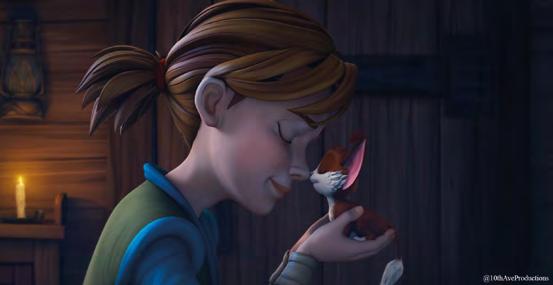
From the 2024 MIA Co-Production Forum selection comes Parts of a Bigger Story (Morceaux d’Histoire) (Canada, France), directed by Chrystelle Maechler and Sasha McIntyre, and produced by Chrystelle Maechler (Productions Inc), Daniela Mujica (Productions Ocho), and Sébastien Onomo (Special Touch Studio). In each episode of this hand-animated docu-fiction, scenes of everyday life reveal the stories of ordinary people who were once refugees.
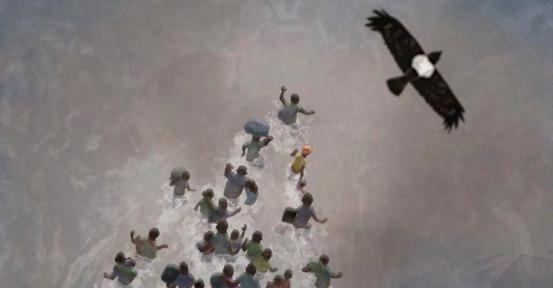
To learn more about MIA go to https://www.miamarket.it/en/
By connecting emerging talent with international legends of industry, the conference is equipping a new generation of storytellers and powering the region’s rise as a creative powerhouse.
From its origins as an ambitious undertaking, the Sharjah Animation Conference (SAC) has quickly risen in status to become a crossroads for the global animation industry, and a bridge linking talent and opportunity across the Middle East, Africa, Asia, and well beyond. Today, as international audiences seek fresh voices and authentic stories, SAC’s impact is unmistakable. Sharjah has emerged not merely as a regional hub, but as a powerhouse that is actively fuelling creative industries and equipping a new generation of animation, media, and illustration professionals for the world stage.
Sharjah’s longstanding reputation as a pillar of Arab culture finds new meaning in the inspiring halls and expert-led sessions during SAC, where the East converses with the


West, and the creative energy of the Global South meets the established traditions of the North. Organised under the stewardship of the Sharjah Book Authority (SBA) and led by Executive Director Khoula Al Mujaini and Artistic Director Pietro Pinetti, the conference, a now cherished annual event on the global industry calendar, has become a creative force for cross-continental collaboration and progressive industry growth, nurturing local talent to take its place alongside international icons.
“Sharjah has established itself as a centre for cultural and creative initiatives, and SAC plays a role in expanding opportunities for professionals in animation. By bringing together international and regional industry figures, the event facilitates knowledge exchange and supports the growth of the sector in the Middle East.”
- Khoula Al Mujaini, Executive Director of SAC -
The 2025 Sharjah Animation Conference, held in May, showcased the emerging role SAC is playing in the global creative industries. The event was headlined by legendary Disney animators Tom and Tony Bancroft, renowned for their iconic work on Mulan, Aladdin, and The Lion King; Studio Ghibli artists Masayuki Miyaji and Tamiya Terashima, alongside acclaimed character designer Sandro Cleuzo, known for Anastasia and Tarzan
The conference also featured Japanese master animator Koji Yamamura; Mohamed Ghazala, Vice President of the International Animated Film Association; Brian O. Wilson, a pioneering force in African animation through Zero Gravity Studios, brought an essential perspective from industries in the global south, complemented by leaders from Warner Bros. Discovery and SAE Institute. This star-studded lineup reinforced SAC’s mission to bring the world’s best talents to the UAE, while providing an exclusive platform for emerging artists to connect, learn, and thrive in the animation industry.
What distinguishes SAC is its blend of world-class lectures and workshops, exclusive networking opportunities, and

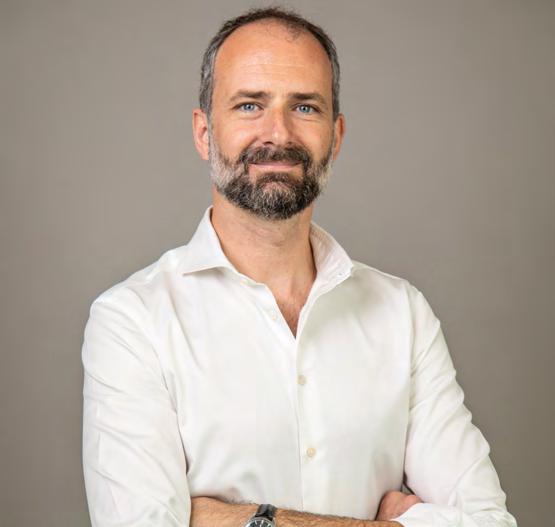
a supportive environment where producers, artists, and investors openly share knowledge and form partnerships and licensing deals. For participants from Sharjah and across the region, the conference is a launchpad, driving skill development, creative entrepreneurship, and direct access to a worldwide network of decision-makers.
With the entertainment and digital content sectors projected to reach record investments across the Middle East and South Asia in the coming years, SAC’s new B2B market; set to start in
“SAC is an international laboratory. It’s not just about content; it’s about generating ideas, relationships, and opportunities. Many of our projects start as conversations there.”
- Pietro Pinetti, Artistic Director -
2026; is designed to accelerate international co-productions, licensing, and executive training. This move firmly positions Sharjah as a marketplace for industry innovation and nextgeneration talent scouting, making it an essential waypoint for business, talent discovery, and creative exchange.
Each edition of SAC draws growing numbers of students, educators, and professionals from over 30 countries; and SAC is establishing Sharjah’s position at the pinnacle of animation and media arts; uniting continents, nurturing talent, and ensuring that the stories and creatives shaping tomorrow’s industry are empowered, connected, and ready for a global stage.

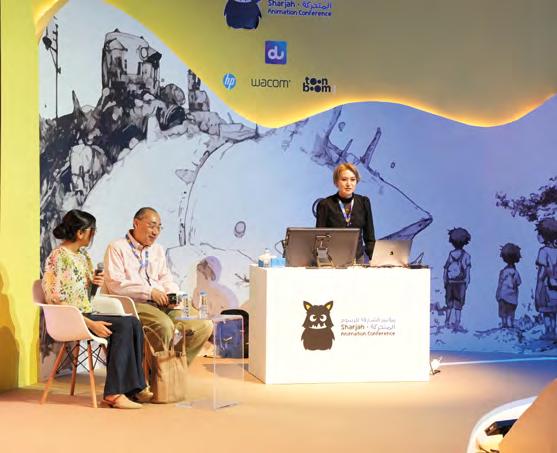

By Cristina Angelucci
For the second consecutive year, EAJ has been a Media Partner of Young Horizons. This event provides high-quality panels and pitching sessions of innovative European projects.
In this article, we share the animation projects showcased during the lively and well-attended Pitching Day. The projects listed are at various stages of financial and production development, and they are seeking funding, co-producers, distribution partners, sales agents, broadcasters, VOD platforms, and streamers.
The Babirusa (70’, France) is an animated film, produced by Tchack and co-produced by ARAPROD. Aimed at children aged 7 to 9, it is a comedy and adventure. When his best friend, Samuel, falls ill, Jules embarks on a quest to find the Giant Babirusa, a strange, magical, pig-dirty, irreverent, and joyful creature who believes he has healing powers.
Children of the Wind Mother (80’, Hungary) is another animated movie aimed at children 7-12 y.o. The producer is Filmfabriq/Ulab, and the film is in the fantasy genre. The siblings, Alma and Sebi, get trapped on a stormy night in the world of ghosts. Alma’s fate is to stay and take the place of Windmother, their great-grandmother, who is on her deathbed. Against this order, they undertake dangerous adventures in the magical forest to find and save Windmother from dying.
Not only cats, but also dogs deserve their own TV series. This is the case with the preschool animated series Cloudy & Stormy (52x7’, Poland). Produced by Laniakea Pictures, it

tells the story of two dog sisters who turn everyday moments into over-the-top adventures. Designed as a true cross-media project, Cloudy & Stormy naturally expands across animation, games, social media, and consumer products.
Drone City (26 x 11’, France, Ukraine, The Czech Republic) is another animated series pitched in Warsaw by Monde et Media TV, co-produced by Caffeine Films Production. The TV series targets kids and features plenty of adventure and

The industry component of the TAURON Young Horizons International Film Festival comprises programs and projects designed to support and promote the development of films and series for young audiences. These initiatives include the Young Horizons Industry, an international co-production forum, and the Young Horizons Lab, which features script development workshops.
Megi Zigi Dance (52x7’ Poland) is an animated series produced by Animoon, addressed to preschoolers with a central focus on dance. Megi and Zigi are best friends, and together they run the popular online channel Megi Zigi Dance, where they share their dance adventures.
Onno & Ontje – Friends are the Best Gift (72’, Germany) is a preschool movie project submitted by Blaue Pampelmuse
The film explores themes of friendship, sharing, and the true spirit of Christmas. On a quiet island in the Wadden Sea, the lonely ex-fisherman Onno meets cheerful little otter Ontje, who washes ashore unexpectedly. As a snowstorm approaches, Onno must open his heart to save the holidays for his new best friend and himself.

& Ontje - Friends are the Best Gift comedy. Drone City is a place where drones, robots, and humans live in harmony, and Didi is their best friend, the Drone Doctor.
The Young Horizons Industry is a hub for film professionals passionate about creating films and series for young audiences. Its main event is an annual international co-production forum where over 300 distributors, sales agents, broadcasters, platforms, festivals, film funds, investors, producers, and creators gather during three days of conferences and pitches.
The goal of the forum is to help creators connect with potential partners. By bringing together projects and industry professionals, organizers create a space where exchanging ideas and forming partnerships is possible.
The Rusty World – Steel Hearts (88’, Denmark, Croatia, Slovenia, France, Spain) is an animated movie project set in the year 2075. In an epic adventure, we follow four children who want summer holidays, but when they crash land in


no-man’s land, where only wild robots live and nature grows unchecked, they find themselves on a life-changing quest. Targeted at children aged 7 to 12, the project offers a mix of adventure, action, science fiction, and comedy, produced by EyeCandyFilm and co-produced by Poster, Invida, and People Moving Pixels
Among the most enjoyed projects for its funny pitch and original story, Socks (71’, Poland) is a theatrical animated film produced by Page to Pictures and aimed at children aged 7 to 9. Set in a world seen from the perspective of socks, it is a story about Sock Bozenka, who, while looking for her lost sister Grazyna—a sock to match— learns that chasing her dreams can be much more rewarding than staying within the boundaries assigned to us.

Valentino the Dream Sheep (26 x 7’, Germany, Sweden) is an animated series for preschoolers and kids aged 7-9 years. Produced by Sideways Studios and co-produced with Zooper Film, it is a comedy about the magical world of Sheepland, home to all the fluffy white sheep that children count when falling asleep. All except one. Valentino is the only black sheep—and he’s different from the others. While the white sheep quietly hop along, Valentino dives headfirst into children’s dreams, where he sees himself as a brave little hero—his mission: to help kids conquer their nightmares.
This section includes projects that are in a more advanced stage of the production process. The animated film Aliens FC (97, Cyprus, United Kingdom) is a comedy about a British family mistaken for famous soccer players by a pair of clumsy aliens. The aliens take Billy, Sally, Mom, and Dad across the galaxy to help save their quirky football team from being relegated. Produced by Magic Frame Animation and co-produced by Creation Entertainment Media, Aliens FC is currently in pre-production. This movie is for children and for the entire family.
If you’re looking for new and innovative projects to invest in and want to learn more about this enjoyable boutique event, wellorganized in a friendly environment, visit the website https://industry.younghorizons.pl/ and mark your calendar for next year!

Lastly, the animated movie Like! (85’, Spain) is currently in preproduction. Produced by Capitán Araña, the film follows Andrea Wallace, a 13-year-old girl who, inspired by her father, dreams of playing on her school’s football team. But Mia, the head cheerleader, doesn’t want anyone to outshine her. Mia attempts to sabotage Andrea by hacking her mobile phone with help from her loyal sidekick Ashley. What Mia and Ashley don’t realize is that Andrea’s smartphone is loaded with bytes that will do whatever it takes to protect her. The movie is an adventure aimed at kids and teenagers.



RIGA IFF
Based on the mind-blowing success of Flow, the National Film Centre of Latvia, Latvian Animation Association, and Riga IFF are organising the Baltic Animation Meet-Up.
The event will take place as part of the 12th Riga International Film Festival Industry Programme (Riga IFF FORUM), scheduled for October 23–24, 2025. It will include keynote speeches by Christian Jeune, Un Certain Regard (France), and Signe Baumane (USA), as well as case studies and presentations from twelve leading Baltic animated film production companies.
Over the past decade, Baltic animation has attracted global attention. The short film Sierra (2022) by Estonian director Sander Joon and My Marriage Project (2022) by Latvian director Signe Baumane were shortlisted for Oscars, alongside notable works by other Baltic artists. The success of Latvian animation Flow (2024), with over 70 awards including an Oscar, highlights the region’s rich, dynamic, and tradition-filled artistic environment.
Attendees at Baltic Animation Meet-Up can explore three case studies from Latvian and Czech animation. Matīss Kaža and Gregory Zalcman will discuss Flow’s international success, illustrating how it could shape the future of independent animation. Directors Lauris and Raitis Ābeles will share insights into their upcoming feature film, Dog of God (2025), which translates history and myth into film, pushing narrative


and visual boundaries without the aid of artificial intelligence. Producer Martin Vandas will discuss the creation and distribution of the Czech co-production Tales from the Magic Garden (2025), as well as approaches to themes such as mourning and death in children’s literature.
The event’s main highlight, the Baltic Animation Studio Presentations, will showcase twelve leading studios from Latvia, Lithuania, and Estonia. Studio representatives will share their creative visions and preview upcoming projects. Participants include Atom Art, Animācijas Brigāde, Ego Media, and Studija Kokles from Latvia; Akis Bado, Art Shot, Broomfilms, and Kadrų Skyrius from Lithuania; and AAA Creative, A Film Estonia, Nukufilms, and RebelFrame from Estonia
To learn more about Riga IFF FORUM, go to https://rigaiff.lv/lv/forum-2025/

ASIA TV FORUM & MARKET
By ATF Editorial Team and Ties That Bind
Entering its 26th edition, ATF (Singapore, 2—5 December) has evolved alongside Asia’s rise on the global entertainment content stage, establishing itself as Asia’s must-attend entertainment content event.
Asia’s Entertainment Content Landscape
According to Ampere Analytics, the top genres on APAC SVODs continue to be romance, drama, and crime & thriller, with over 50% of such content originating from the region. This also applies to children & family, and comedy.
As new business models for engaging audiences emerge, the field of branded entertainment seems to be thriving across various markets. This observation parallels that of coproduction.
The relentless consumption of content across Asia has been fertile ground for the new and perceptive. While micro-dramas have been gaining traction for a few years, 2025 is expected to be pivotal for this trend that has become a global obsession.
ATF Market
The ATF Market is international, featuring diverse content and attendees from over 60 countries and regions.


Feature Films has become a prominent genre that many registered buyers are eager to acquire, with several noting that the demand for it exceeds that for series. Micro-dramas, miniseries, and co-productions are also increasing in importance among registrants’ top priorities.
ATF Leaders Dialogue
The Leaders Dialogue reflects Asia’s triumphs while discussing strategies needed to advance businesses — quickly, micro-drama, and telcos boosting their nonconnectivity revenues.
Sessions also feature platform dynamos and leaders from successful markets. The lineup continues to expand in the financing segment as the industry advances in non-traditional financing for most projects.
ATF 2025 has also curated exclusive analyst sessions that focus on Scripted, Unscripted, Co-production, Anime, and
Kids, along with a session on strategic industry overview and a market analyst presentation on financing.
Conference, Pitches, In-development, and Showcases With a more intimate setup, the in-development sessions, running parallel to the main stage program, will cover Masterclasses in micro-drama, financing, production, and monetization. The Mediacorp Co-production Pitch refocuses on collaboration, while the IP Accelerator highlights projects across genres and IPs. In tandem, the Horror Pitch with EST N8 continues its search to be haunted by great tales from Asia.
A highlight is the Animation Pitch that unites Asia and Europe. Focused on adult animation, the ATF x TTB Animation Lab & Pitch offers a unique environment where creative projects and industry players can connect in ways that wouldn’t happen otherwise. The market’s scale, diversity, and openness to new formats give participants valuable exposure to commissioning editors, sales agents, and distributors genuinely interested in adult animation.
ATF has also provided a visibility boost that’s essential for early-stage projects, helping to facilitate access to future distribution and co-production opportunities through meetings held during the pitch.
Adult animation is one of the fastest-growing and most dynamic sectors in today’s audiovisual market, yet it remains significantly less saturated than children’s content. That makes it an ideal platform for new voices and unconventional storytelling. This trend is particularly strong among viewers accustomed to rich, layered narratives. Additionally, international markets, such as France, the U.S., South Korea, and Japan, have been investing in adult animation for years. European funding schemes, including Creative Europe and CNC Talent, now support this niche.
Asia holds a distinctive and influential role in the global animation scene. Countries such as Japan and South Korea have long been pioneers in adult-focused animation, creating rich traditions through anime, webtoons, and graphic storytelling that combine philosophy, genre conventions, and visual artistry. Emerging markets, such as China, Thailand, and India, are now investing in adult animation with increasing ambition—bringing local stories into formats that appeal to a worldwide audience.
To learn more about ATF and to register, go to www.asiatvforum.com

Thanks to the proliferation of digital platforms and social media, Asian animation is reaching audiences far beyond regional borders more freely than ever. Additionally, coproductions between Asia and Europe or North America are growing, fostering new creative ecosystems that blend cultural specificity with universal themes.
In 2025, attendees can expect an expanded edition of the Animation Pitch, featuring greater international coverage and deeper industry involvement, strengthening the connection between Asia and Europe, while also opening additional channels toward North America.
Additionally, in partnership with the National Film Centre of Latvia, Matīss Kaža, producer and co-writer of the Oscarwinning animated feature Flow, will reveal all the secrets of their unique development and production journey.

Why The European Animation Journal is different and its added values:
• It is the first publication to promote companies, talents and events which make unique the rich world of European animation, as no one else has done in the past.
• It has an extensive network of partner events and a rich database of industry professionals worldwide.
• It aims to give a global exposure to the European industry, helping to bridge it with the rest of the world.
• Its content is curated by a European team of journalists, giving voice to the protagonists of animation community.
• All news and insights are delivered through its media ecosystem, from website to newsletter, from social pages to digital/paper magazine.
• The world of animation is brought into contact with ancillary and related worlds such as publishing, licensing and toys.
• Media Partner of +20 international events, including conferences, markets and festival in Europe, Middle East and Asia
France
Riga IFF - Baltic Animation
Cartoon Springboard
International Film
and Market
CEE Animation
Cinanima
American Film Market
Cartoon Business Asia Television Forum
Latvia
www.mipjunior.com
www.mipcom.com
rigaiff.lv/en/forum-2025/baltic-animation-meet-up
www.cartoon-media.eu/springboard tiffcom.jp/en
ceeanimation.eu/forum/2025-cee-animation-forum/ cinanima.pt/en/presentation/ americanfilmmarket.com/ www.cartoon-media.eu/business/ www.asiatvforum.com/
Write to info@brands-media.com to llearn more how to promote your productions, submit your editorial proposals, invite us to become media partner of your event, or simply keep following us!

